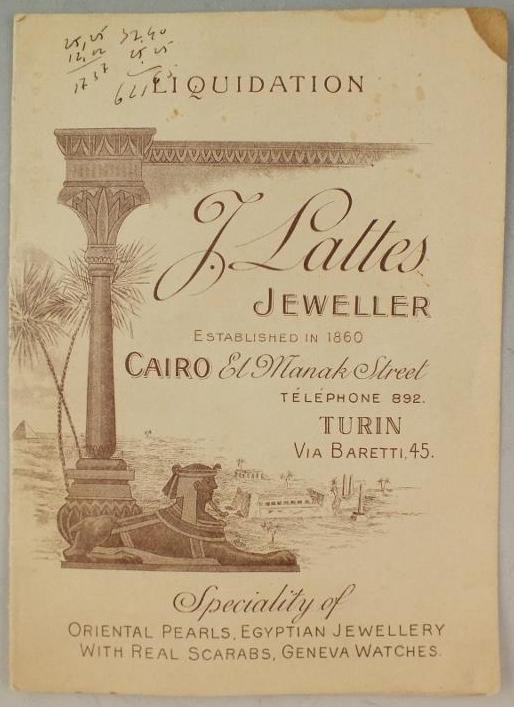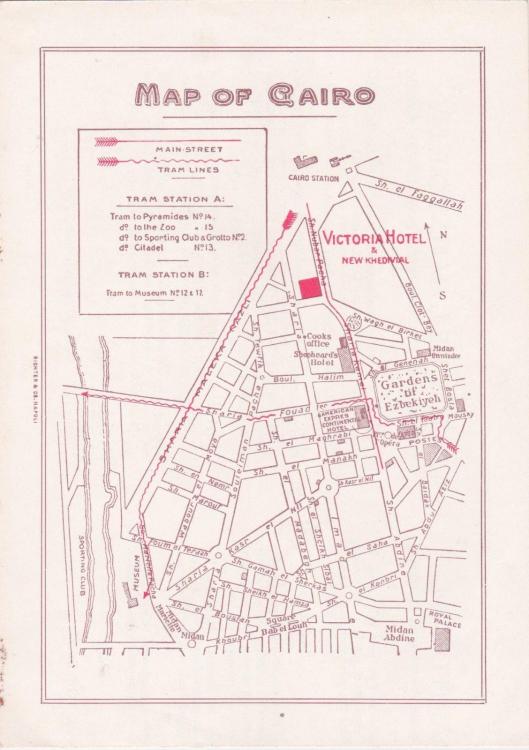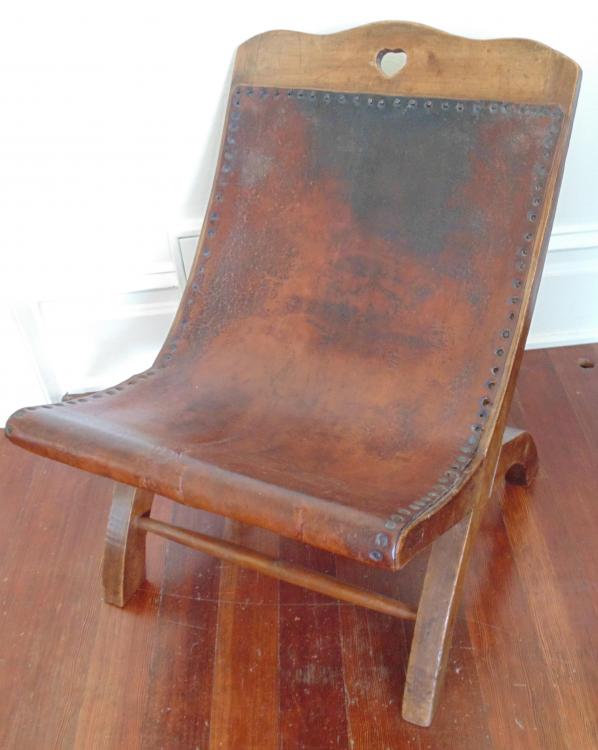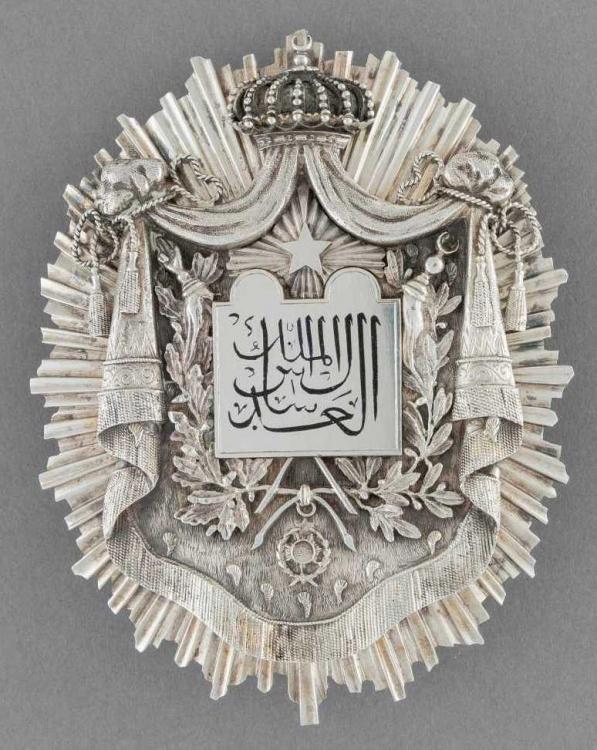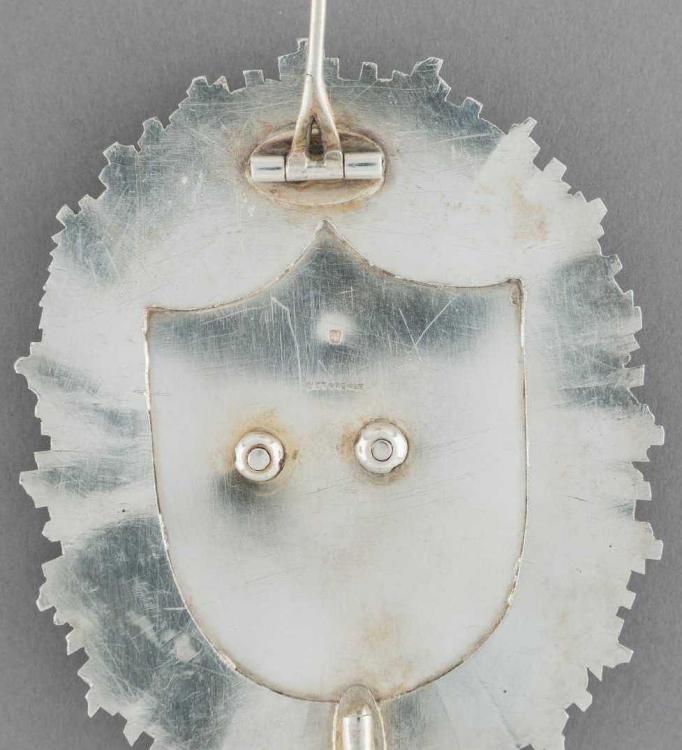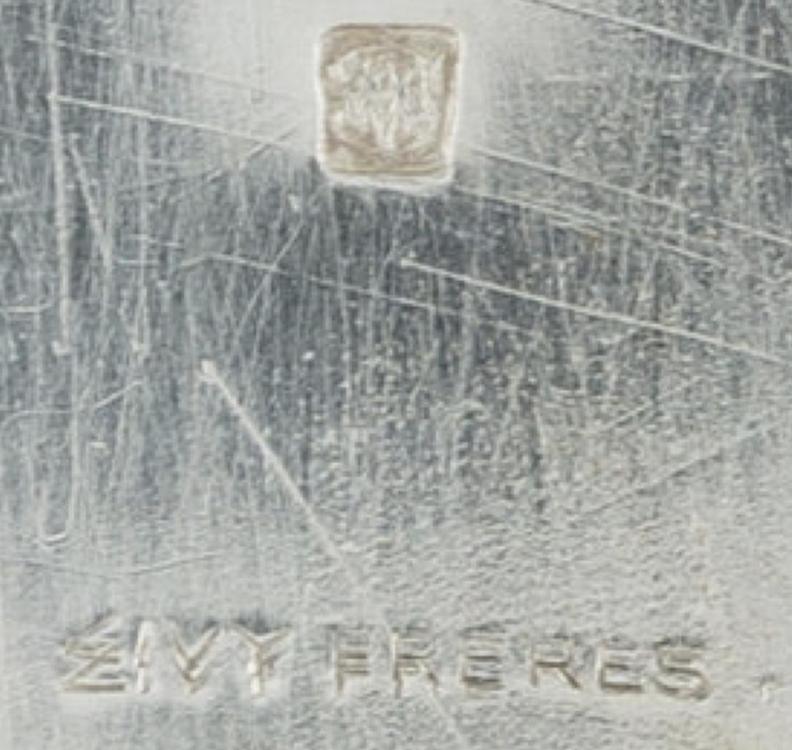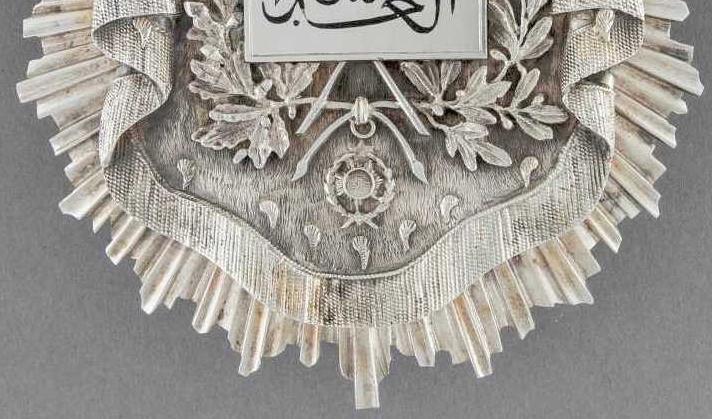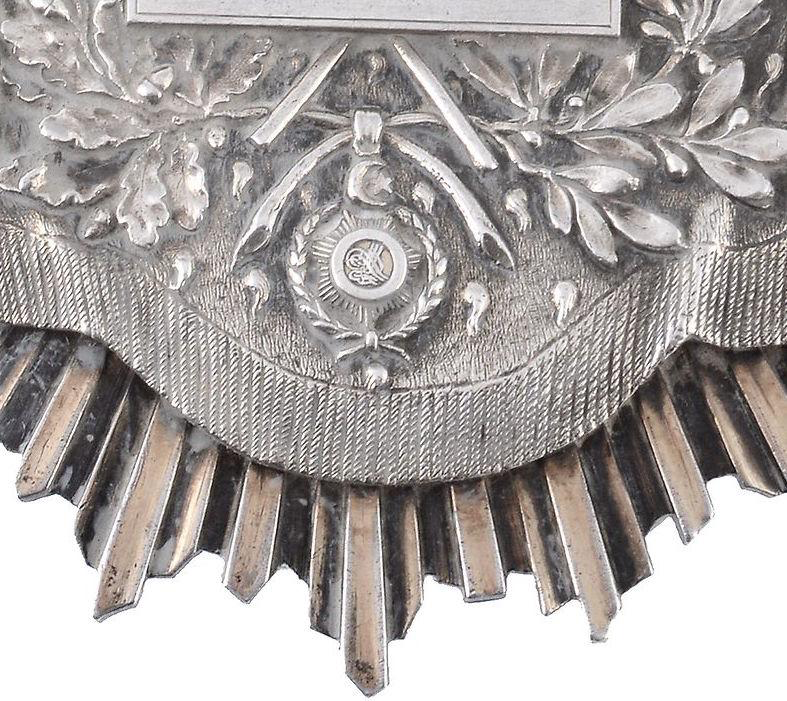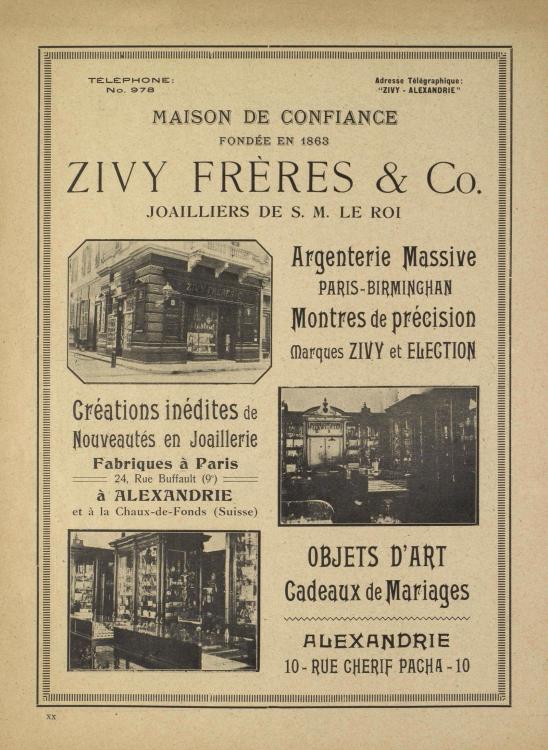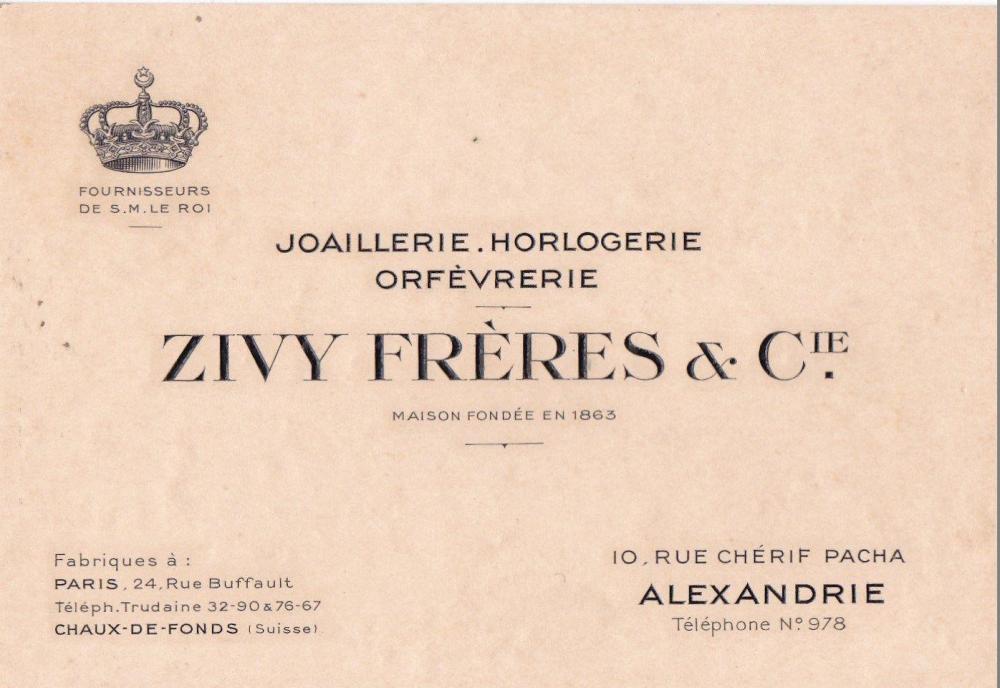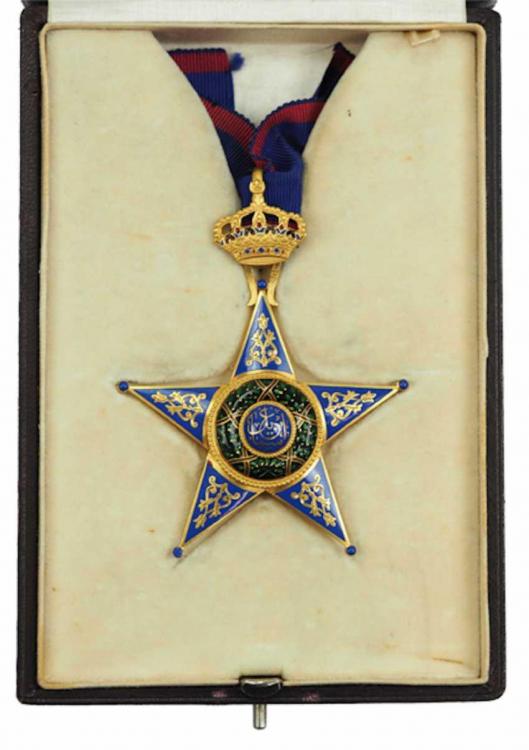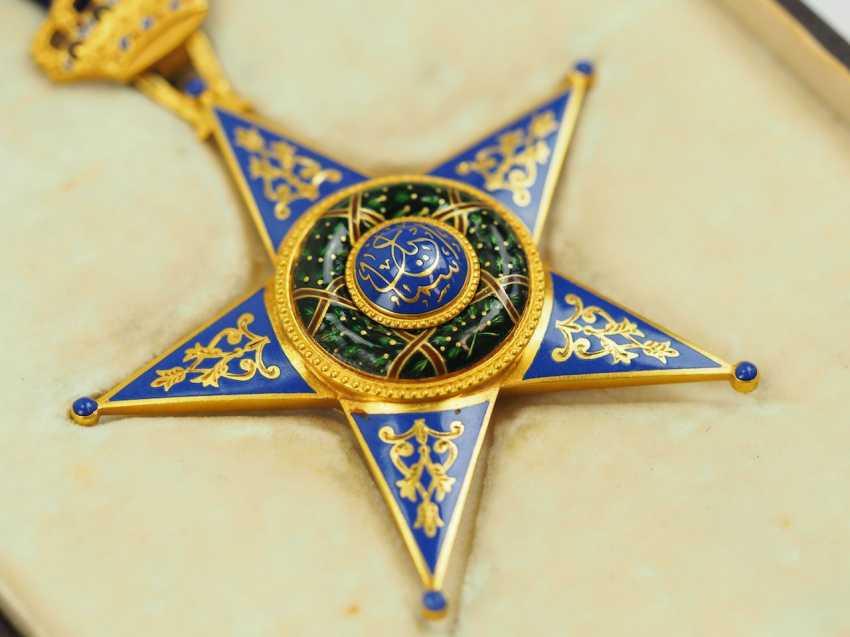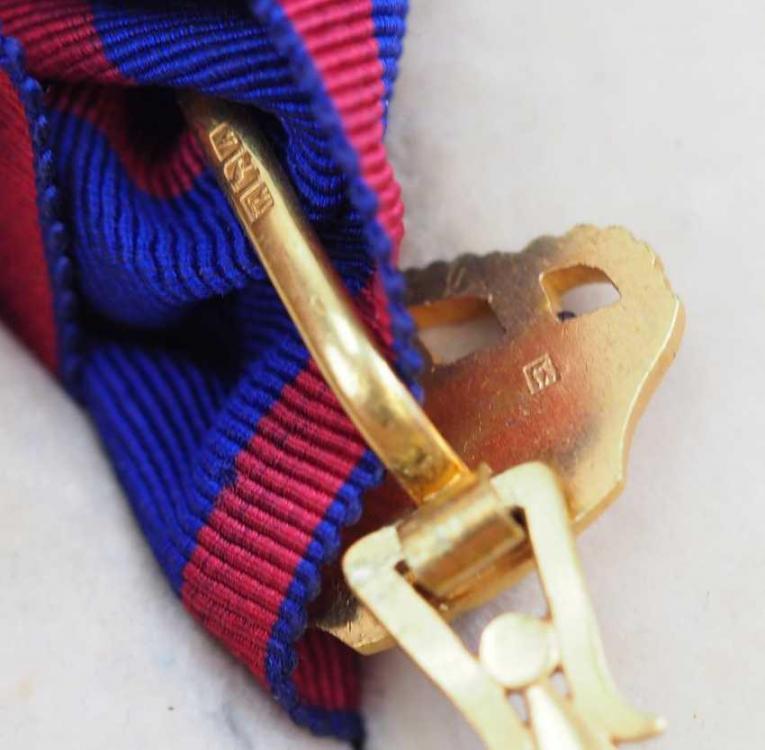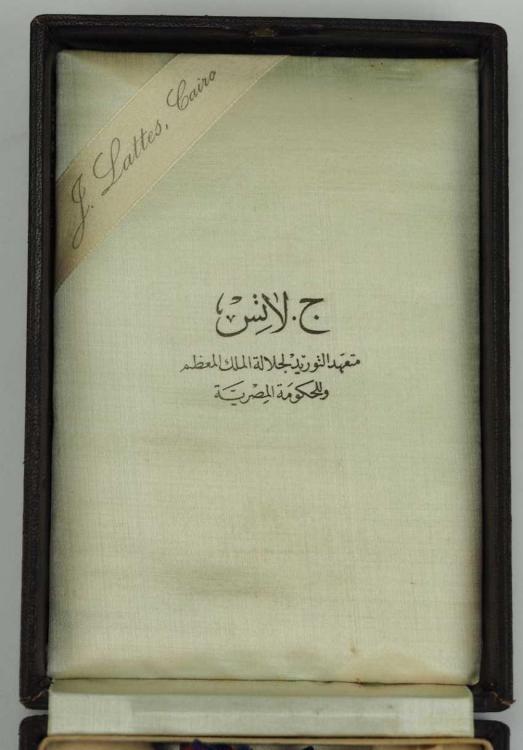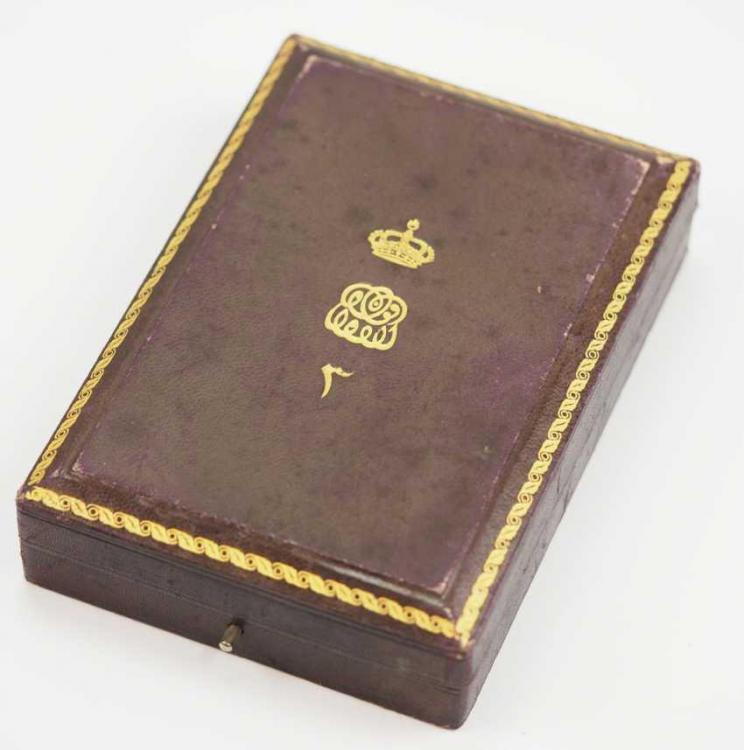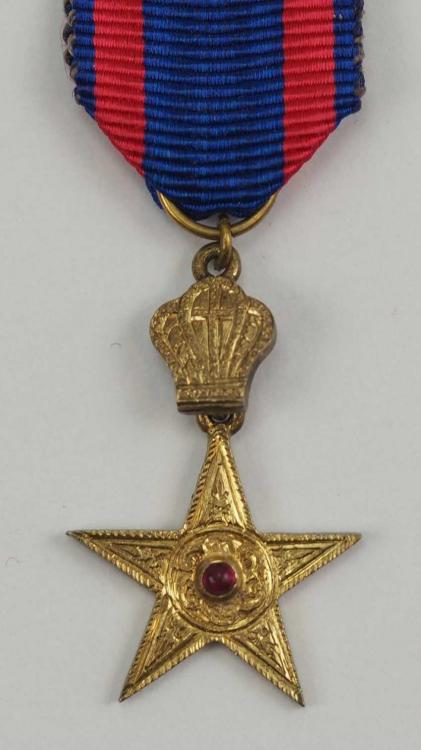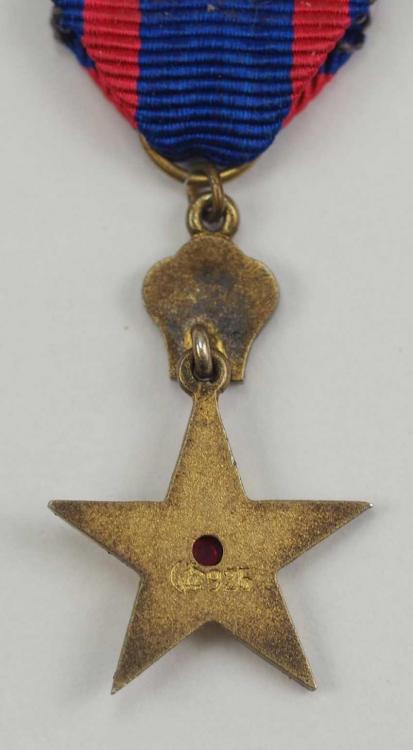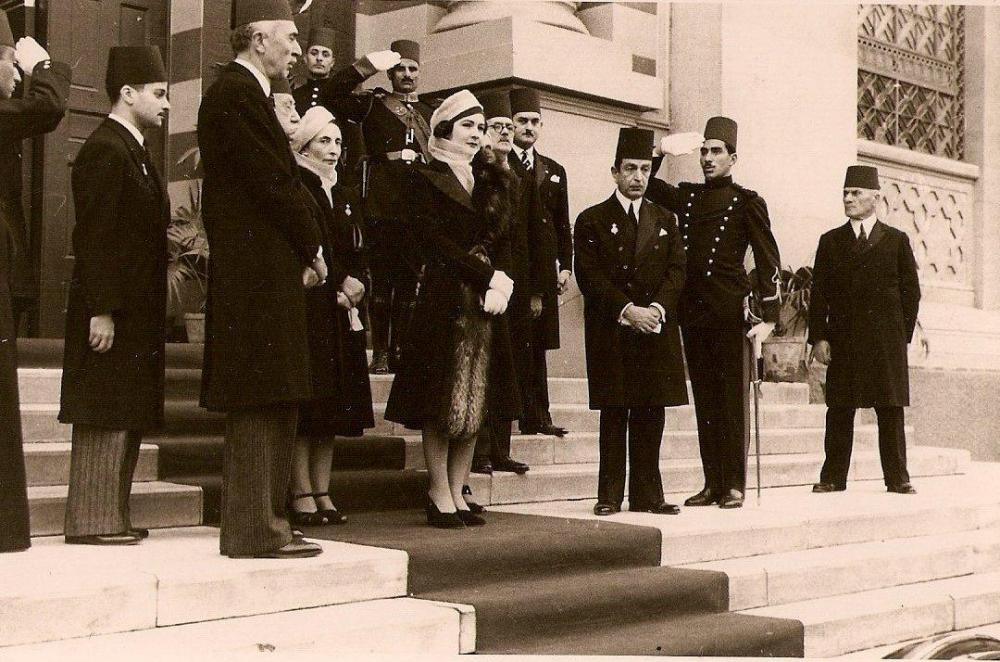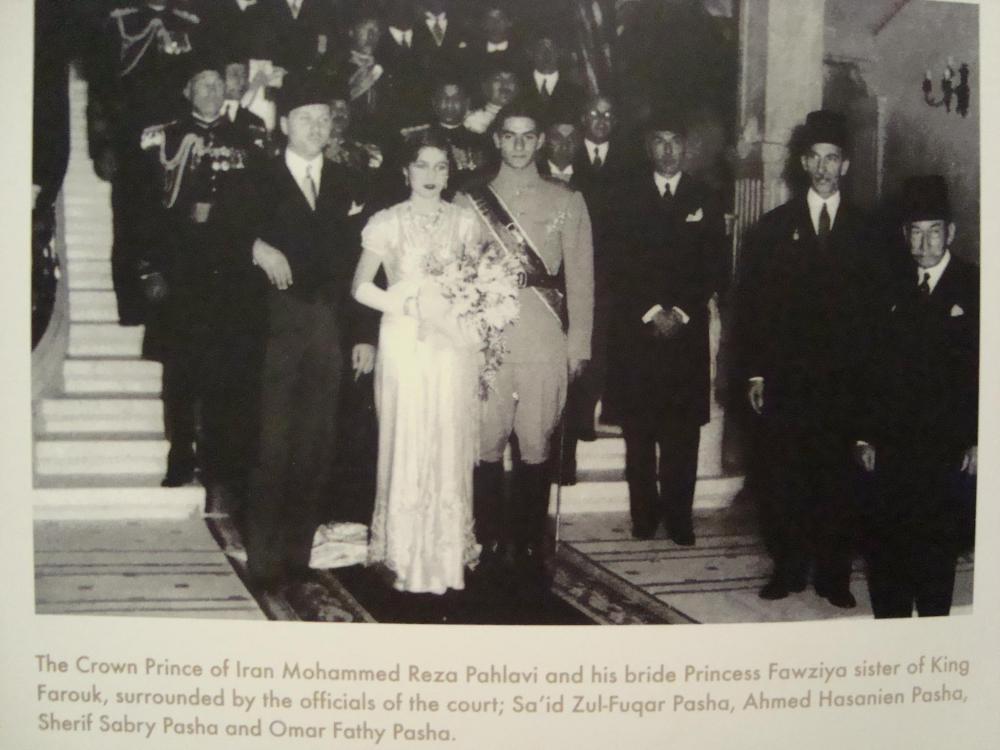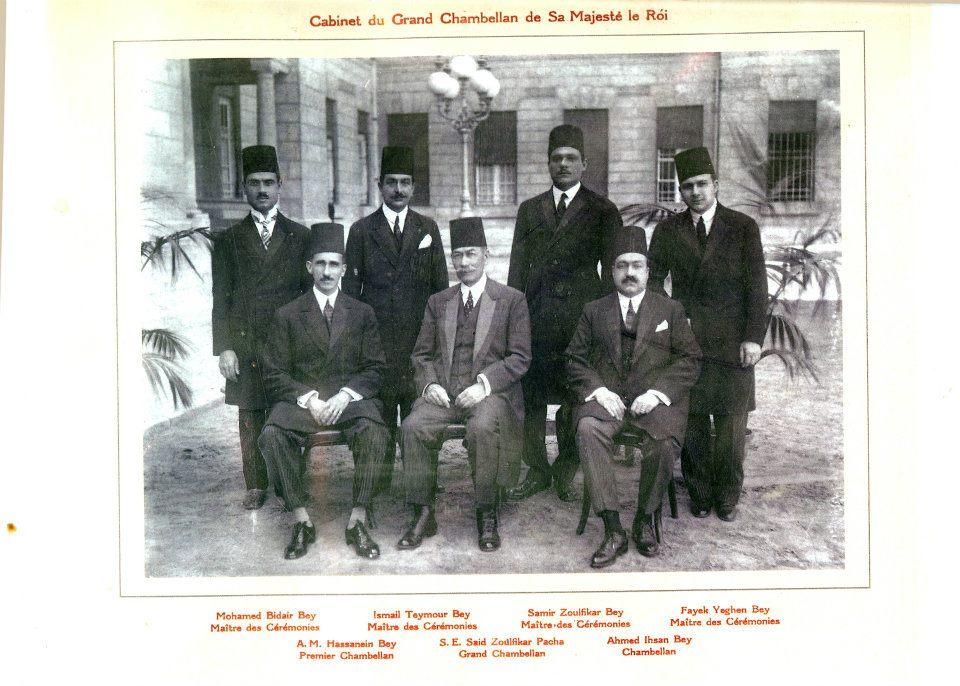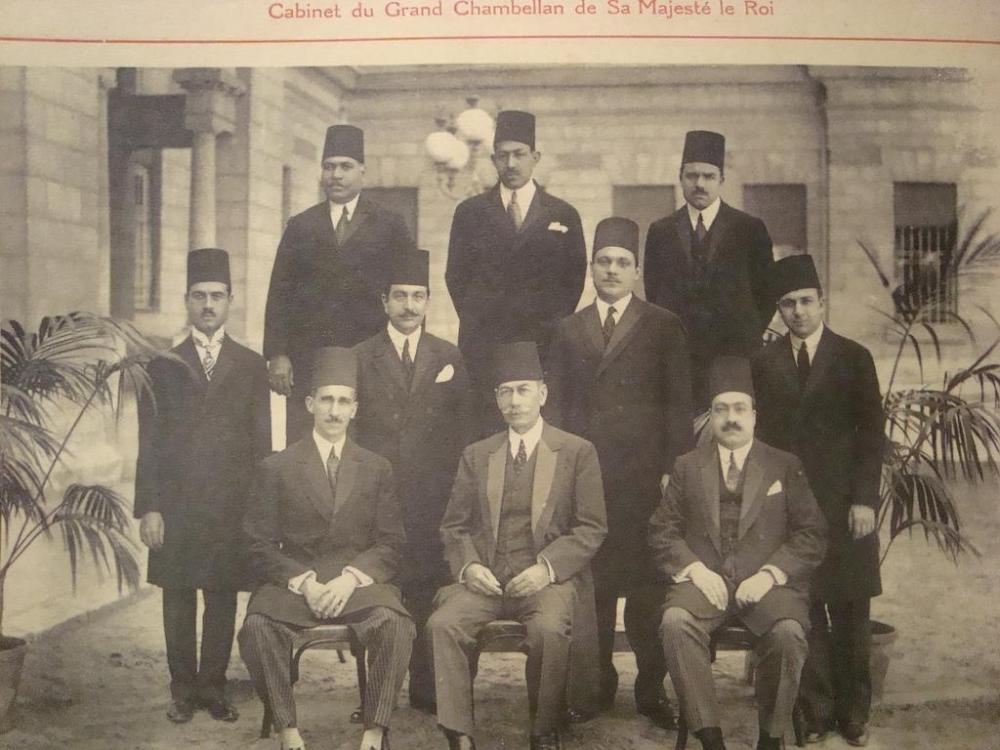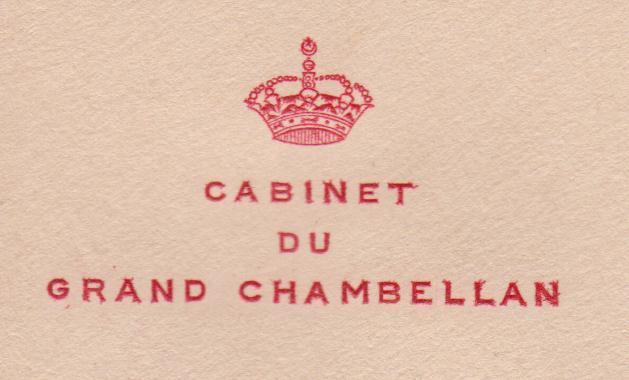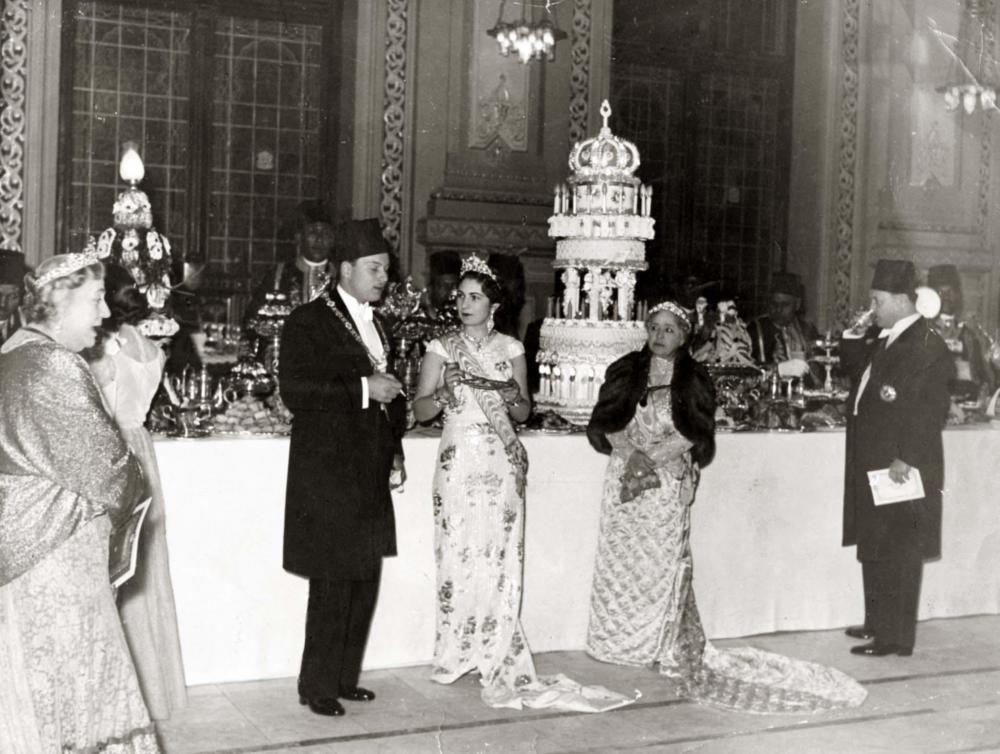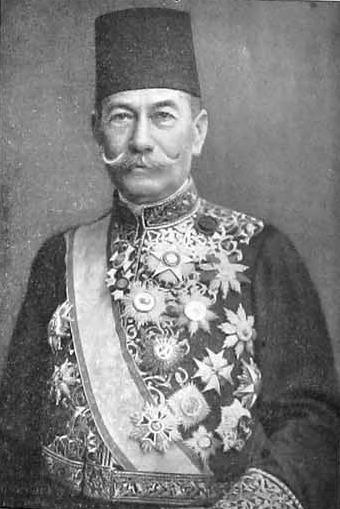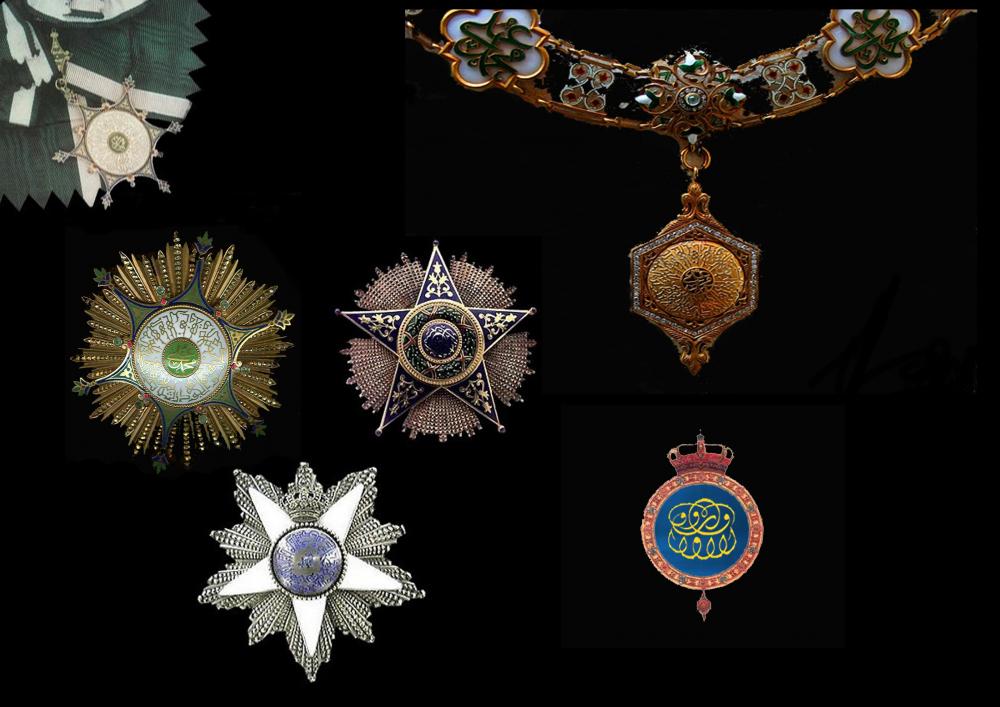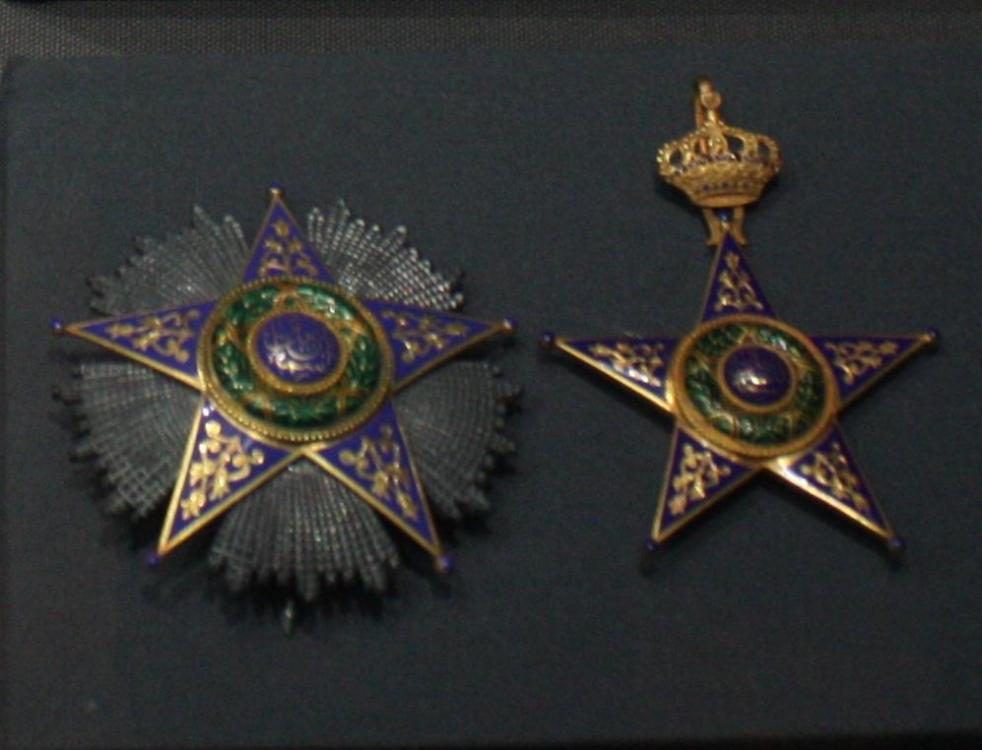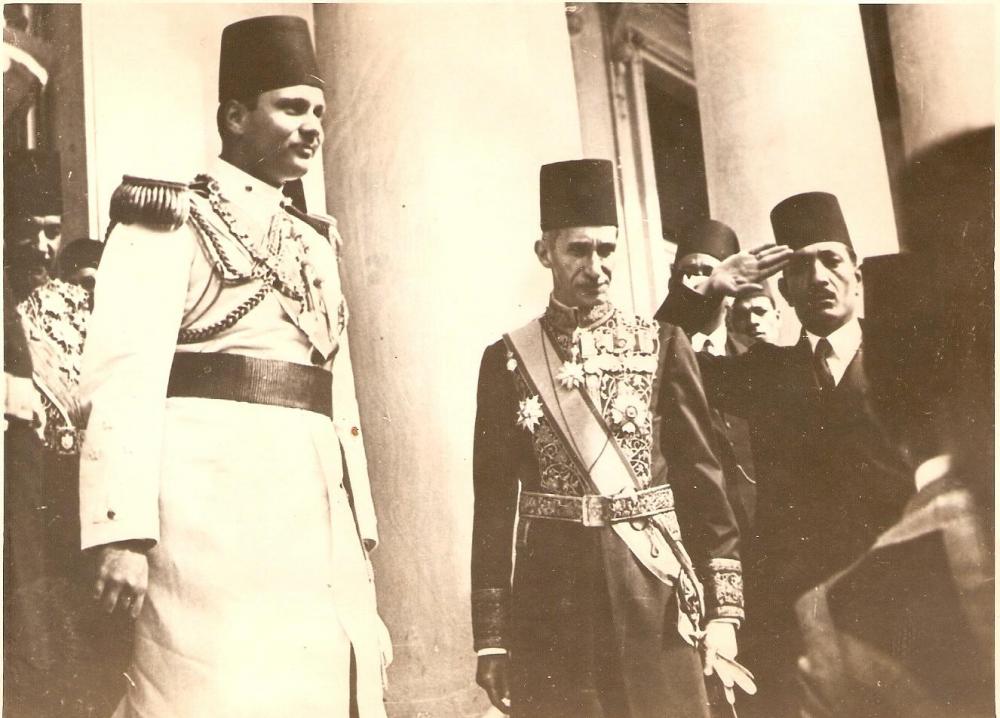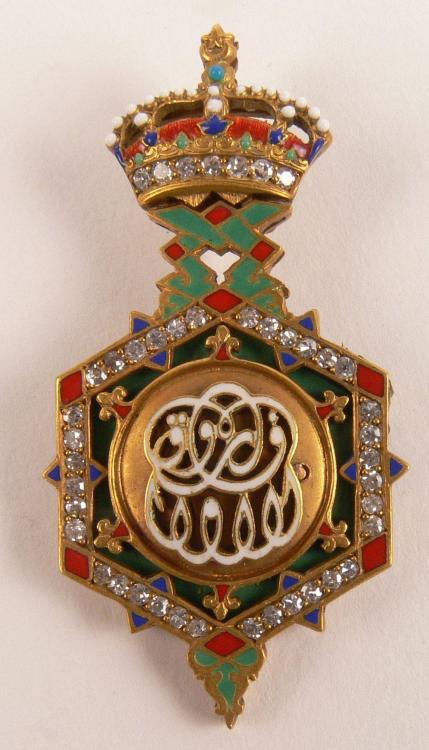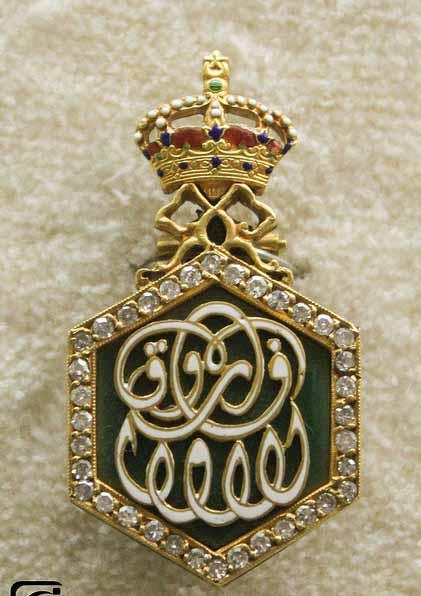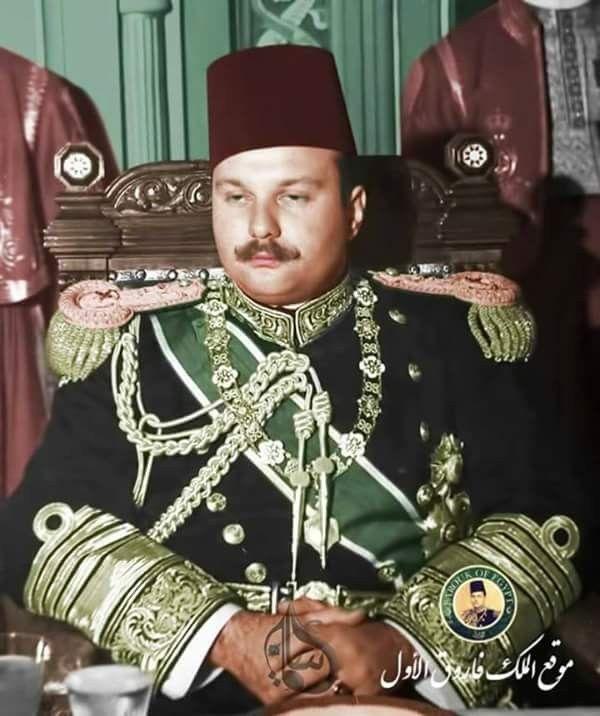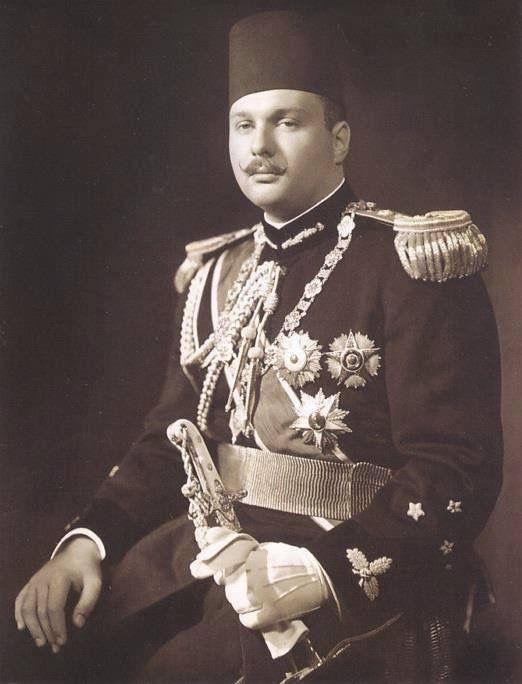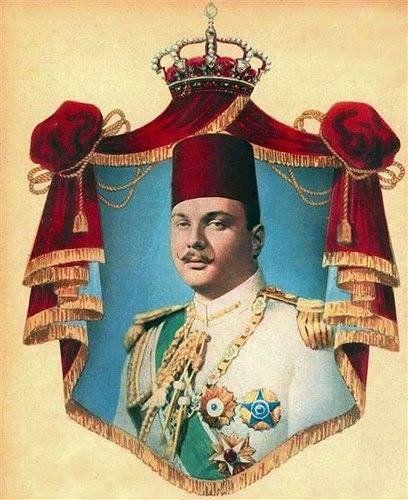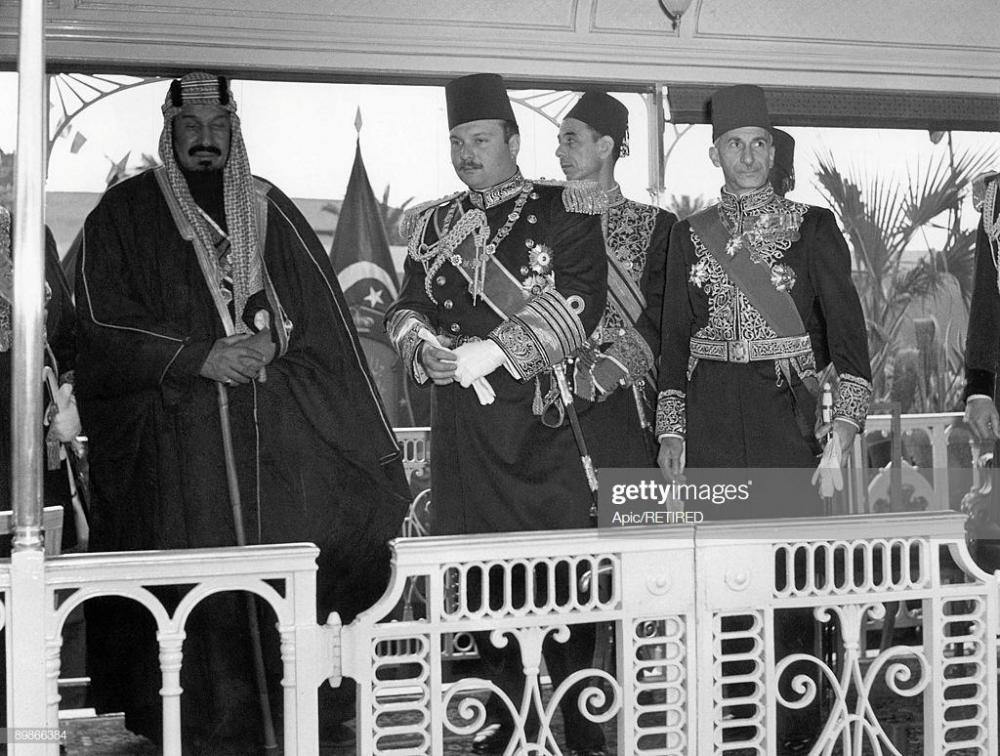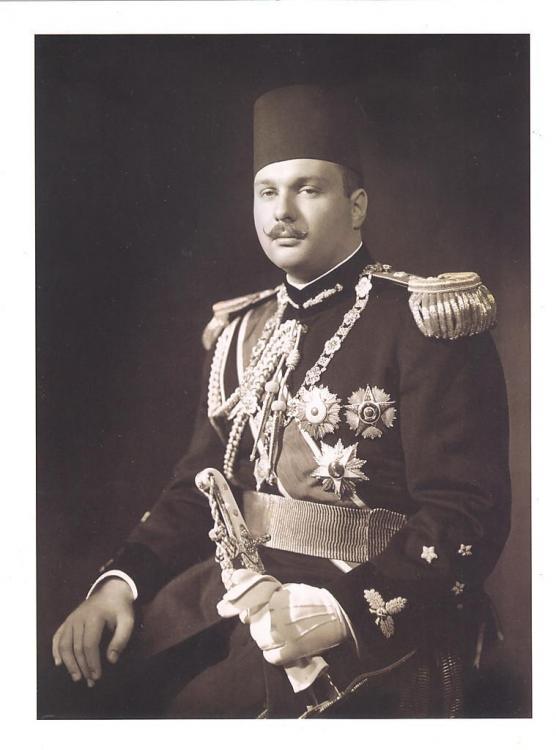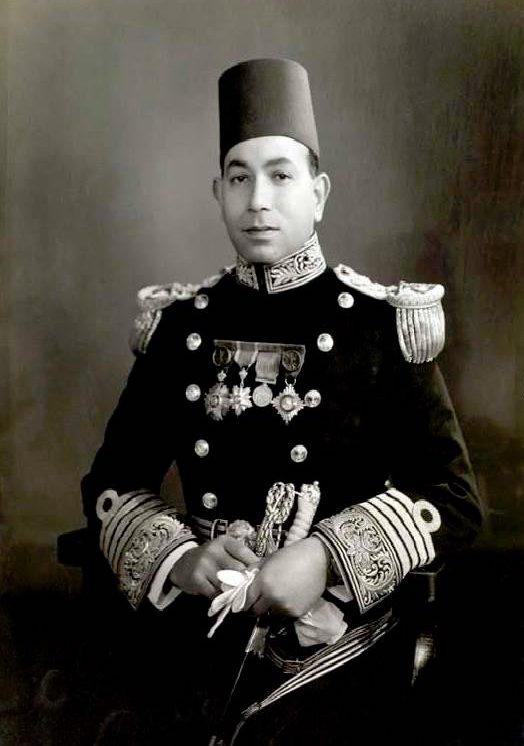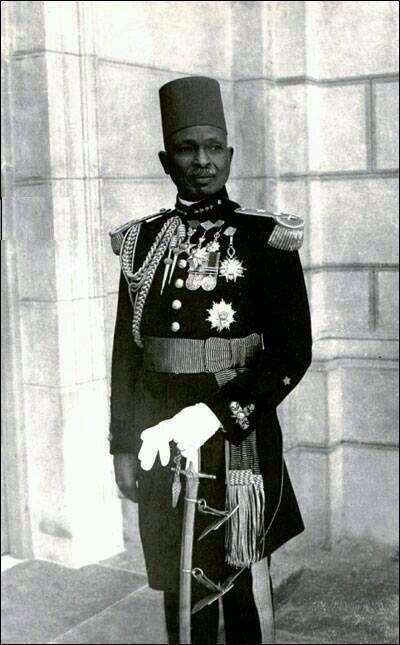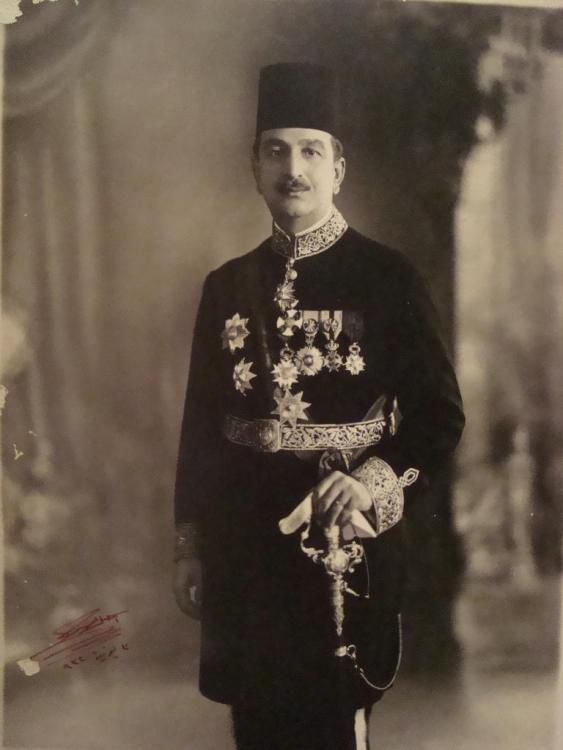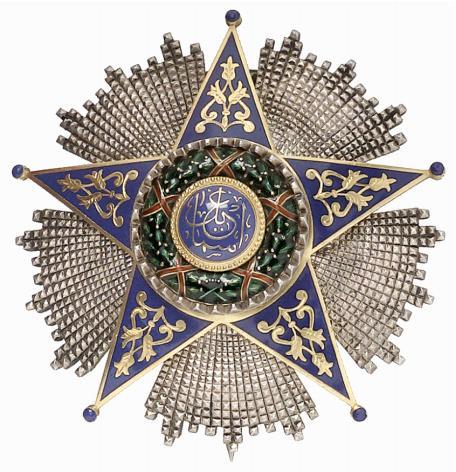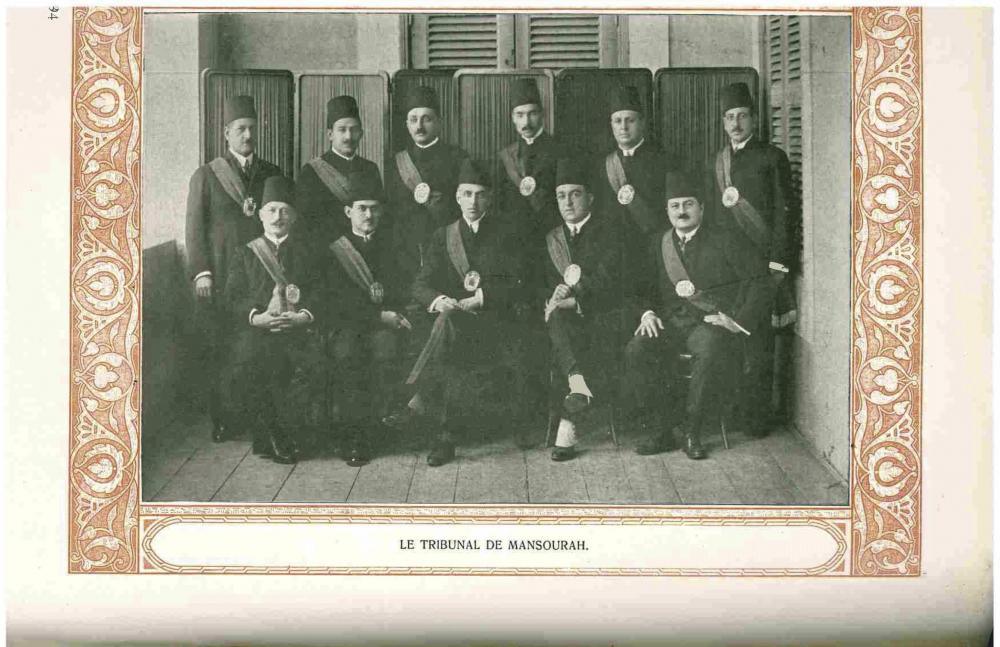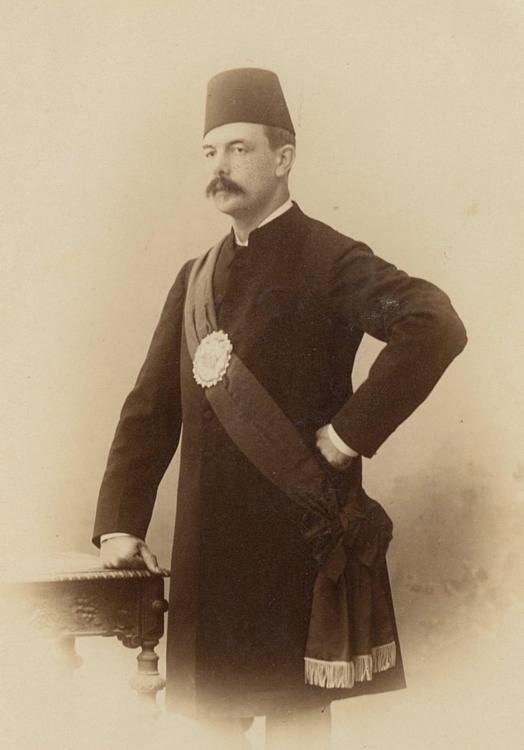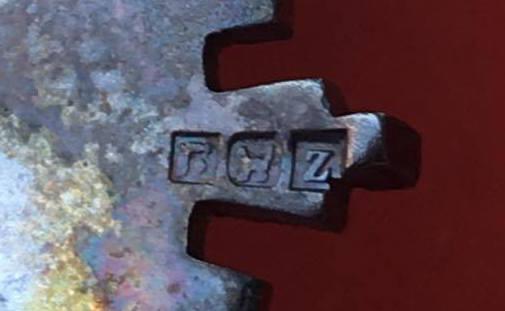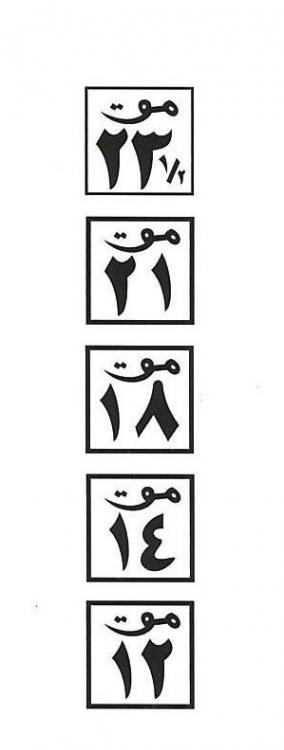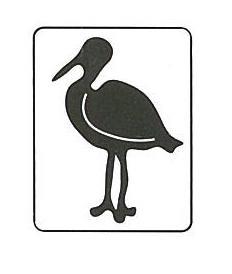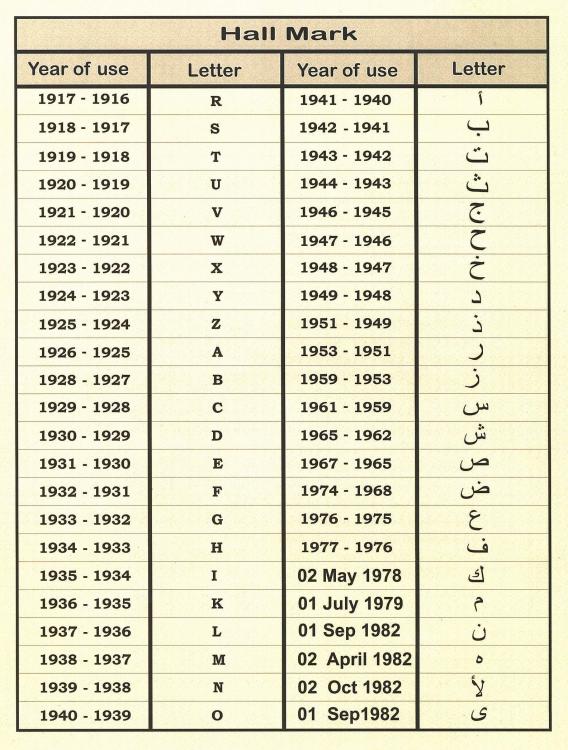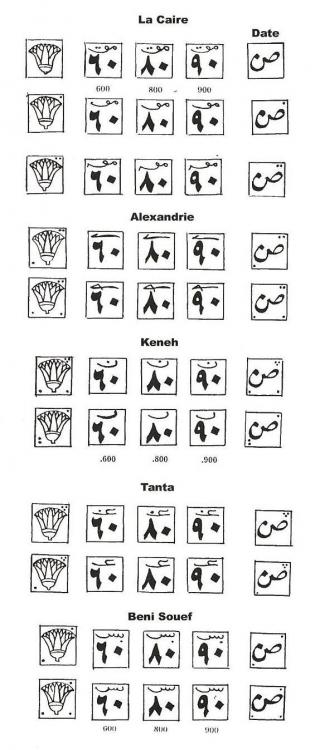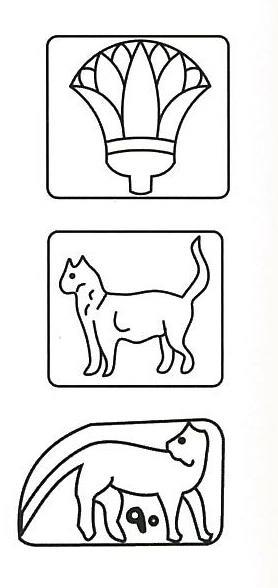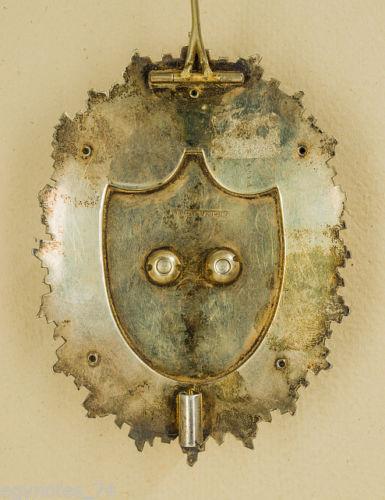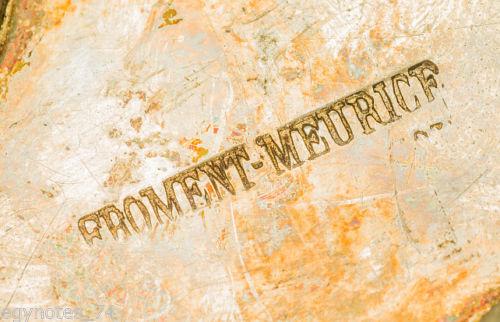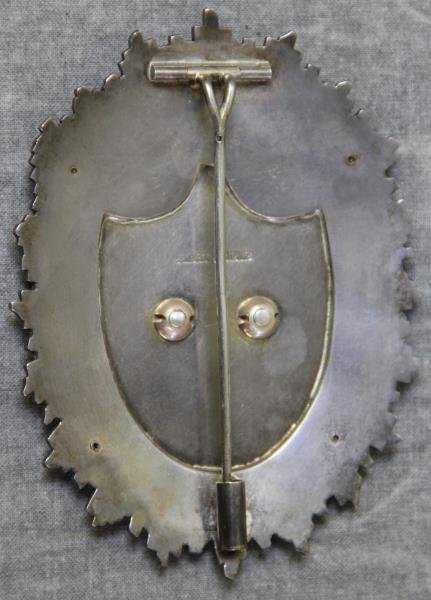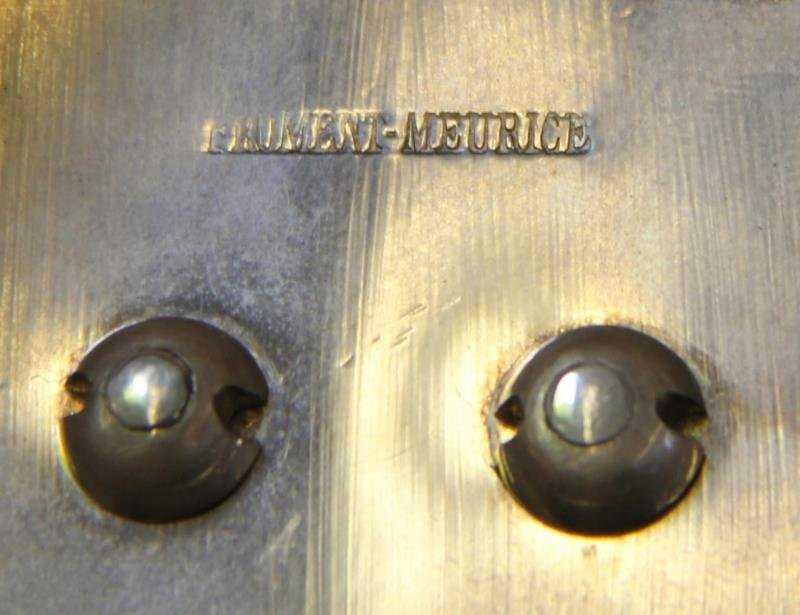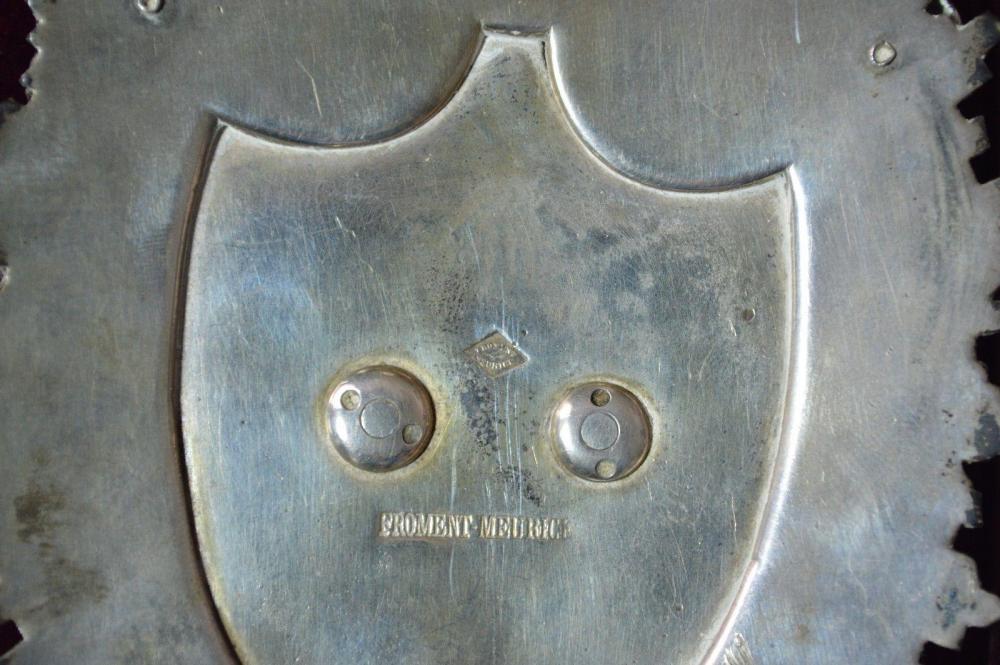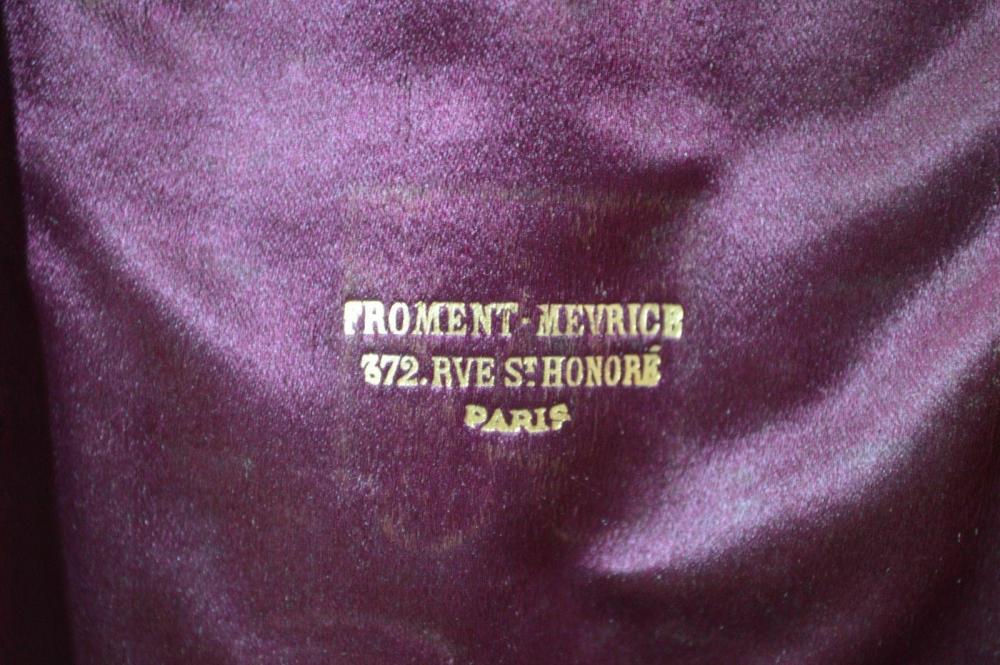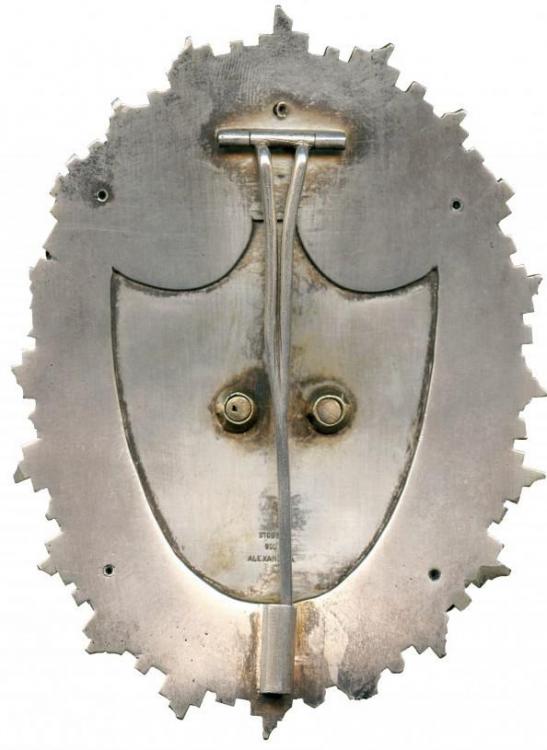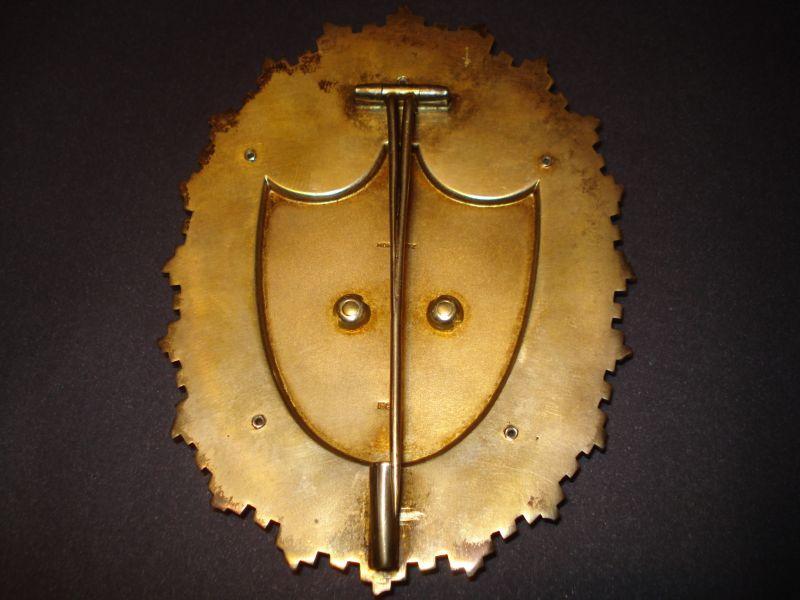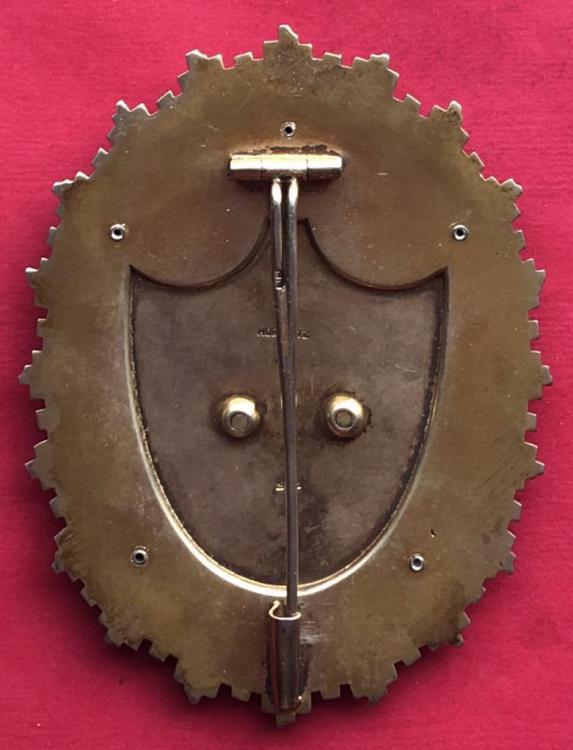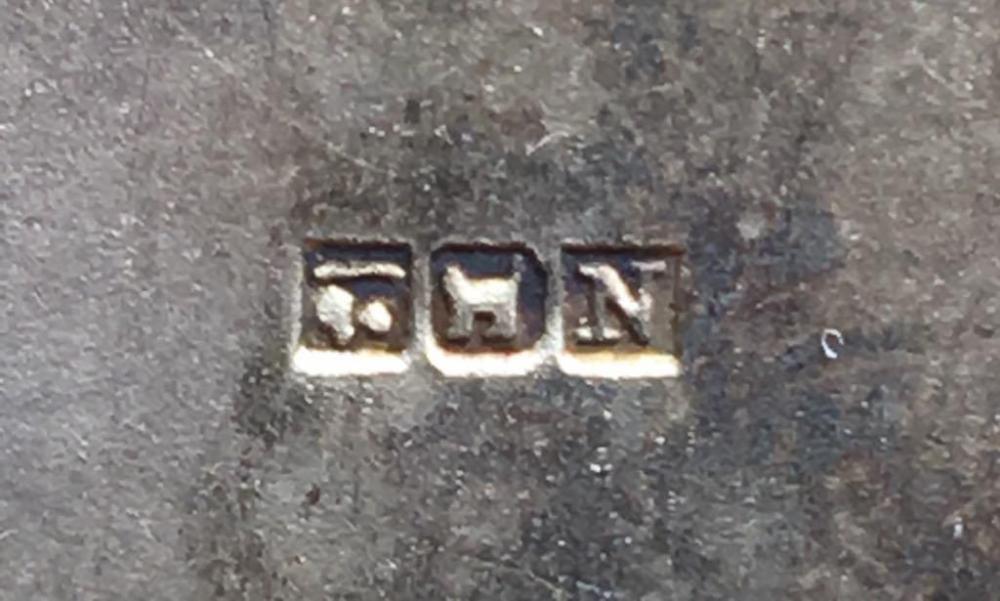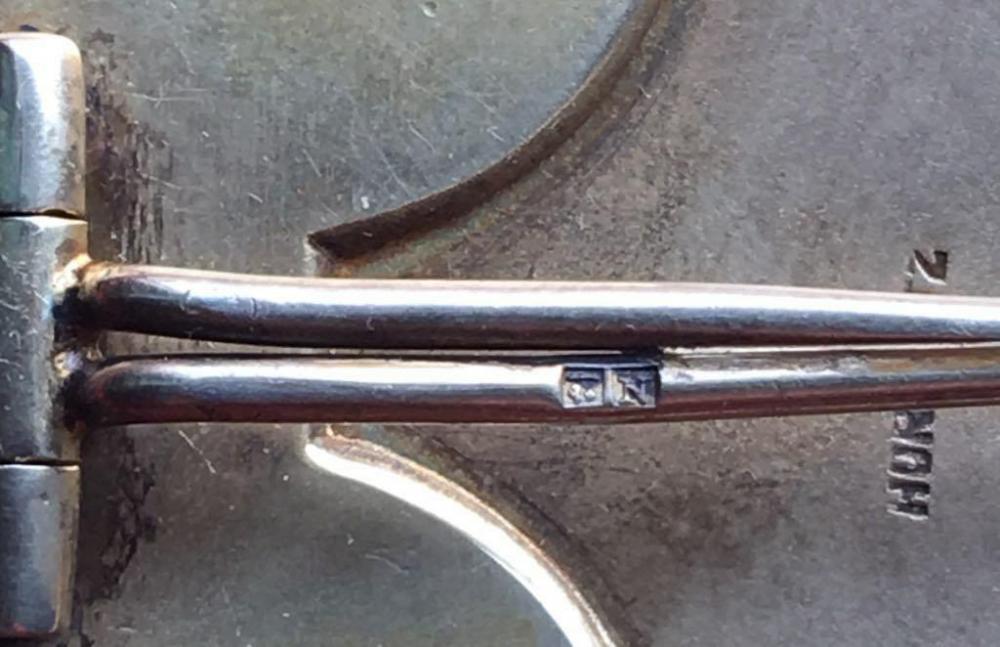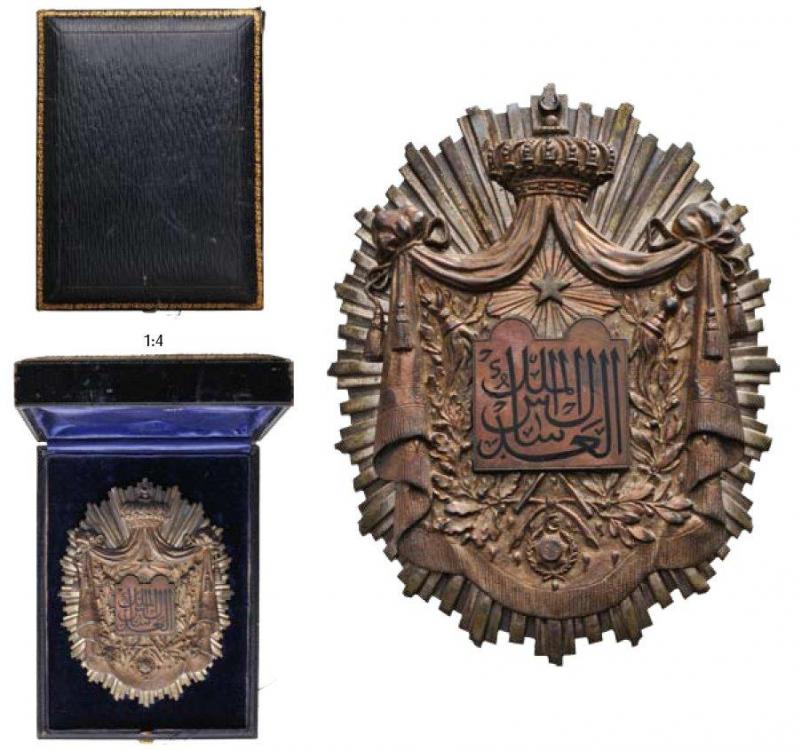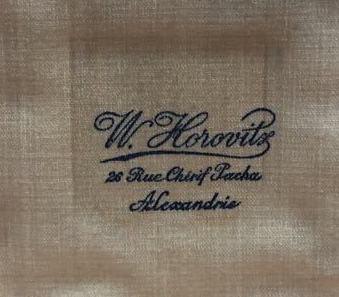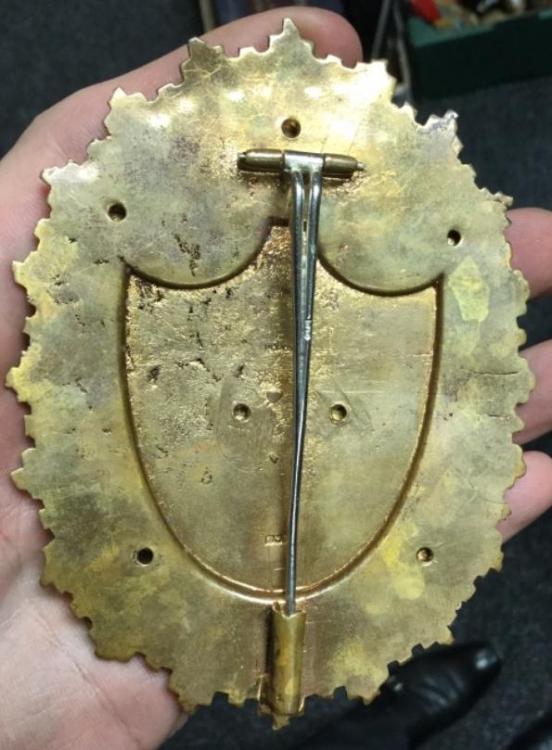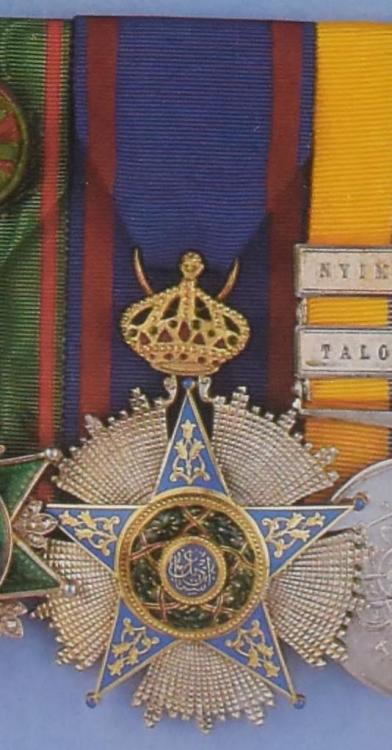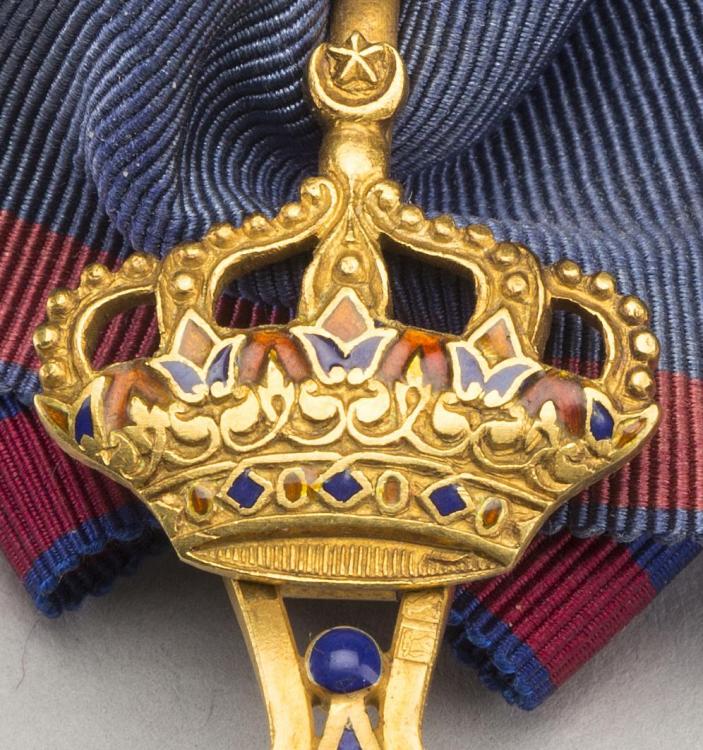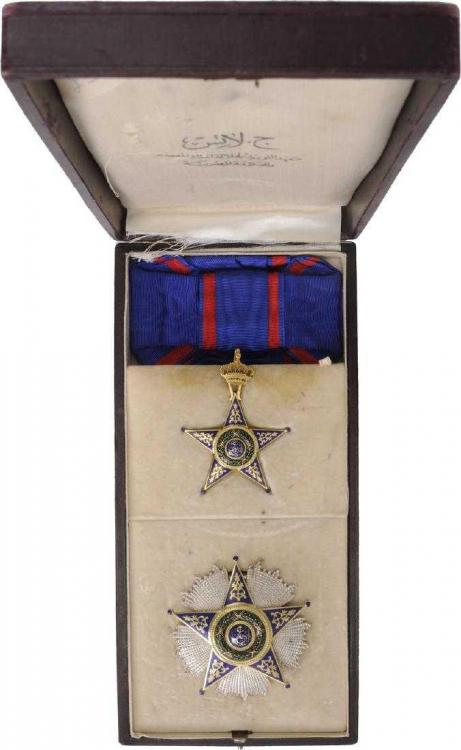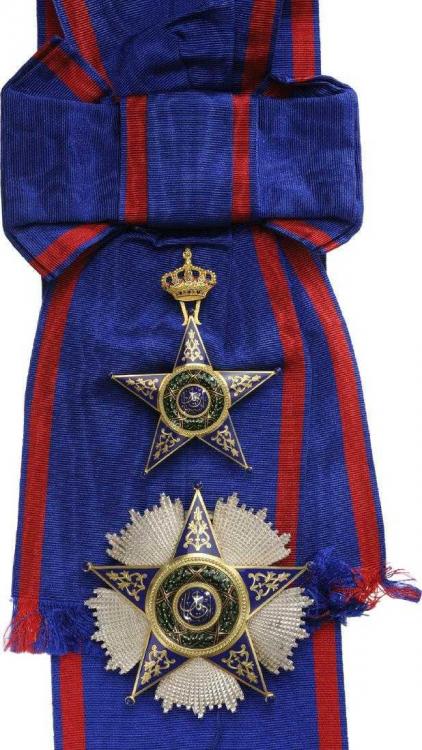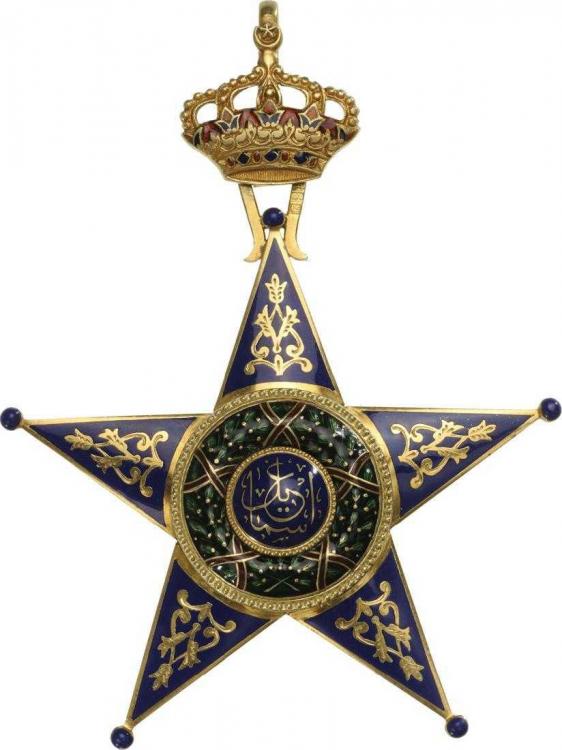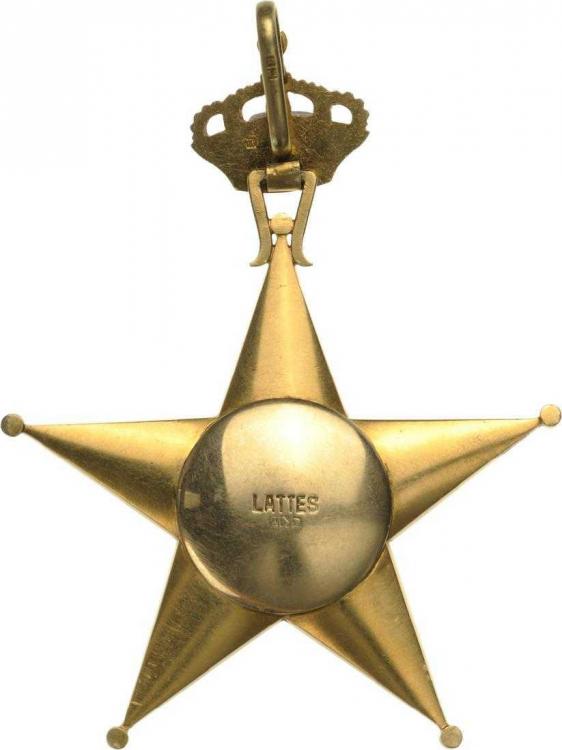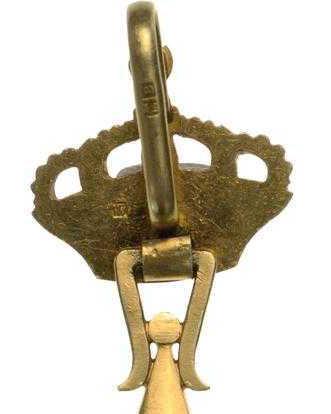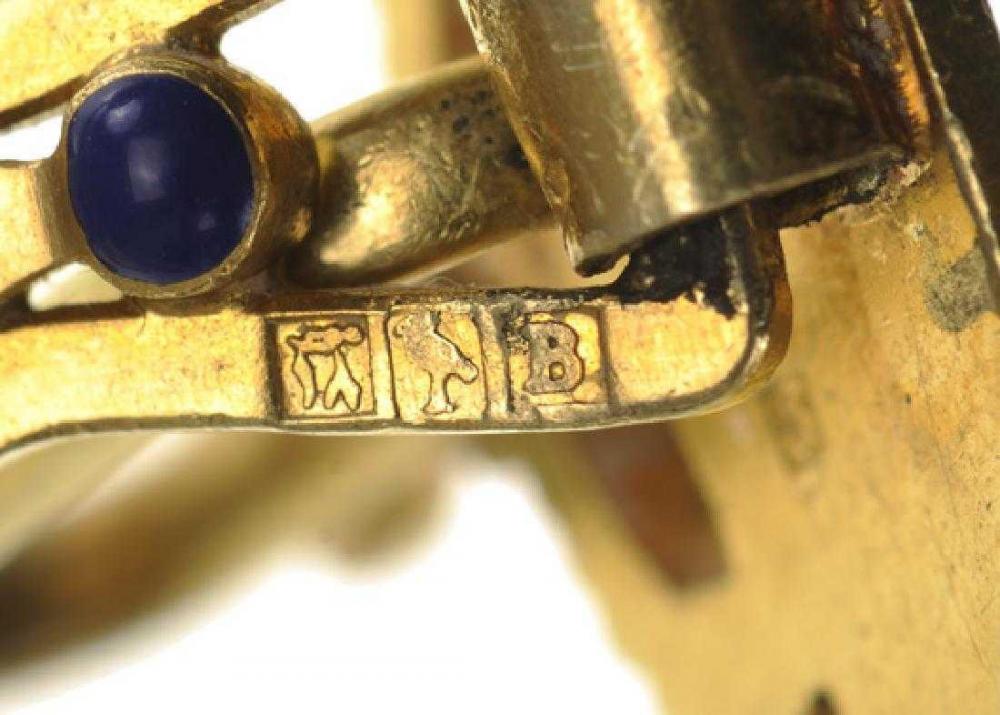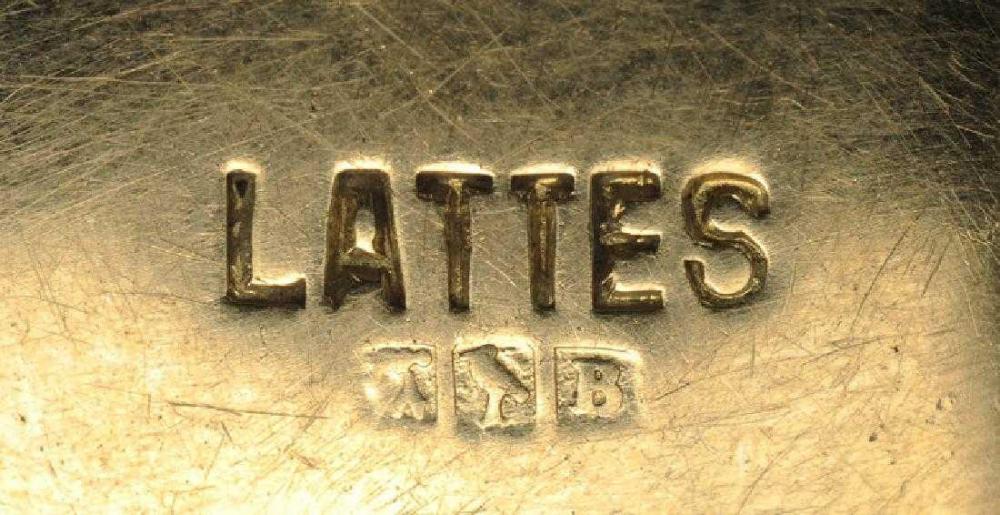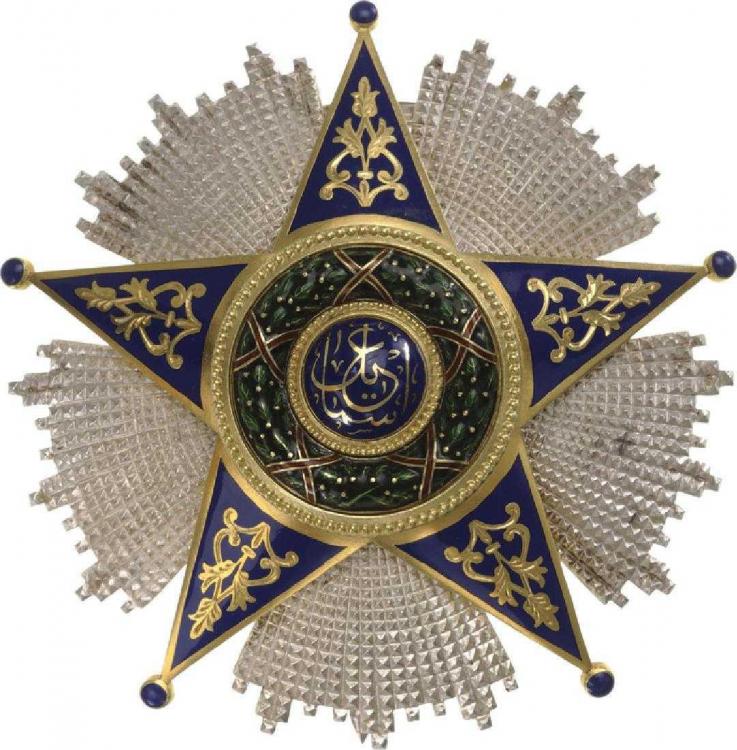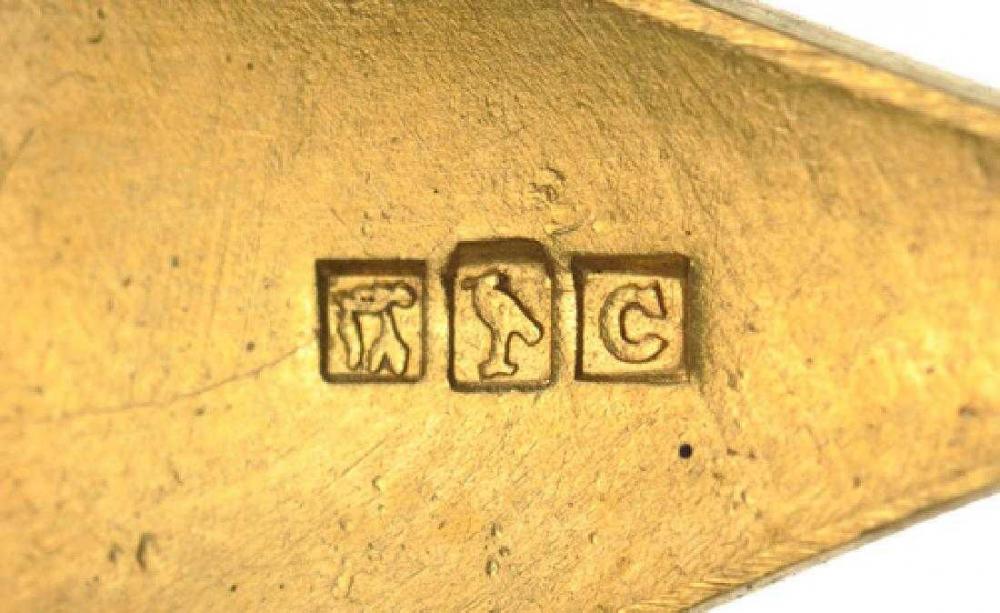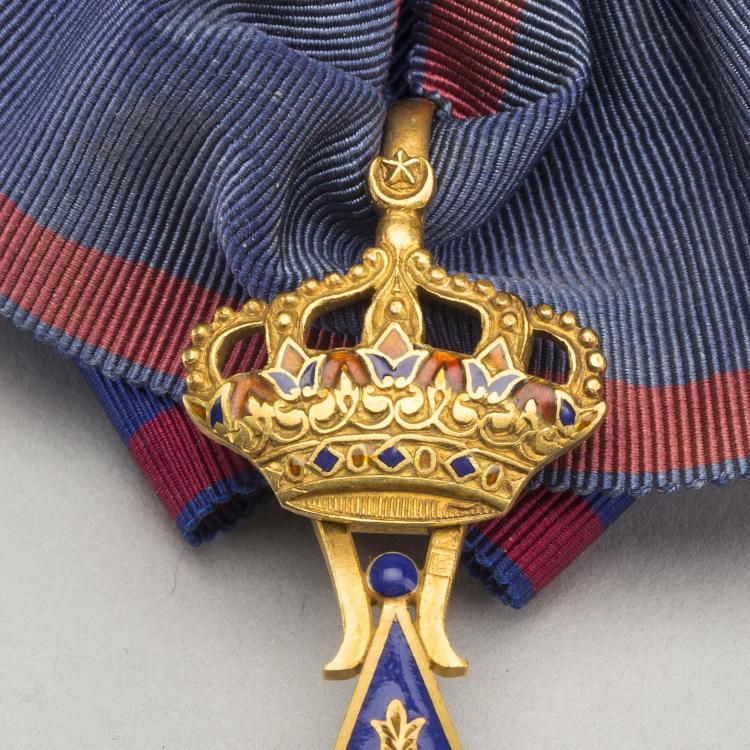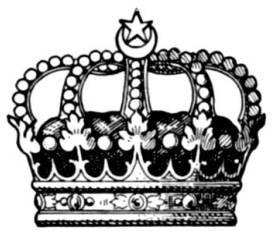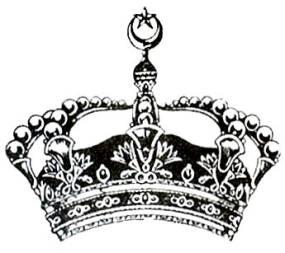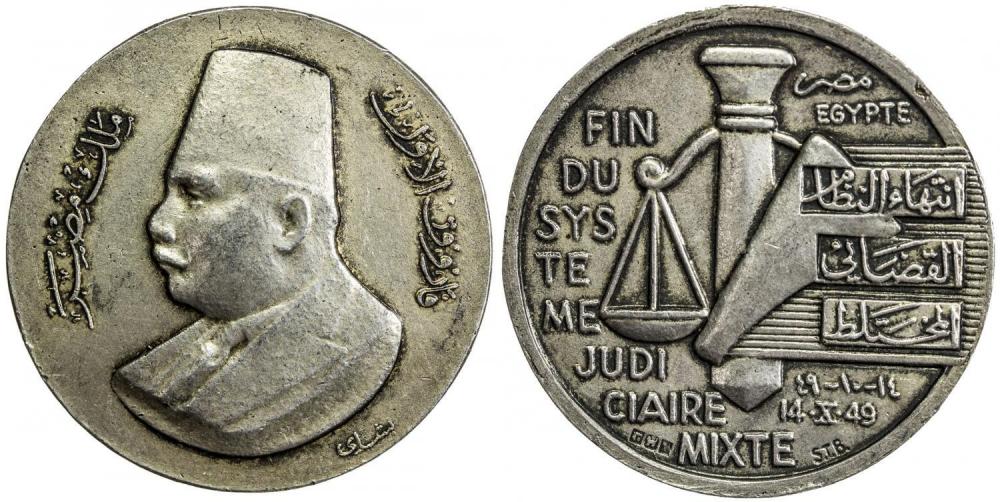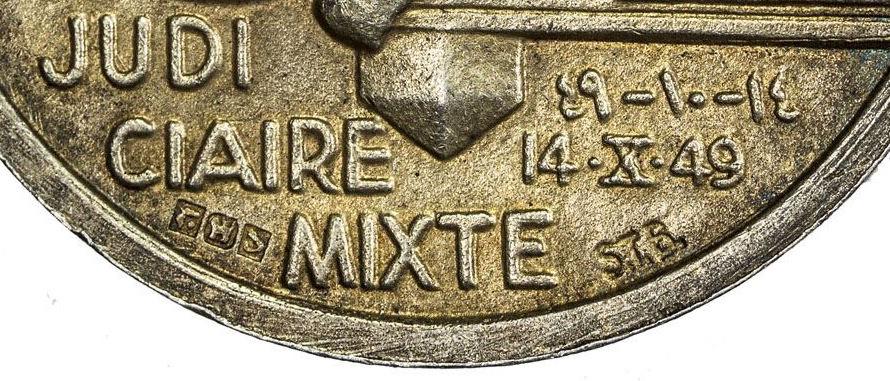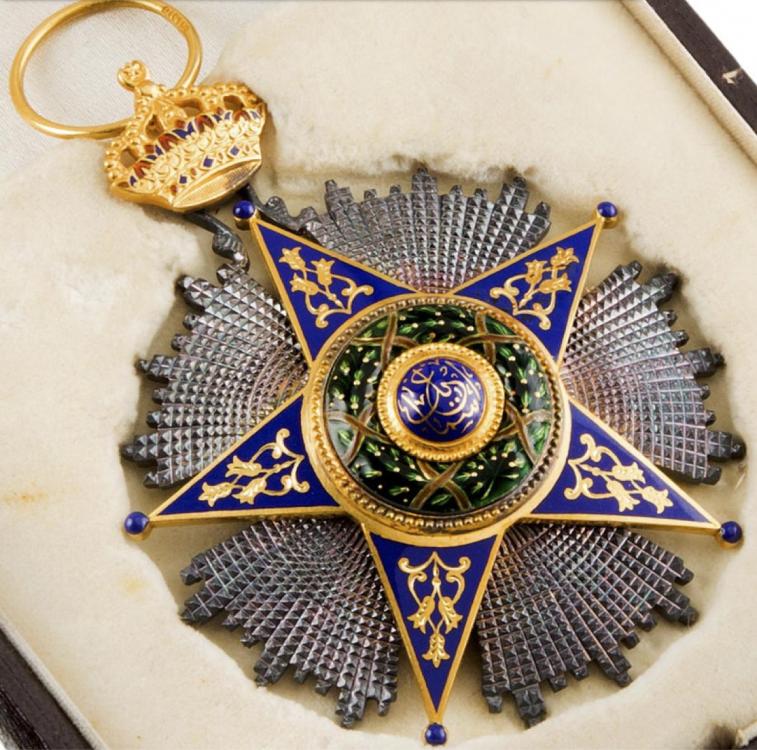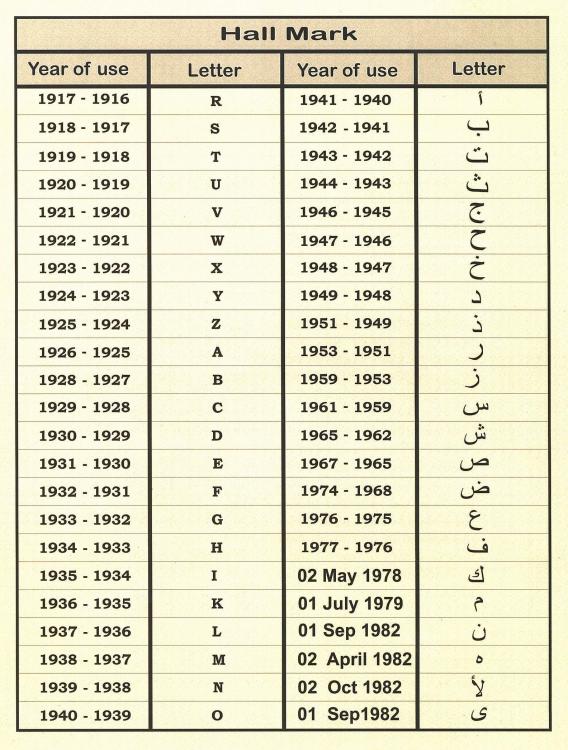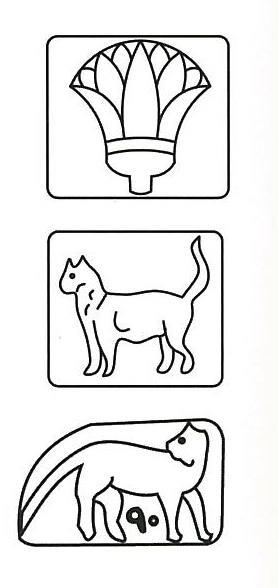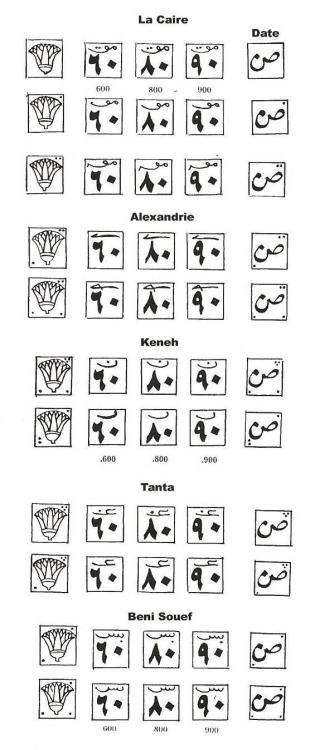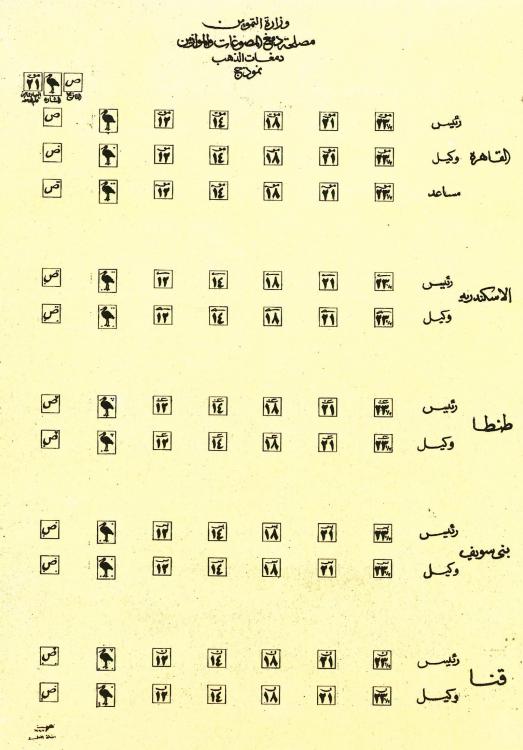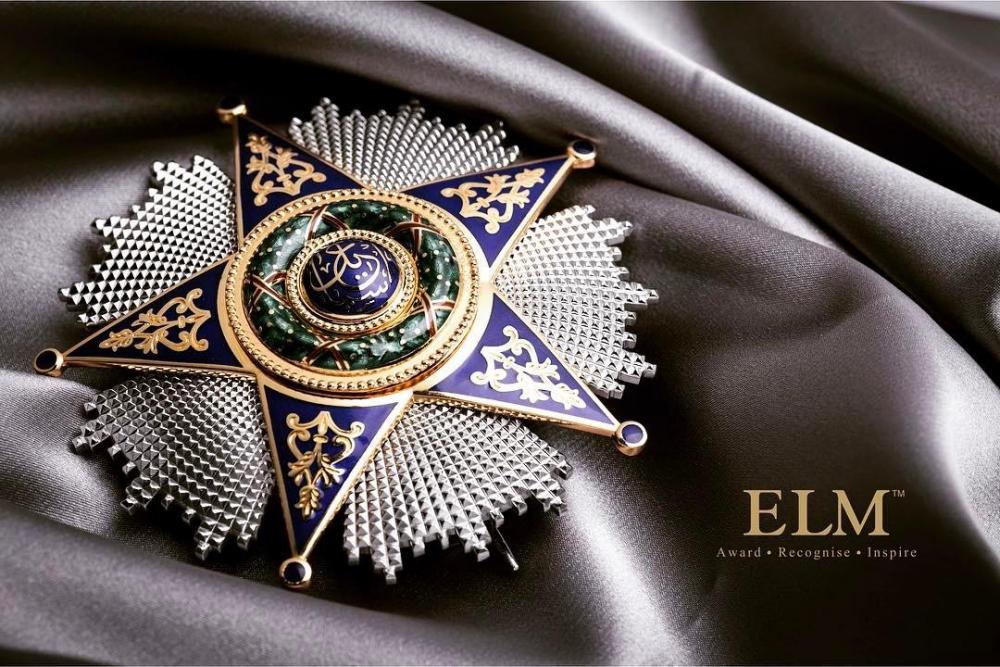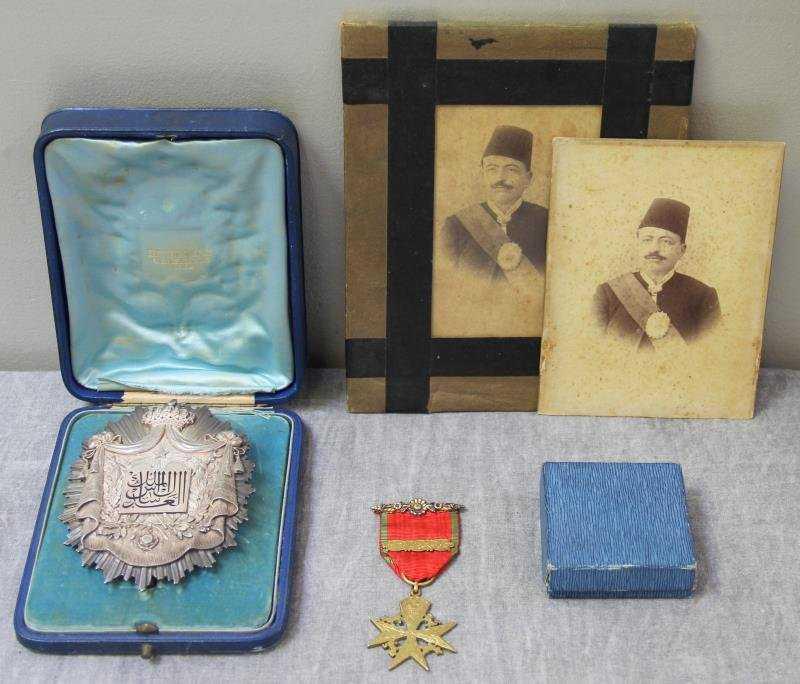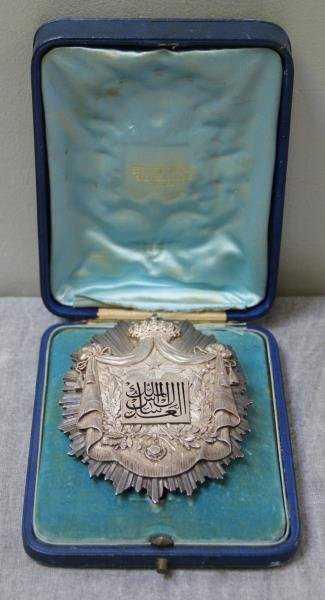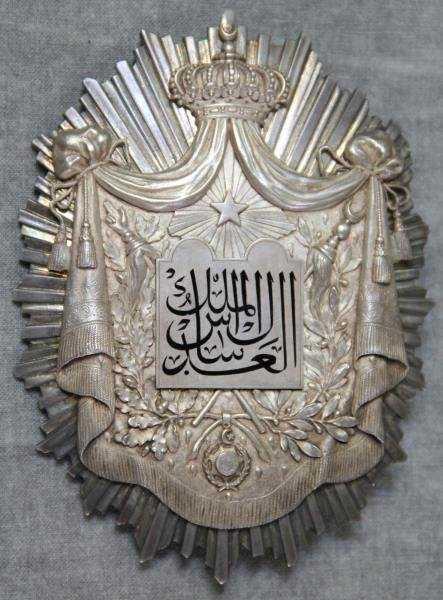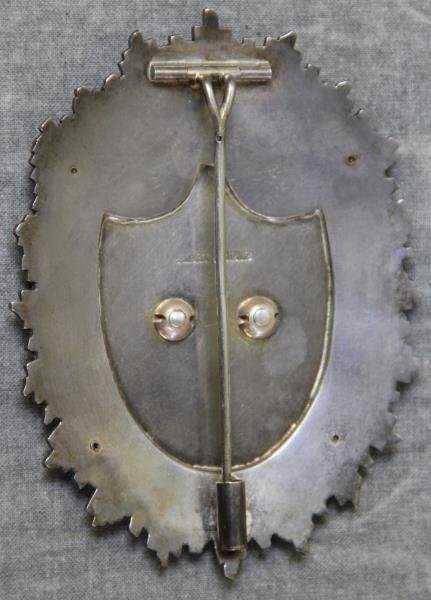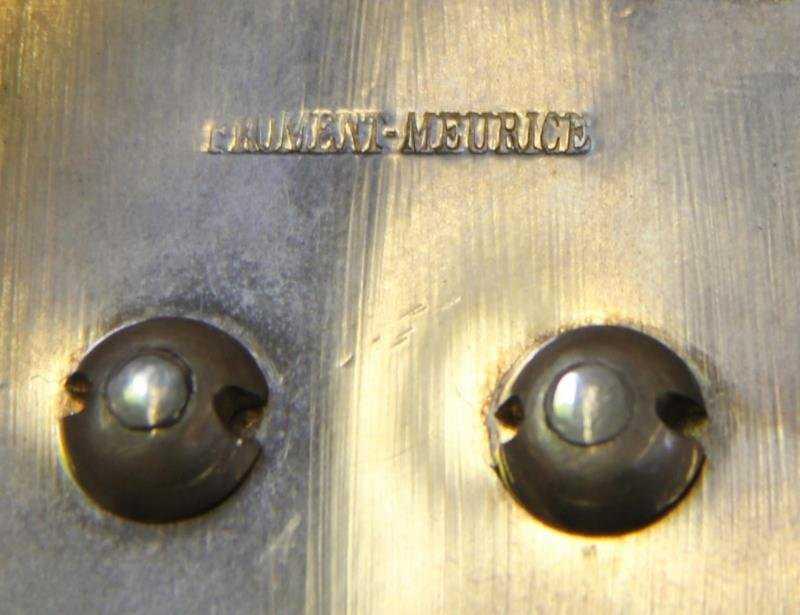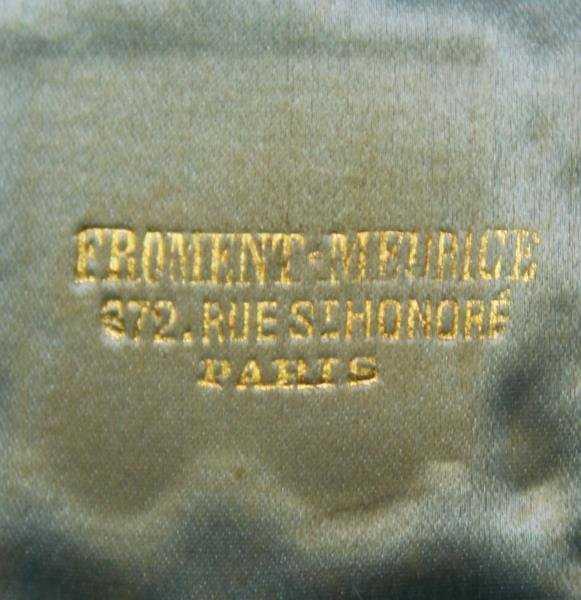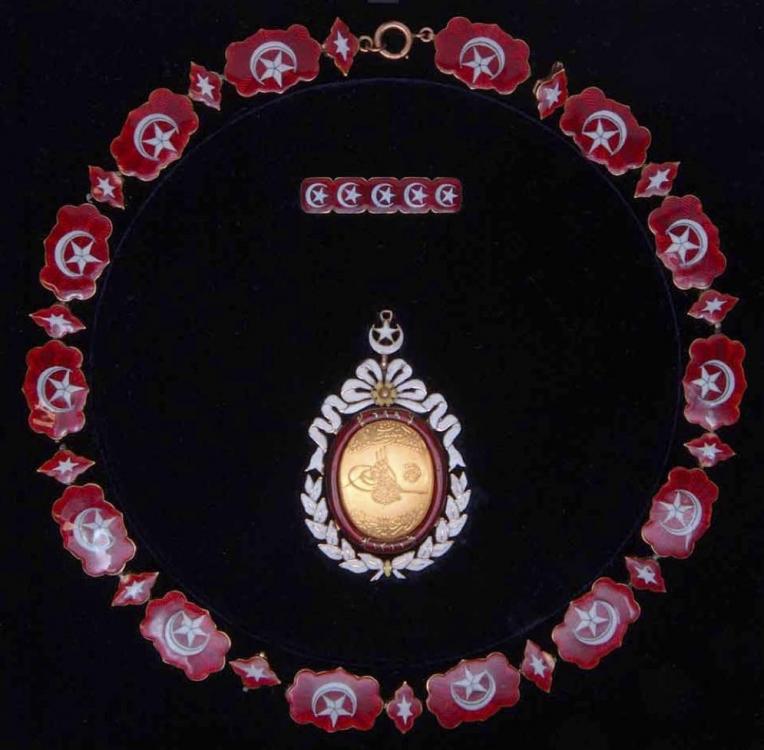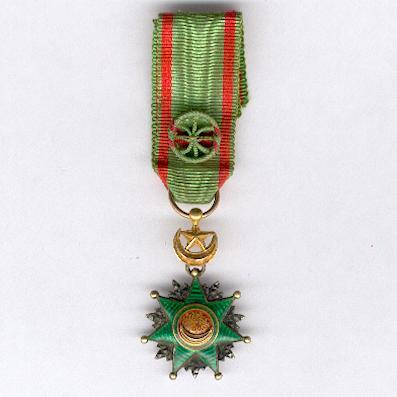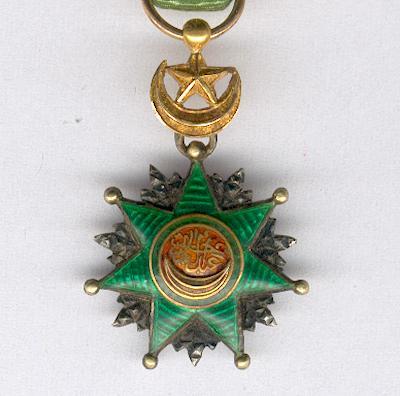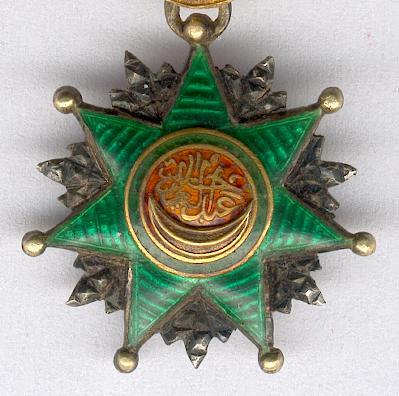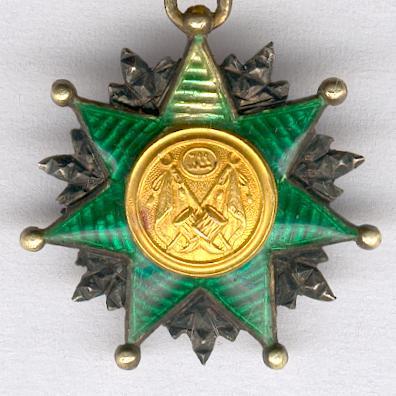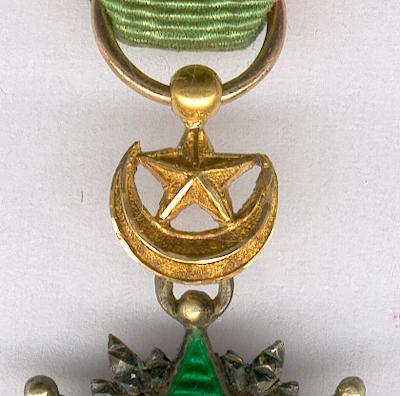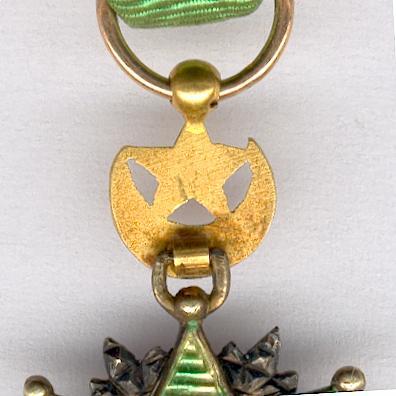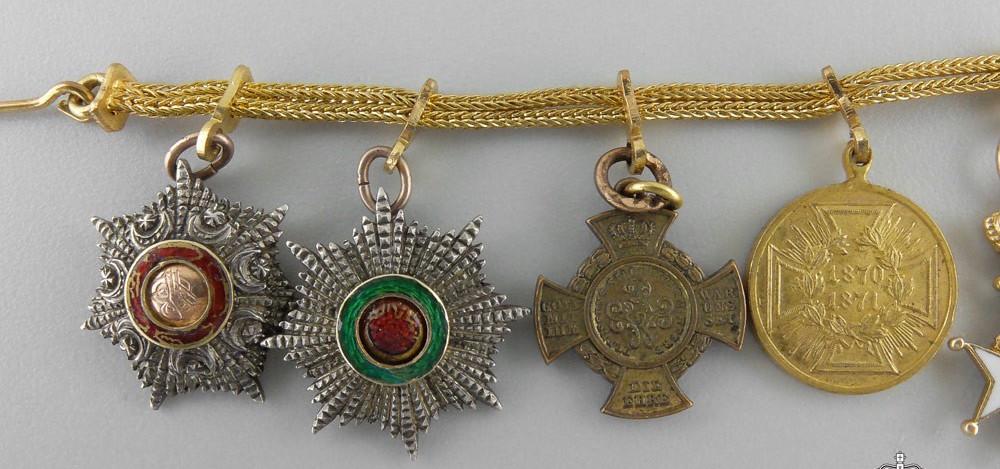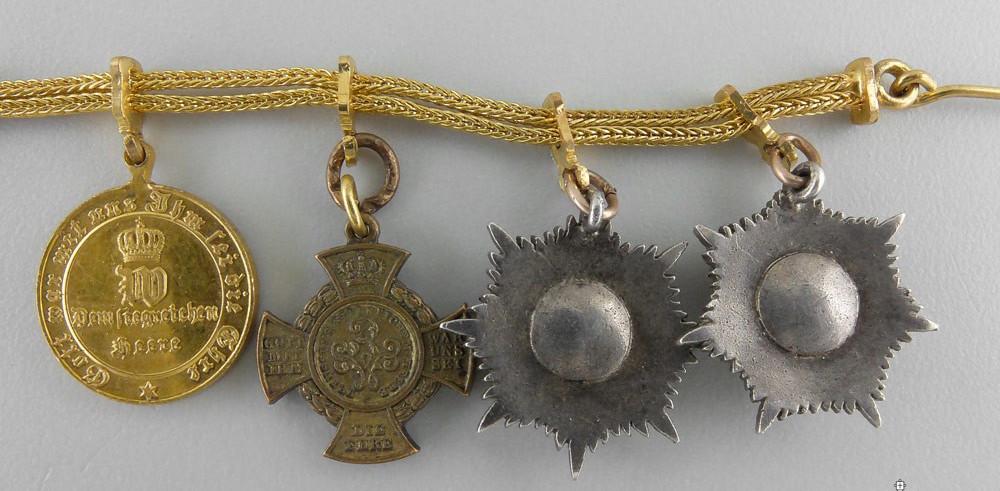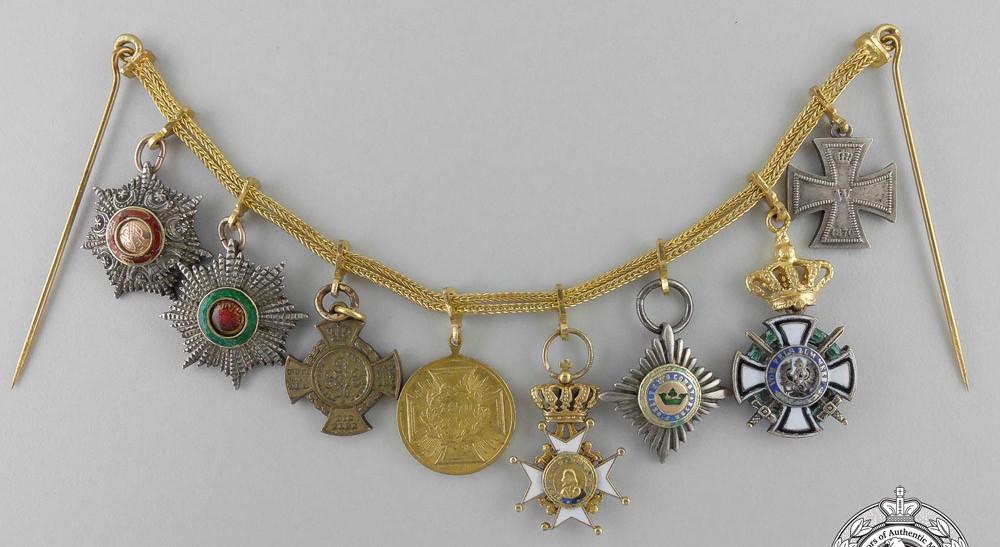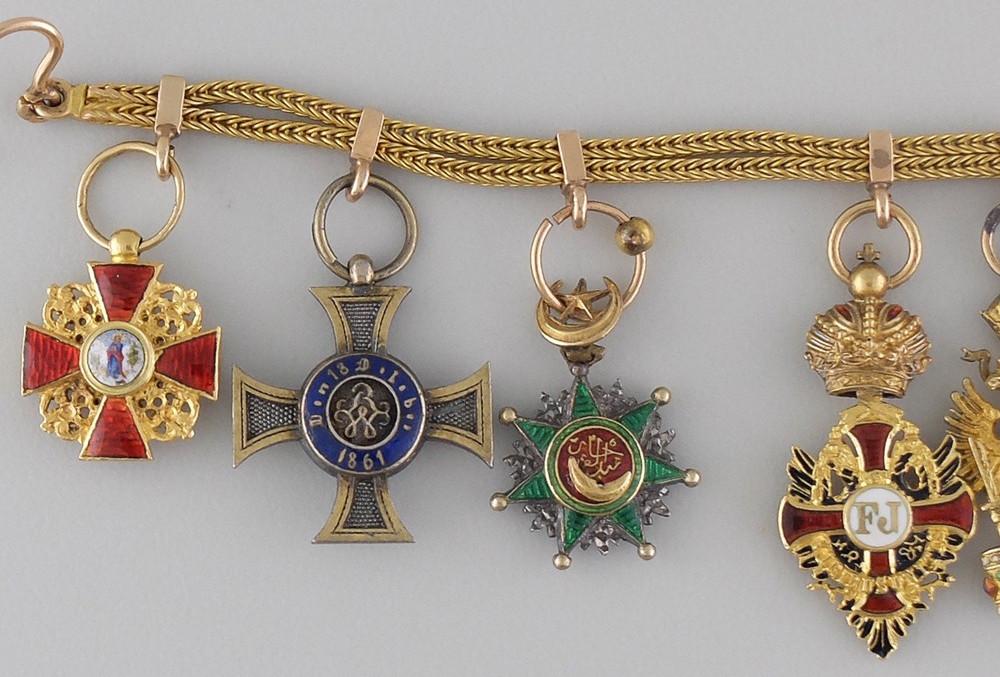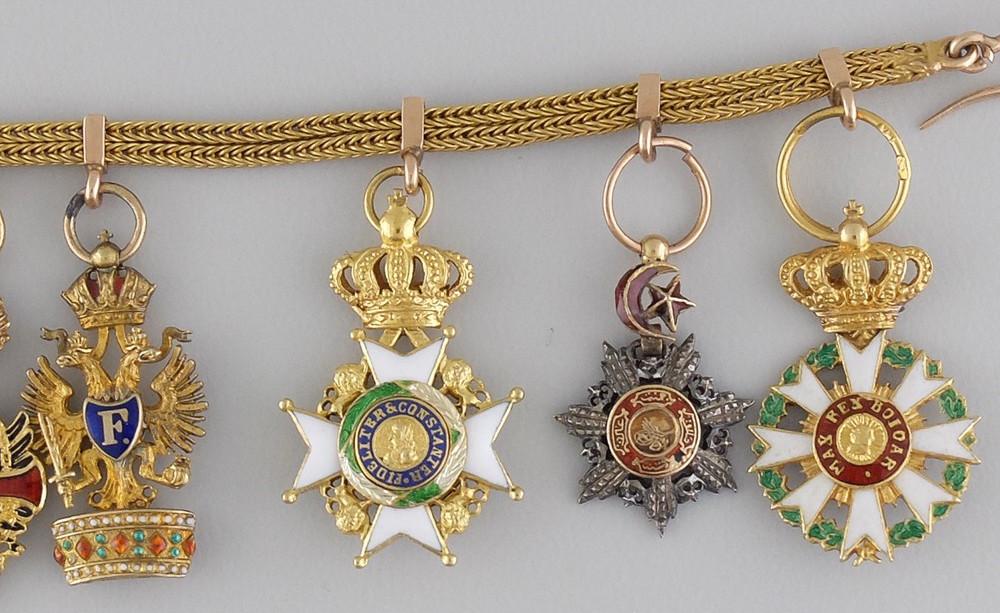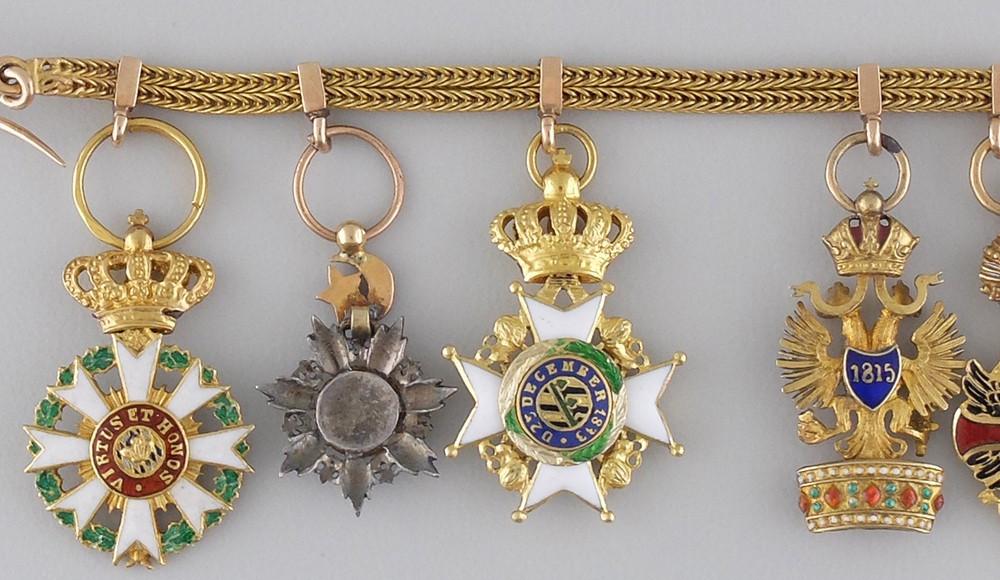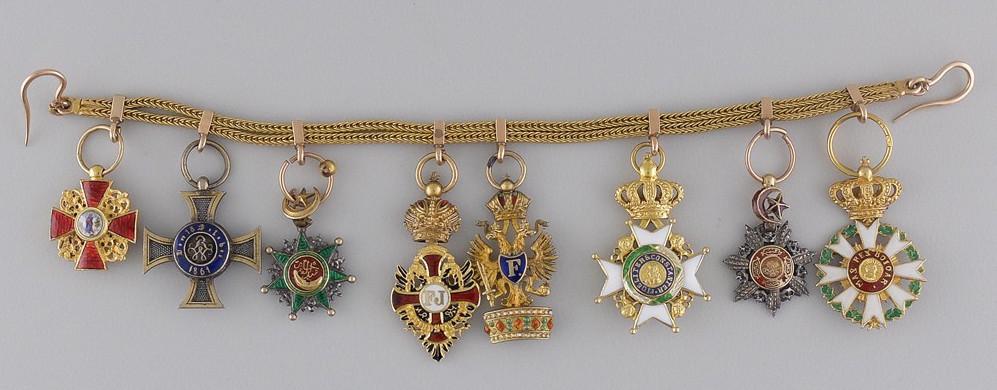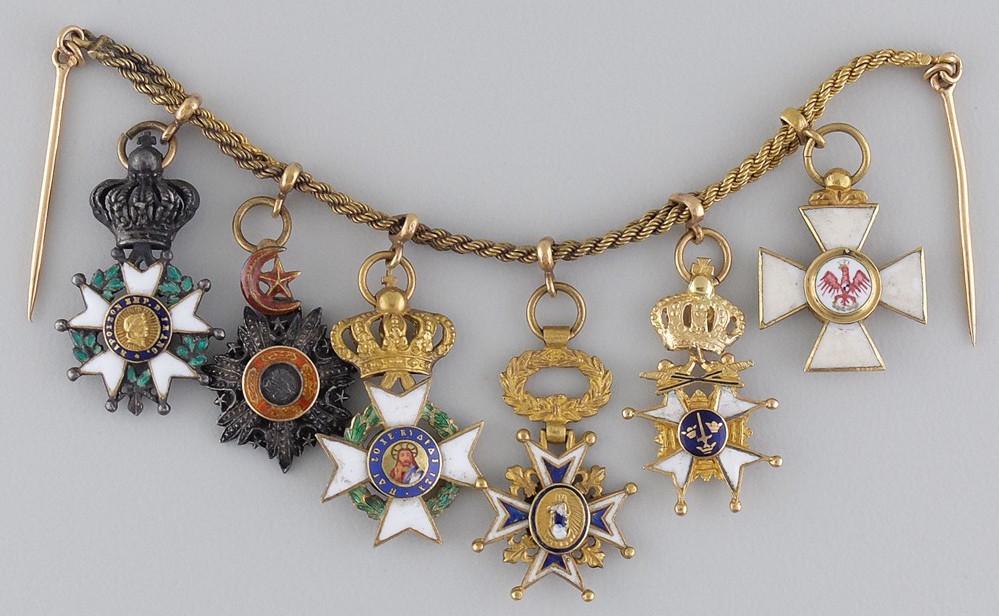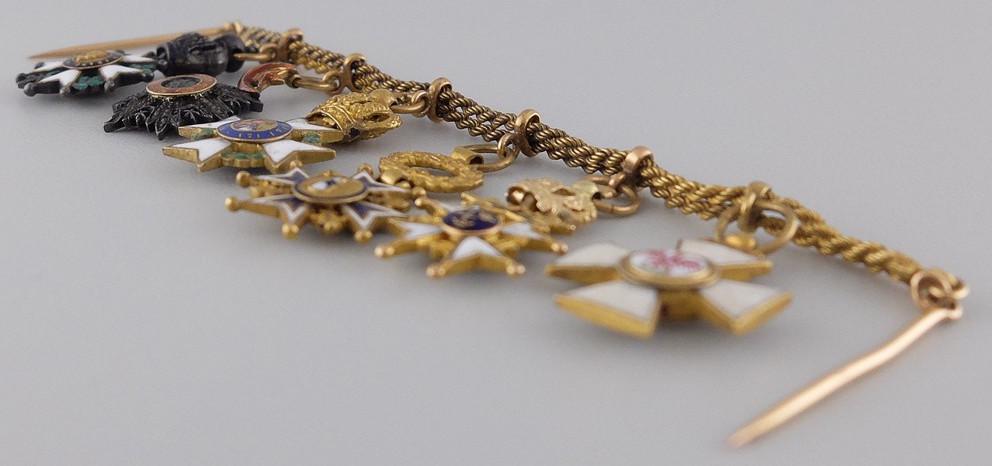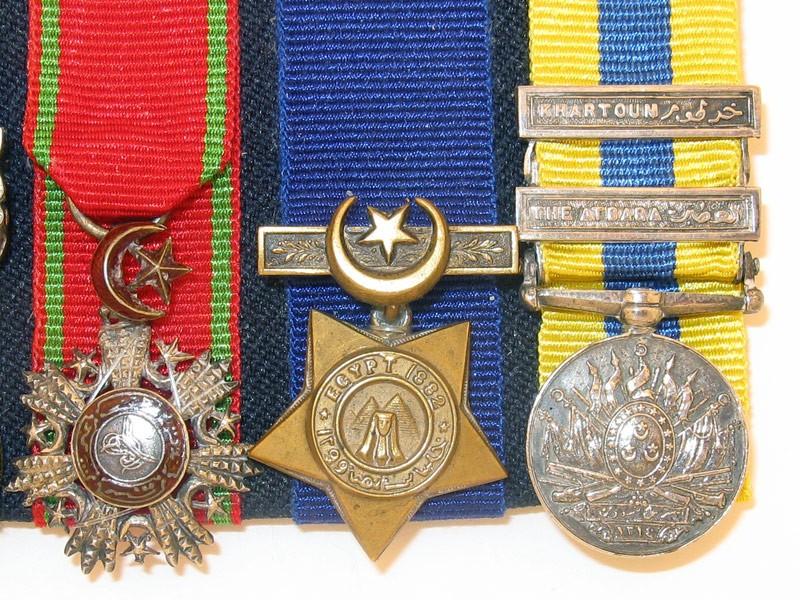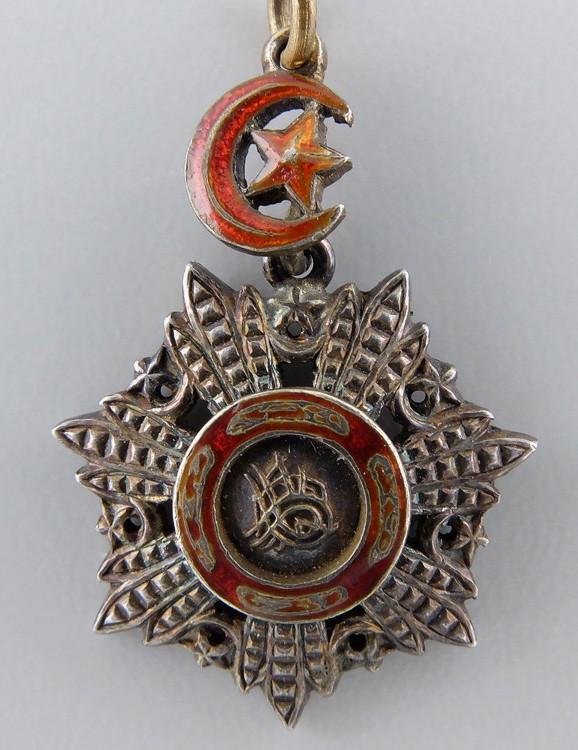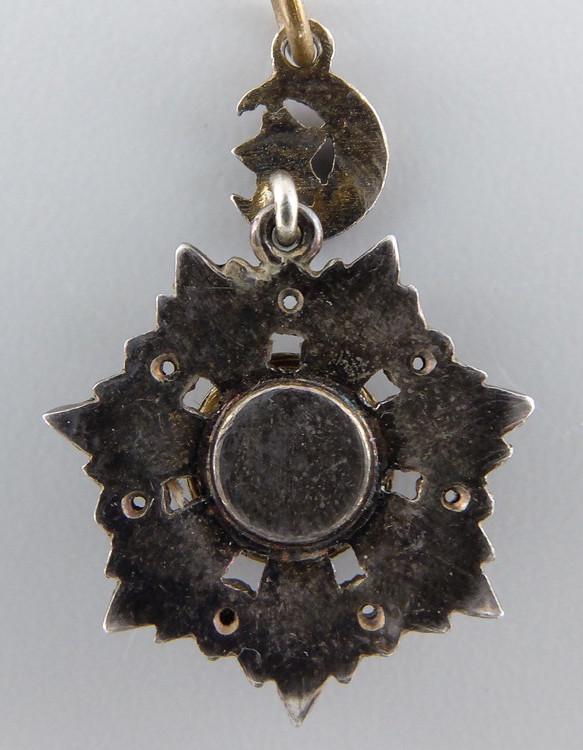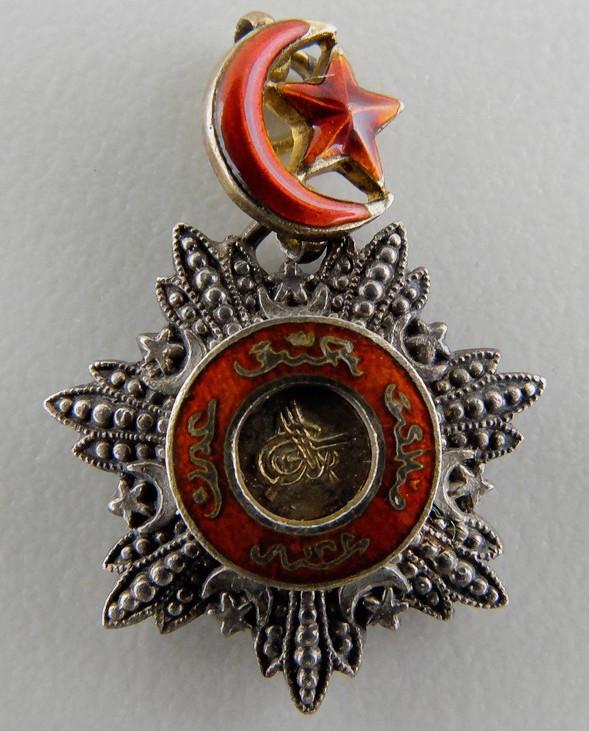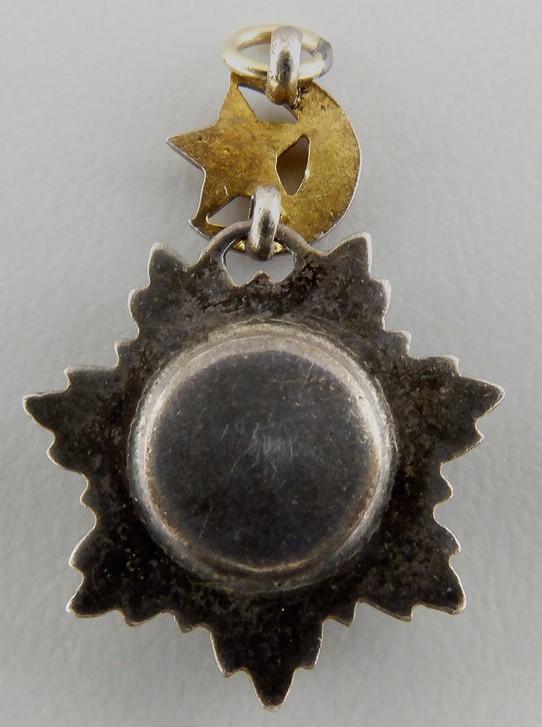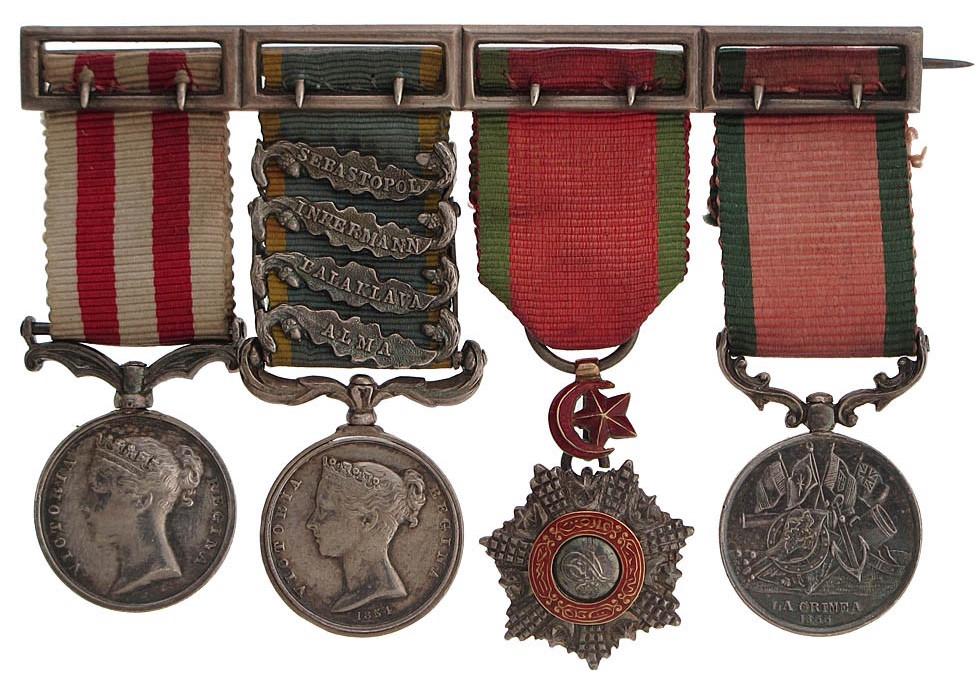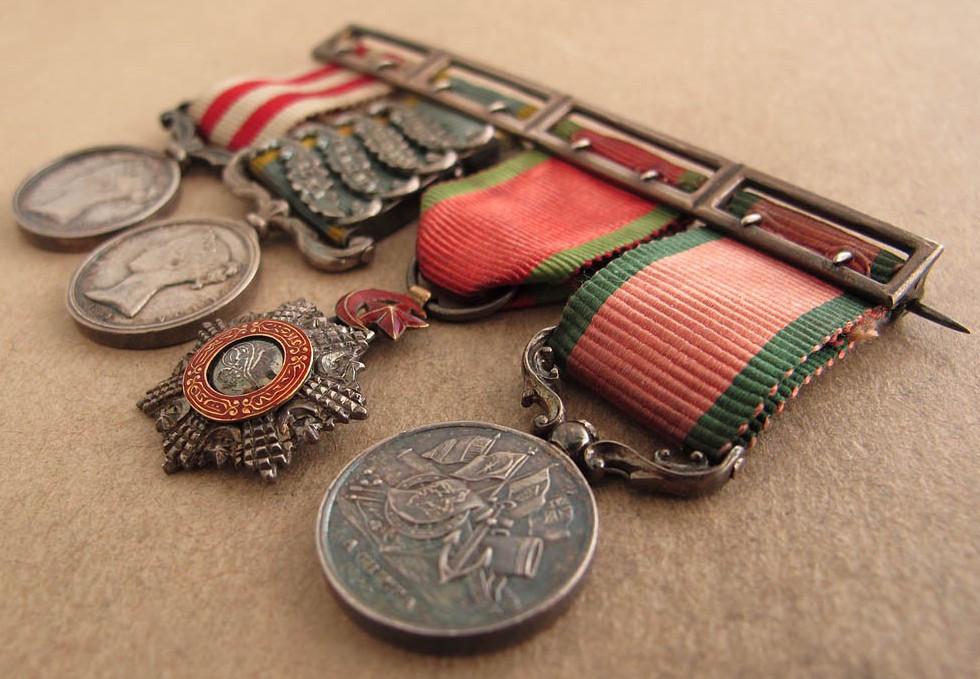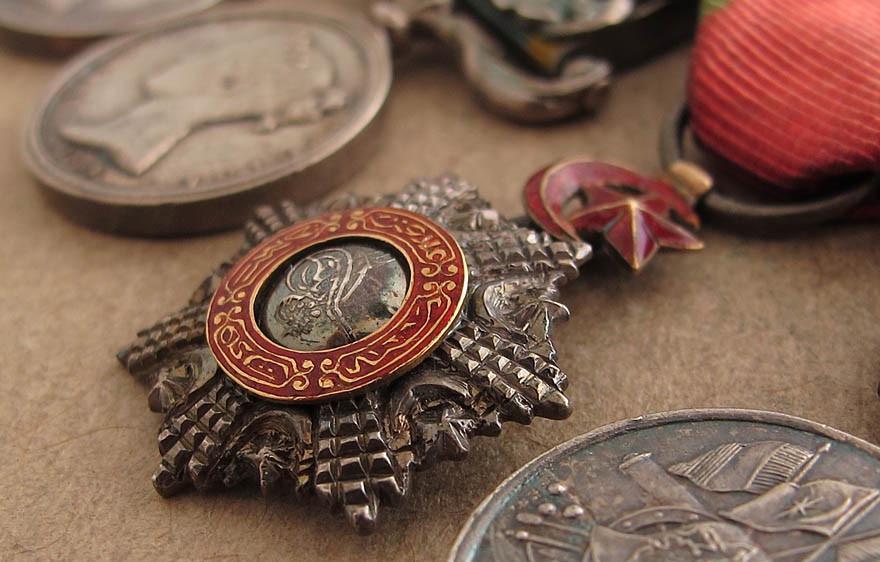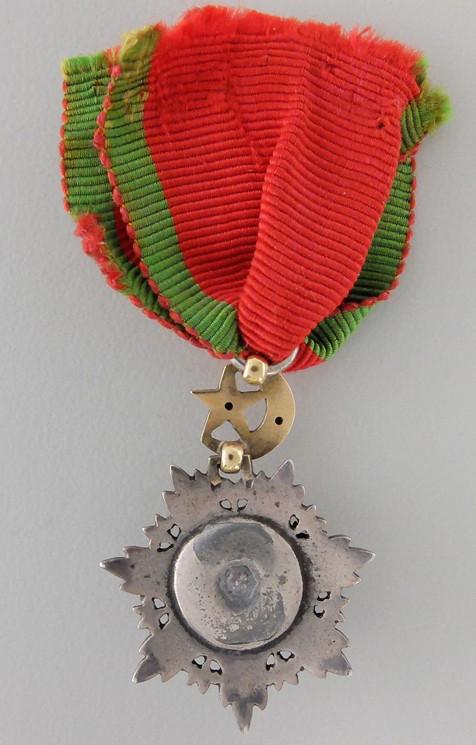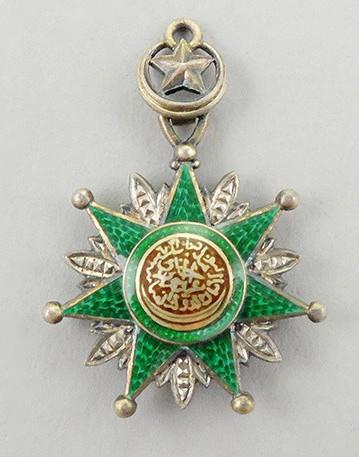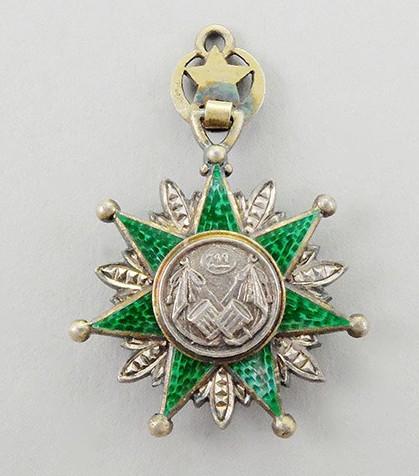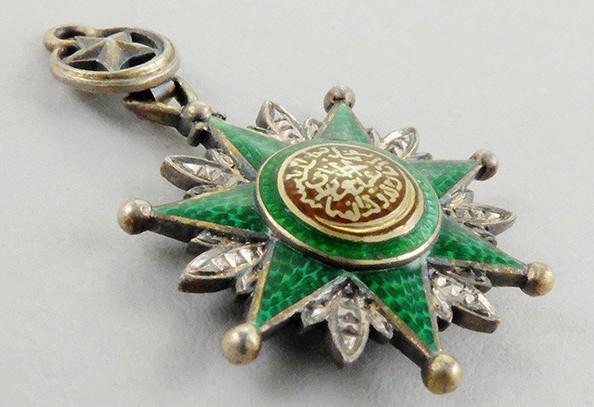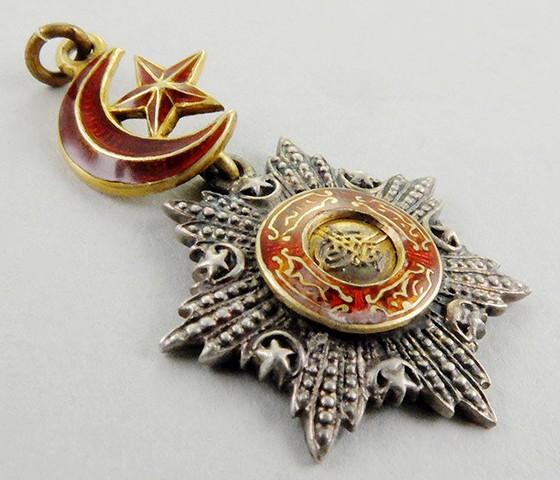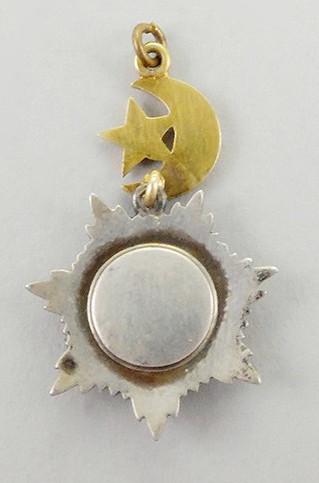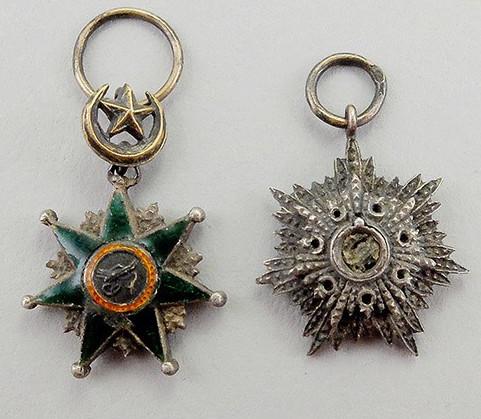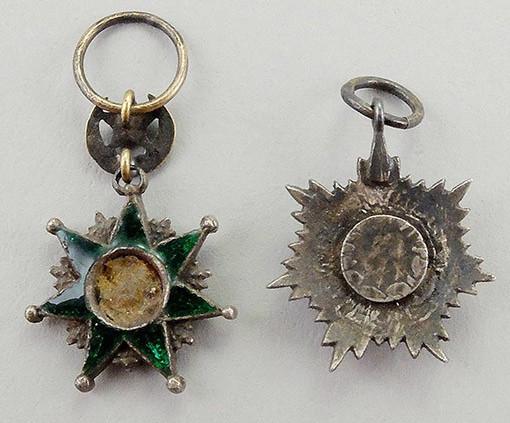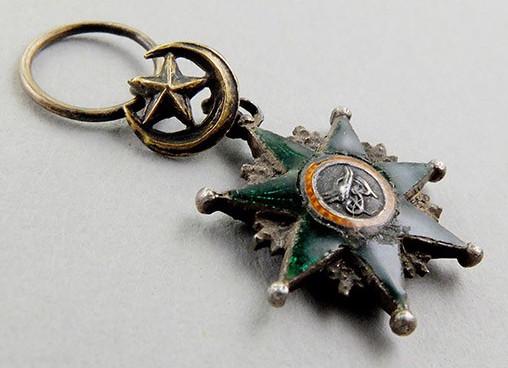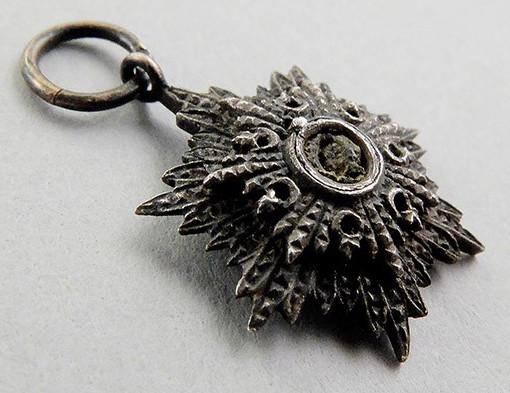-
Posts
2,429 -
Joined
-
Last visited
-
Days Won
5
Content Type
Profiles
Forums
Blogs
Gallery
Events
Store
Everything posted by Rusty Greaves
-
I have had minimal luck finding background information about J. Lattes, the manufacturer of the most beautiful examples of the Order of Ismail, as well as other Egyptian medals. I have previously given a short synopsis in my post of 14 November, 2017 on this thread of a brief mention in The Jewelers Circular and Horological Review, Vol 34, No. 24, of 14 July, 1897, pg. 9 of the shop of J. Lattes as a small but attractive store at the margin of the market area (the Muski) and what the author (Chas Crossman) termed the foreigner's quarters. I have recently been searching some advertisements relative to manufacturers of the Mixed Courts judicial badges, and came across an example of an undated folding business card for J. Lattes in English from an 18 July, 2018 eBay auction (https://www.ebay.com/itm/163133205268?rmvSB=true). The listing included low-resolution images of the 3 illustrations that make up the folding advertisement card pages measuring 4" X 5-3/8" when folded and 5-3/8" X 8" when opened. The first page is an advertisement , possibly for liquidation sale of some of Lattes' stock. This is the only information I have found identifying the founding date of Lattes' shop as 1860. The back page shows 7 coins, apparently with prices. When opened, the inside page shows a map of Cairo indicating the location of Lattes' shop on Sharia el Manakh street. There is a slightly higher resolution image of the first page of this card that I have included as the first image below. Page 1 of the J. Lattes folding trade card. Low-resolution image of the back page of this folding trade card. Low-resolution photograph of the interior map of the J. Lattes folding card showing the location of Lattes shop. Above is a roughly contemporary map of Cairo for tourists from the inside of a folding advertising flyer for the Victoria Hotel & New Khedival showing the location of that Hotel with the main street route of Sharia Kamel to Opera Square continuing to Sharia Abdine and a couple tram routes (from:https://www.flickr.com/photos/kelisli/12708781123/in/dateposted/). In comparison with the poor quality image of the eBay auction map image above, this higher-resolution map (that can be enlarged) does show the approximate location where J. Lattes shop was located on Sharia el Manakh (on the north side of the street?) between Sharia el Imad el Din on the west and probably an unnamed alleyway on the east side that is approximately 1/3 of a block west of Opera Square. In a listing of shops selling European wares for travelers to visit in Cairo from the 1908 book Egypt and the Sûdân: Handbook for Travellers, 6th Edition, by Karl Baedecker, Karl Baedeker Publishers, Leipzig (Dulau & Co., London; Charles Scribner's Sons, New York ) the author identifies the address of J. Lattes shop as "Sharia el-Manâkh 30". A telegraph office was located at the most western end of this block, identified as the "Eastern Telegraph Office" in a very good map from 1920 (titled: General Map of Cairo; created by the Survey of Egypt, 1920; Contributor Names: Egypt. Maṣlaḥat al-Misāḥah; Call Number: G8304.C2 1920 .E4; Digital ID: http://hdl.loc.gov/loc.gmd/g8304c.ct002478; Library of Congress Control Number: 200958102) available online though the US Library of Congress Geography and Map Division, Washington, D.C. 20540-4650 USA at https://www.loc.gov/resource/g8304c.ct002478/?r=-0.524,-0.324,2.049,0.835,0. This location also is listed as the "foreign telegraph office" located at "15 Sharia-el-Manakh" on page 21 of the travel guide: Cairo of To-Day: A Practical guide to Cairo and its Environs , 1898, by E. A. Reynolds-Bali, London, Adams and Charles Black (printed by R.& R. Clark, Limited, Edinburgh). Below are two stereo views of this market area taken on unidentified streets in the early 20th century. Stereo image titled: "The 'Muski'. The great street of Cairo and one of the most interesting in the world, Egypt", taken on approximately 21 September 1903 by William Hermann Rau. From the US Library of Congress Prints and Photographs Division, Washington, D.C. 20540, USA. Call Number: LOT 13980, no. 38; Digital ID: stereo 1s01871 http://hdl.loc.gov/loc.pnp/stereo.1s01871; Library of Congress Control Number: 2009631292; LCCN Permalink: https://lccn.loc.gov/2009631292 (From: https://www.loc.gov/item/2009631292/). Stereo view titled: "The Muski, Cairo Egypt", from the Keystone-Mast Collection at University of California Riverside Museum of Photography. Taken September 2, 1931by George Lewis (https://oac.cdlib.org/ark:/13030/kt6f59q0kj/?docId=kt6f59q0kj&order=2&brand=oac4&layout=printable)
-
Les and Jocktamson provide the most knowledgeable discussions of this topic. Their advice and warnings are the best suggestions about whether to treat older leather or not. An antique furniture restoration craftsman in Massachusetts recommended Skidmore's Leather Cream to me for treatment of the leather seat on a Campeche chair made by William Spratling in the 1940s (Spratling was from New York, educated as an architect in New Orleans, and made his name by reviving the Mexican silver industry in Taxco combining indigenous and art deco elements, he also made some furniture; Marilyn Monroe bought several pieces of furniture from Spratling shortly before her suicide; Spratling also assisted Diego Rivera in obtaining some of his early commissions for murals). This leather cream is made in Port Townsend, Washington state, USA. It contains no animal products, silicone, or driers. It has unspecified compounds from plants, trees, and beeswax. Skidmore also makes other beeswax products for wood finishes. As Peter Monahan noted, beeswax is used in some museum curation for attachments, rests, and holding items together as it is very reversible. The chair seat had suffered much use, some water damage, flaking, etc. I have found the treatment with Skidmore's Leather Cream (on both faces of the leather) to be most successful in restoring suppleness and protecting this leather. Skidmore's Leather Cream is, of course, not a museum curatorial product, but it is a good compromise between my wish to protect this valuable item for the future and enjoy sitting in it. This is not a product I use on the cattle or exotic leathers of my shoes, western boots, belts, etc. (where I use Lexol brand cleaner, conditioner, and then colored or neutral shoe creams for maintenance and protection of items in everyday use).
-

Egypt Khedivate Judge's Badge question
Rusty Greaves replied to Rusty Greaves's topic in Middle East & Arab States
An example of a Mixed Courts judicial silver badges manufactured by a jeweler I have not seen represented before is listed (Lot 74177) on a current auction by Heritage Auctions (https://fineart.ha.com/itm/silver-smalls/an-egyptian-silver-magistrate-s-badge-from-the-reign-of-abbas-ii-egypt-circa-1900marks-unidentified-cipher-zivy-fr/a/5403-74177.s) and also listed on liveauctioneers.com website (https://www.liveauctioneers.com/item/70835139_74177-an-egyptian-silver-magistrate-s-badge-from-the-r). This badge was made by Zivy Frères & Cie., a Swiss jewelry house, watchmaker, and goldsmith with addresses in Paris and at 10 rue Chèrif Pacha, Alexandria (the same street where Horovitz had a storefront at 26 rue Chèrif Pacha, see my post of 1 December, 2018 where I illustrated a silver badge made by Horovitz, and the last image in that shows a photo from ~1900 of the rue Chèrif Pacha). In addition to being the only badge made by Zivy Frères & Cie. that I have found photos of, this example has some interesting differences in the detail of its execution, and one very odd missing symbolic element. Obverse of the Mixed Courts badge made by Zivy Frères & Cie., Alexandria. The auction description calls this a "Magistrates badge from the reign of Abbas Hilmi II", identifies the manufacturer as Zivy Frères, considers the hallmark ("cipher") as unidentified, and gives the measurement as 4-5/8" (117.5 mm) high X 3-5/8" (~92 mm) wide, and provides a very approximate date of c.1900. The Zivy Frères & Cie. example shows some very significant variation in many details of its design compared with other Mixed Courts badges. The above image can be zoomed for additional detail. A couple aspects appear more detailed and three-dimensional; specifically, the depth of relief in the crown (although the superior crescent appears to be less detailed, the inferior band of the crown also shows less crisp definition of its design elements, and possibly other crown components are slightly different) and the execution of the tasseled cords at each of the upper corners of the mantle in the coat of arms. The interior loops (those on the crown side of the mantle corners) of the tasseled cords each form heart-shaped loops, compared with the more triangular ovals seen on all other examples. The exterior loops of these two cord elements also show somewhat greater detail (especially the left exterior loop) and relief. There is a raised "cord" border to the fringe and interior of the mantle that I also have not seen on other badges. Such a cord is present on the exterior portions of the mantle in other badges, between the embroidered portion of the mantle and the fringe, but not on the interior. The Zivy Frères badge also has a raised cord border on the two superior lateral exterior drapery folds of the mantle between the first (lower) panel of spiral "embroidery" next to the fringe and the more superior embroidery panel of triangular designs, also not seen on other examples. In contrast, many other elements of this Zivy Frères badge are much less detailed in their design. All 4 tassels are rendered in lower relief and detail, and each of the interior tassels lacks the longer, straight section of cord seen in all other examples. Both finials of the two tughs, as well as the horsetail embellishments, are executed in less detail, especially compared with the Froment-Meurice and Stobbe examples, and even compared with the Horovitz badge (the one Horovitz example I have seen photos of seems to be made with less careful craftsmanship than Froment-Meurice or Stobbe, but still is much more detailed the this Zivy Frères badge) that I illustrated in my post of 1 December, 2018 on this thread. The oak leaves on the L and the laurel leaves on the R of the tablet with inscription are much less detailed than on other examples, even less so than the Horovitz example. The superior star and rays above the inscription tablet may be lower relief and appear less finely designed. The ermine tail relief elements distributed across the interior of the mantle are executed in larger and much coarser fashion than on any other examples, and several that normally appear across other designs are missing (i.e., the two that appear below the oak & laurel branches and above the margins of the Order of Medjidie badge element; the 2 just below the cut ends of the oak & laurel branches; and the two on either side of the hand of justice on the superior finial of the L tugh, all of which are visible even on the less-detailed Horovitz example. The most dramatic differences from other badges are apparent in the lower portion of the badge. Below the union of the union of the oak & laurel branches, a ring is present, but the crescent and star is completely missing. This seems quite an odd omission of an important symbolic element. No other example I have seen lacks this Ottoman emblem. The Order of Medjidie is missing the full circumference of the 7-pointed, multi-rayed, star embellishment, and the central medallion frame is much thinner than on other badges. Its surrounding wreath also appears to be much less detailed in its execution. The auction description notes some damage to the enamel (of the central tablet’s inscriptions), but in comparing the inscription with other examples, there appears to be some lower elegance in the calligraphy of this example even before such damage occurred. Although the height dimension of this badge is not that anomalous (117.5 mm, compared with more common measurements of 115, or 116 mm, although at least one other example is identified as 117 mm), the width of 92.07 mm is slightly larger than almost all other examples from auction sites providing measurements that generally are 85 mm or maximally identified as 88 mm. The multi-rayed embellishment does appear to extend further beyond the mantle margins than on other manufacturer's examples. Close-up of the inferior portion of the Zivy Frères badge showing the missing crescent & star element below the tied oak & laurel branches and the much less detailed execution of the Order of Medjidie symbol. The coarser ermine tail decorations, the less well-modeled "fur" relief of the mantle interior, and less well-executed oak & laurel leaves also are apparent in this view. For comparison, above is the inferior design portion of the silver judicial badge made by Froment-Meurice and attributed to Judge Herbert Hills (http://www.dreweatts.com/auctions/lot-details/?saleId=13863&lotId=175). Reverse of the Mixed Courts badge made by Zivy Frères & Cie., Alexandria. Note that the 5 rivet fasteners normally visible on the reverse where the mantle component is attached to the multi-rayed embellishment are not present on this example, suggesting a soldered attachment rather than rivets (areas of solder may be visible along the joint between the central shield-shaped portion and the multi-rayed embellishment). . Reverse of the Mixed Courts badge made by Zivy Frères & Cie. with the tunic pin opened showing the placement of the name "ZIVY FRERES" and their manufacturer's hallmark. No silver assay hallmarks are visible on the reverse. Close-up view of the name "ZIVY FRERES" and probably their manufacturer's hallmark (unfortunately not detailed enough to be able to see clearly, but it does not appear to be a silver purity hallmark). The Zivy Frères name shows a double strike in its application. I have found very few internet images of Zivy Frères silver pieces, and none so far that show the firm's hallmark. Business card of Zivy Frères & Cie. (https://www.flickr.com/photos/kelisli/25209863512/in/dateposted/). Examples of this card also are currently offered on an eBay auction (https://www.ebay.com/itm/EGYPT-FRANCE-Zivy-Freres-Co-The-provider-of-Jewelries-to-HM-King-of-EGYPT/303120051239?hash=item46935cec27:g:YCIAAOSwWrNcFTNE). The crown in the upper left of the card is a version of the Egyptian Royal Crown. Advertisement for Zivy Frères & Cie. from pg. XX of Alexandrie: Reine de la Mèditeranèe, No 1, Juillet 1928, 1ère Partie (http://www.cealex.org/pfe/diffusion/PFEWeb/pfe_068/PFE_068_002_1_w.pdf(http://www.cealex.org/pfe/diffusion/PFEWeb/pfe_068/PFE_068_002_1_w.pdf). -

Egypt Khedivate Judge's Badge question
Rusty Greaves replied to Rusty Greaves's topic in Middle East & Arab States
I have some additional photos and information from the volume Les Juridictions Mixtes d'Égypte 1876-1926: Livre d'or Édité sous le Patronage du Conseil de l’Ordre des Avocats á l’Occasion du Cinquantenaire des Tribunaux de la Réforme, par le: Journal des Tribunaux Mixtes. Alexandrie, Egypte, Février 1926 that I wish to share. In this post, I want to include images and information associated with individuals I have mentioned in past posts. I will treat each person that I have found something about in the order that they appeared on this thread. The only individual I have not been able to get any additional information about from this publication is the Greek Judge Apostolo N. Gennaropoulo, whose cased silver judicial badge made by Froment-Meurice and a portrait photo appeared on an eBay auction of September, 2014. I first illustrated Judge Gennaropoulo’s badge and portrait in the final photo of my post of 24 March, 2017, and the reverse of his badge is shown in the 7th photo of judicial badges (the 3rd to last of the illustrations of Froment-Meurice manufacturer’s marks) in my post detailing manufacturer’s and assay hallmarks of 28 February, 2019. It may be that Judge Gennaropoulo was not appointed to the court until after 1926, when the Les Juridictions Mixtes d'Égypte 1876-1926 volume was published. So far, I have not found information about this individual in other research sources I have consulted. I have scanned the photos from the Les Juridictions Mixtes d'Égypte 1876-1926 volume that I am including below in black and white as that seems to provide better detail of the images. Each of them have the decorative ancient Egyptian frame motifs around the photos in a rose color as shown in the scanned images from my 1 April, 2019 post, although they do not appear in color here. All of the scanned photos from the Les Juridictions Mixtes d'Égypte 1876-1926 volume can be zoomed for somewhat greater details. Herbert Augustus Hills (1837-1907) I illustrated the obverse of the silver judicial badge identified as belonging to Herbert Hills of Great Britain, in the 1st photo of my post of 24 March, 2017. I illustrated the reverse of that badge that has a hand-written note attributing the badge to Judge Hills in my post of 7 November, 2017. I have included images of both the obverse & reverse of that badge below. Herbert Hills is identified in the Les Juridictions Mixtes d'Égypte 1876-1926 volume’s appendix listing of personnel for the District Courts. Hills is identified (pg. XII) as having been appointed in November of 1875 as a judge to the District Court in Alexandria, and promoted to Conseiller (legal advisor) to the Court of Appeals in October 1882 (Mark S. W. Hoyle, a moderately prolific recent scholar of the Egyptian Mixed Courts identifies his initial appointment year as 1876, probably an incorrect date, in his 1986 article: The structure and laws of the Mixed Courts of Egypt. Arab Law Quarterly, Vol 1 (3): 327-345). In the appendix list of personnel serving the Appeals Court, Hills is identified (pg. IV) as a former judge in Alexandria, and promoted to the Appeals Court in October, 1882, and he resigned in February, 1904. That section also states he was awarded the 2nd Class Order of Mejidie (he received this in either 1904 or 1905, a note in The Law Times: The Journal of the Law and The Lawyers, Vol CXIII of March 11, 1905, pg. 442 states that "Mr. Herbert Augustus Hill, late Judge in the Egyptian Mixed Court of Appeal at Alexandria, has received the Royal license and authority to accept and wear the Insignia of the Second Class of the Imperial Ottoman Order of the Medjidieh"). No photo of Judge Hills is included in the Les Juridictions Mixtes d'Égypte 1876-1926 volume, and I have not found any images of him in y other research. This information does not resolve the question I mentioned in both posts about why Judge Hills would have a silver badge when his appointment to the District Court of Alexandria should have meant his regalia included a gold and silver badge. It also puzzles me whether as a Conseiller in his later appointment to the Appeals Court he might have worn a gold judicial badges (the design for the Appeals Court), or retained a previous badge (again what should have been a gold & silver badge from his service on the District Court) as he was not a judge on that highest court. In both cases, this silver badge remains either an anomalous example of regalia associated with his identified roles on the Mixed Courts or a problematic attribution to Judge Hills. Obverse of the silver judicial badge attributed to Judge Herbert A. Hills of Great Britain (From a June 2015 auction : Dreweatts Bloomsbury Auctions; lot 175; formerly listed at: http://www.dreweatts.com/cms/pages/lot/13863/175, but archived on The Saleroom website: https://www.the-saleroom.com/en-gb/auction-catalogues/dreweatts/catalogue-id-drewea10199/lot-d2a1fe08-3bbf-4c29-a53d-a4aa00a27910). Identified as made by Froment-Meurice and measuring 12 cm high X 8.5 cm wide and weighing 173 g. Reverse of the badge attributed to Judge Hills, showing the note that is the basis for identifying this badge with Herbert Hills. It is uncertain whether the reverse has any hallmarks for Froment-Meurice. This image is a higher-resolution photo of the reverse than the version I uploaded in my may 7 November, 2017 post on this thread and can be zoomed for better details of the attached note. Alexander Cockburn McBarnet (1867-1934) Egyptian Zogist posted a link (in his post of 4 November, 2017) to an auction by Brightwells of November, 2017 that is archived on The Saleroom website (https://www.the-saleroom.com/en-us/auction-catalogues/brightwells/catalogue-id-srbr10077/lot-b19bfcb8-19b4-41fd-808e-a81900b1168c) of medals and clothing belonging to Alexander Cockburn McBarnet. I commented on the information about the judicial badge in this lot (282) in my 2 posts of 6 December, 2017 but did not illustrate the badge as it is a very low-resolution image. Owain commented on potential dating of some of McBarnet’s other awards in his post of 7 November, 2017 on this thread. The Brightwells’ auction of November 2017 identifies McBarnet as having been appointed as a District Judge in to the Indigenous (“Native”) Court of Appeals in 1913, as a judge in the District Court of Asyut (also indigenous?) in 1906, and as holding various other legal offices in Egypt subsequently. The appendices in Les Juridictions Mixtes d'Égypte 1876-1926 volume that identify past & current officials of the Appeals Court lists McBarnet (pg. V), of Great Britain, former Conseiller (legal advisor) to the Indigenous Court of Appeals (no starting date is given in this entry), but does identify him as having been appointed in December 1920 to the Mixed Appeals Court, and working in that office at the time of the 1926 publication. McBarnet is not in the photograph of the Appeals Court that I posted on April 1, 2019 in this thread. No photos of Judge McBarnet are featured in the Les Juridictions Mixtes d'Égypte 1876-1926 volume, and I have not yet encountered any others in my research. In regard to the question about McBarnet’s other awards discussed by me in both my posts of 6 November, 2017 and by Owain on 7 November, 2017, I previously overlooked the information in the Brightwells’ auction listing the original bestowal documents as April 14, 1914 for receipt of the 3rd Class Order of Medjidie, and the August 7, 1917 receipt of the 3rd Class Order of the Nile (additionally, his OBE was awarded on March 30, 1920 and CBE on March 24, 1922). Jasper Yeates Brinton's comment about restrictions on serving judges from receiving honors from the Egyptian government during their service (Brinton, Jasper Yeates, 1968. The Mixed Courts of Egypt, 2nd Edition. Yale University Press, New Haven, pp. 53-54) may not have been fully in effect at this time, or McBarnet may have received these during intervals between his different court service. I have photographs for future posts of earlier Mixed Courts judges wearing medals along with their judicial costumes, a practice that appears to have ended sometime in the earliest 1900s. Note in my discussion above that Judge Herbert A. Hills was not awarded the Order of Mejidie until after his retirement from the Egyptian Mixed Courts. Also in relation to this question, the entry for Pierre Crabitès in the Les Juridictions Mixtes d'Égypte 1876-1926 volume appendix listing personnel of the District Courts (pg. XI) does not identify his reciept of the Grand Officer Class of the Order of Ismail, consistent with Brinton's statement that, at least at this time, honors and awards were not given to sitting judges until the end of their tenure on the bench. Low-resolution image of awards of Alexander Cockburn McBarnet from the November 2017 Brightwells’ auction. From top to bottom: McBarnet’s judicial badge (identified in the auction description as 115 mm high X 85 mm wide, silver, & silver gilt), 3rd Class neck badge of the Order of Medjidie, 3rd Class neck badge of the Order of the Nile, Commander’s neck badge of the British CBE (civil). On the bottom left are his OBE breast badge and miniature of that award lacking its ribbon. On the lower right are miniatures of his OBE, Order of the Nile, and Order of Medjidie. Santos Manoël Jaoquim Rodrigues Monteiro (1879-1952) I illustrated a Portuguese commemorative medal celebrating the life of Dr. Manual Monteiro (of Portugal) in my post of 26 April, 2018 that identified him as a former judge on the Egyptian Mixed Courts. In the Les Juridictions Mixtes d'Égypte 1876-1926 volume, Santos Manoël Jaoquim Rodrigues Monteiro is identified as a judge in the District Court of Mansourah beginning in October, 1916 and was transferred to the District Court of Alexandria in February of 1921. He was still serving in that office at the time of the 1926 publication (pg. XV). Additional information about Dr. Monteiro is in my 26 April, 2018 post (i.e., he was made Vice-President of the Alexandria District Court in 1930, and resigned in 1940 to return to Portugal). Obverse of the table medal commemorating the life of former Mixed Courts Judge Dr. Manuel Montero, who also was an historical archaeologist, ethnologist, and art historian of Romanesque Portuguese art. Photo of the District Court officials of Alexandria, probably from 1925 from the Les Juridictions Mixtes d'Égypte 1876-1926 volume (pg. 192). This image can be zoomed for better details. Judge Monteiro is seated second from the viewer's right of the Court President, seated at the head of the far end of the table. The judges in this photo include, from the foreground left running clockwise around the table: Paul Joseph Randet (France); Dr. Alvaro da Costa Machado Villela (Portugal): Stavros Ange Vlachos (Greece); Adrian Theodor Louis Allard Heyligers (Netherlands); Dr. Jonkheer Hubert Williem van Asch van Wyck (Netherlands); Salvatore Messina (Italy); Paul Beneducci (Russia); Ragheb Bey Ghali (Egypt); Don Alfonso Aguirre y Carrer, Comte de Andino (Vice-President, Spain); Erling Qvale (President, Norway); Ahmed Fayek Bey (Chief of the Parquet, Egypt); Manuel Monteiro (Portugal); William Hobart Houghton Thorne (Britain); Antoine R. Keldany Bey (Egypt); Youssef Zulificar Bey (Egypt, later Pasha as he was the father of Queen Farida & father-in-law to King Farouk I, Youssef Zulificar also married the sister of fellow Mixed Court judge and Egyptian modernist artist Mahmoud Said); Mohamed Tewfik Zaher Bey (Egypt); Khalil Ghazalat Bey (Egypt); Mohammed Aly Zaki Bey (Egypt); and Rober Llewllyn Henry, Jr. (USA). The Chief Clerk, M. Adib Maakad Bey (Egypt), is shown sitting at the right away from the main assembly table. Michael Hansson (1875-1944) I illustrated a photo of the Norwegian Judge Michael Hansson wearing his judicial costume in my post of 3 May, 2018. This photo came from a Norwegian biographical website (https://nbl.snl.no/Michael_Hansson). This same portrait also appears in Hansson’s posthumously-published popular book on this life in Egypt: 25 år i Egypt, 1946. Forlagt Av. H. Aschehoug & Co., (W. Nygaard), Oslo (opposite page 17). I am including again this 1912 photo of Michael Hansson in his judicial costume below. He was apparently a prominent member of the Courts, and several additional photos and information are available in the Les Juridictions Mixtes d'Égypte 1876-1926 volume. In the listings of personnel in the District Courts, Hansson is identified (pg. XIV) as having been appointed in January 1907 to the District Court in Mansourah, transferred to District Court of Alexandria in October 1913, and promoted to Conseiller (legal advisor) to the Mixed Court if Appeals in April 1915. He is identified in the appendix listing personnel of the Appeals Court (pg. V) as a former judge to the Mixed Tribunals of Alexandria from April 1915, as Vice-President of the Mixed Court of Appeals in October 1924, and in 1926 he was still serving as Vice-President of the Appeals Court. Additional information on Hansson is in my 3 May, 2018 post; including his promotion to President of the Court of Appeals in 1927, his retirement from the Courts in 1931, and subsequent career with the the Permanent Court of Arbitration at the Hague, other international arbitration commissions, and 1938 Nobel Prize acceptance speech on behalf of the Nansen International Office for Refugees. Hansson also was probably awarded his Grand Cordon Class Order of Ismail and Order of the Nile after his retirement from the International Mixed Courts in Egypt, neither of this honors are mentioned in the Les Juridictions Mixtes d'Égypte 1876-1926 volume's descriptions of his career in Egypt. Portrait of Michael Hansson, from 1912 as a District Court Judge in Mansourah. In relation to the question I had about whether his sash is a single color or bi-colored, the appointment information in the Les Juridictions Mixtes d'Égypte 1876-1926 volume indicates his sash is a solid red as he was appointed to the District Courts at the time of this portrait. Portrait of Michael Hansson from a section in Les Juridictions Mixtes d'Égypte 1876-1926 volume listing past presidents of the Tribunal of Mansourah (pg. 50). The dates 1911-1913 identify his term as President of the District Court of Mansourah. The pleats in the sash in this image show that this was a feature of the District Courts sash as well, an aspect not always visible in other images of the Mixed District Court judges. Hansson also is illustrated in the above photo from pg. 190 of the Les Juridictions Mixtes d'Égypte 1876-1926 volume with the Tribunal in Mansourah in 1907, with all judges wearing their Court attire. Hansson is the 4th judge from the L in the back row. A much younger Mahmoud El Toayar Bey (thinner & with much more robust mustaches, compared with the 3rd and 4th photos in my post on this thread of 1 April, 2019, that I believe help identify him as the unnamed judge in the first 2 photos in that post) is standing next to him (identified as the Substitut du Procureur Général), the 3rd judge from the L in the back row. Mahmoud El Toayar Bey would have been at least 15 years younger in this image than the studio portraits I believe show him near the time of his initial appointment to the Court of Appeals (1922) and almost 19 years younger than the photos from the Les Juridictions Mixtes d'Égypte 1876-1926 volume identifying him in the assembly and in court that I posted on 1 April. This image can be zoomed for greater detail. When enlarged, this photo shows nicely the single color of the judges sashes (red) and the contrasting gold & silver coloration of the District Court badges. The other individuals are: Front row L-R: Youssouf Soliman Bey (Egypt); Anastase N. Stoupis (Greece); Luis Comulada (President, Spain); Boutros Youssef Bey (Egypt); Ovidio de Cergueira-Borges Cabral d’Alpoïm (Portugal). Back row L-R: an unnamed Egyptian guard; Moustapha Fathy Bey (Egypt); Axel Johan Patrick Adlercreutz (Sweden); Mahmoud El Toayar Bey (Egypt); Michael Hansson (Norway); Hussein Kamel Sourour Bey (substitute for the Procureur Général, Egypt); and an unnamed Egyptian guard. Portrait from the front matter of the Les Juridictions Mixtes d'Égypte 1876-1926 volume listing current high officers of the Mixed Courts (pg. 12). As Vice-President of the Court of Appeals, Hansson’s sash in this image should be green. It is a bit unclear whether he also would is wearing the gold badge of the Appeals Court, rather than what should have been the gold and silver badge of the District Courts. However, when enlarged this photo appears to show a badge of a single hue, lacking contrasting dark and lighter areas such as are visible as in the previous image of the badges worn by the Mansourah Court judges in 1907. Joseph Timmermans (born=?/d. 1897) On 31 October, 2018 I illustrated a Mixed Courts judicial badge that was from a September, 2014 auction by Jean Elsen & ses Fils archived on the acsearch.info website (https://www.acsearch.info/search.html?id=3990624). This badge was identified as having been used in the Courts of Alexandria and belonging to Joseph Timmermans who was correctly identified in the auction information as a Belgian who served as the Procureur Général prés les Juridictions mixtes á Alexandrie. Another part of the auction description gave his name as “Jules” Timmermans. His name is correctly Joseph Timmermans. He is identified in the Les Juridictions Mixtes d'Égypte 1876-1926 volume’s appendix listing of personnel on the District Courts (pg. IX) as Belgian, appointed as a judge to the District Court in Alexandria in April 1883, as a past Procureur Général prés les Jurisdictions Mixtes in June 1892, and in February 1894 was re-appointed as Judge in Alexandria. He died in Alexandria on 10 February, 1897. On pg XXII (in the listing for personnel of the Parquet) Timmermans’ entry confirms his positions as a former judge of the Mixed Tribunal of Alexandria, his appointment as Procurer Général starting in June, 1892, and resumption of his position as a judge on the Mixed District Court in Alexandira in February, 1894. In the Parquet listing on pg. XXII he also is identified as a recipient of the Order of Osmanieh, 3rdClass. The gold & silver District Court badge made by Froment-Meurice from the Jean Elsen & ses Fils auction of September 2014 attributed to Joseph Timmermans. The auction lot also included the award letter of Timmermans’ 3rd Class Order of Osmanieh, dated 16 March, 1893, apparently with a hand-written translation by the Khedive Abbas Hilmi II. In my post of 31 October, 2018 I was curious whether the appropriate badge for a Procureur Général associated with the office of the Parquet, should have been a silver badge. This question is resolved, at least partially, by the fact that Timmermans spent a significant amount of his career serving on the District Court of Alexandria. He would have appropriately been issued the gold & silver District Court badge for his initial appointment to the court in Alexandria, and may have used it (or another?) for his final 3 years on the District Court in Alexandria. Whether he retained this gold & silver badge during his time serving as Procurer, or whether he would have been issued another different badge (all silver) is still unclear to me, but perhaps the role of Procureur associated with bringing cases before the District Courts might have arrayed him in the regalia of the District Courts (gold and silver badge, but what color sash?) Portrait from the Les Juridictions Mixtes d'Égypte 1876-1926 volume identifying past Procureur Généraux of the Mixed Courts (pg. 42). The dates 1892-1894 are those of his service as a prosecutor. Carl Valdemar Kraft (1849-1924) In the 2nd photo of my post of 5 March, 2019 I included a postcard image of the Danish Judge Carl Valdemar Kraft. Additional images and a small amount of information about him also are available in the Les Juridictions Mixtes d'Égypte 1876-1926 volume. Kraft is identified as having been named to the District Court in Mansourah in January, 1896. He was transferred to District Court of Cairo in June of 1901. He reached the age of majority for court service in 1920. He was awarded the Grand Officer Class of the Order of the Nile (pg. X). Postcard portrait of Carl Valedemar Kraft found tucked into a copy of Michael Hansson’s: 25 år i Egypt, 1946. Forlagt Av. H. Aschehoug & Co., (W. Nygaard), Oslo that was owned by Rudolph Kraft (a brother of Carl Valdemar Kraft), that has Rudolph Kraft's name inside the front cover, dated 1948. See my post of 5 March that provides bracketing dates for why this portrait probably was made between Kraft's initial appointment in Mansourah in 1896 and 1914 when Atelier Reiser was relocated to Munich, either just before or after WWI broke out. This portrait was made in Reiser's studio in Alexandria (another was located in Cairo). Portrait of Carl Valdemar Kraft from the section of the Les Juridictions Mixtes d'Égypte 1876-1926 volume identifying past Presidents of the Mixed Tribunals of Cairo (pg. 48). The dates 1916-1920 are the period of his tenure as President of the District Court of Cairo. The Les Juridictions Mixtes d'Égypte 1876-1926 volume spells his name “Karl”, which appears to be incorrect. All other sources I have located spell his name “Carl”, including hand-written information on the back of the Reiser postcard portrait of Kraft (shown above) in the handwriting of his brother Rudolph Kraft. The Les Juridictions Mixtes d'Égypte 1876-1926 volume does have some discrepancies in the spelling of Egyptian and foreign names between the legends on portraits, group photos of courts and functionaries, and the listing of career highlights in the appendices. I have used the spellings in the appendices, as they provide the full names of individuals who often are listed by the letter of their first names and surnames, surnames only (almost exclusively for foreign personnel only), partial honorific, or with alternative spellings to those in some of the figure captions. Carl Valdemar Kraft is shown in the above group photo in the Les Juridictions Mixtes d'Égypte 1876-1926 volume (pg. 189) of the Cairo Tribunal in 1909, seated second from L in the first row. This image can be zoomed for better details. The other individuals in the photo are, front row L–R: Mohamed Sadek Bey (Egypt); Carl Valedemar Kraft (Denmark); Dr. Frédéric Herzbruck (President, Germany); Diderik-Galtrup-Gjedde Nyholm (Denmark); and Achille Adolph Eeman (Belgium). 2nd row L-R: Herbert Welk Halton (Britain); Youssouf Aziz Bey (Egypt); Cornelis Bernardus Johannes Aloysius Wierdels (Netherlands); Walter Van Renssalaer Berry (USA); Francis Laloë (France); and Julius Cornélis Théodorus Heyligers (Netherlands). Back row L-R: Luis Comulada (Spain); Mohammed El Naggari Bey (Egypt); Fuad Gress Bey (Egypt); and Ahmed Raguib Badre Bey (Egypt). -
Below is a cased example of the 3rd Class, Commander, Order of Ismail from Lot 1027 in an April, 2019 auction on Very Important Lot (https://veryimportantlot.com/en/lot/view/egypt-ismail-order-nischan-al-ismail-3-class-175085). This example is made by Lattes of Cairo. The dimensions of this example are given as 83 mm high X 61 mm wide, and it weighs 49.0 g. The description identifies this piece as 750 gold, correctly as 14 k gold. These are not high resolution images, but they confirm the hallmark placements on the Lattes-made Order of Ismail as seen in other examples I have illustrated on this thread. Obverse of this Commander Class Order of Ismail in its case. Oblique view of the obverse of this 3rd Class Order of Ismail in its case. Reverse of this 3rd Class Order of Ismail showing the full set of 3 hallmarks on the suspension clip to the ribbon, the single hallmark for Cairo manufacture of 18 k gold, and the full set of 3 hallmarks on the reverse boss of the central medallion. The resolution is low, but all appear to match the close-up image of the hallmarks on the suspension clip (shown below). Detail of the obverse of the crown suspension device, showing the placement of the 3 hallmarks on the right side of the suspension device arm connecting the superior ray of the star with the crown suspension device. Close-up detail of the reverse of the crown suspension and suspension clip showing the only good resolution image of the hallmarks on this example of a Commander Class of the Order off Ismail. The 3 hallmarks on the suspension clip indicate the Cairo assay office identification of 18 k gold, the ibis for Egyptian manufacture, and the letter "A" indicating manufacture in 1925-1926. The single hallmark on the reverse the crown device shows the Cairo assay office designation of 18 k gold. Inside of the superior lid of the case associated with this Commander Class Order of Ismail showing the inscriptions. View of the exterior upper lid of the case for this Order of Ismail. Lot 1028 from the same April 2019 auction by Very Important Lot also included the example below that is erroneously listed as a miniature of the Order of Ismail (https://veryimportantlot.com/en/lot/view/egypt-ismail-order-nischan-al-ismail-and-the-m-175086). This is the same design as an item from a December 2017 auction by Spink & Son, archived on the Salesroom website (https://www.the-saleroom.com/en-us/auction-catalogues/spink/catalogue-id-srspi10156/lot-bd1c4e4c-7dc1-4560-a3c7-a83200ba36e7) that I previously illustrated in the 2nd photo of my first post on 6 December, 2017 on this thread (also identified by Spink & Son as a miniature of the Order of Ismail). Owain identified this as the Order of the Star of Ethiopia in his post here of 6 December, 2017. See his comments in that post on the poor workmanship of this particular design (probably the same Spink & Son example). Obverse of this Order of the Star of Ethiopia that is misidentified in the Lot 1028 description on the Very Important Lot website as a miniature of the Order of Ismail. The ribbon is that for the Order of Ismail, rather than the red, yellow, & green appropriate for this Ethiopian medal. There are several significant similarities in this example to the one I illustrated on 6 December 2017 indicating it is probably the same piece from the Spink & Son December, 2017 auction. That auction description by Spink & Son identified what may be this exact piece as 25 mm high including the crown suspension X 16 mm wide. Reverse of this same Order of the Star of Ethiopia misidentified as a miniature Order of Ismail on the Very Important Lot auction site for Lot 1028. The description states that the silver purity mark on the reverse reads "935", however, it is probably "925", as identified in the Spink & Son auction description.
-
Wow, what a fun assortment of chamberlain's pins! Of course, I also appreciate your putting a photo in with a silver Parquet version of the Mixed Courts judicial badge. This appears to be the same judicial badge that Mohamed Eissa illustrates in an artsy photo from Abdine Palace on his flickr site (https://www.flickr.com/photos/eissaphotos/3396138687/in/pool-egyptianroyalty/). Many thanks Owain. Below are a few images of chamberlains wearing these pins. Unfortunately none of the images provide any details of the pins, and they can only be recognized by their position and shape. Most of these images can be zoomed for at least some additional detail. Above is an undated photo of Queen Farida visiting the National Library. To the viewer's R is a Chamberlain wearing the chamberlain's pin on his R lapel. The Chamberlain looks a lot like an older Ismail Teymour Pasha. (From: https://www.flickr.com/photos/kelisli/1002210535/in/photostream) This scene is at the at the foot of the Tashrifah staircase, the 2 chamberlains on the far right are Said Zulificar Pasha (Grand Chamberlain) at the far R, and Ahmed Hassanein Pasha (Premier Chamberlaisn) just to the viewer's left of the Grand Chamberlain. Both can be seen wearing the chamberlains' pins on their R lapels. (From: https://www.flickr.com/photos/12889139@N08/3010690482/in/photostream/) King Farouk I's Grand Chamberlain's Cabinet in the 1920s. This image can be zoomed to making reading the names & titles easier. (From: https://www.flickr.com/photos/kelisli/8155481320, courtesy of Mrs. Dahlia Zulfikar) A higher resolution image of the same Grand Chamberlain's Cabinet of King Farouk I, but lacking the identifications of all the individuals as in the above, lower-resolution image. (From: ttps://www.flickr.com/photos/kelisli/2819700285/in/photostream, courtesy of Ms. Maha Mahmoud) Letterhead for the Cabinet of the Grand Chamberlain (From: https://www.flickr.com/photos/kelisli/9011781015/in/pool-egyptianroyalty/) A group of Court Officials during King Farouk I's reign wearing what appear to be chamberlain's pins on their R lapels. (From: https://www.flickr.com/photos/kelisli/8395692018/in/pool-egyptianroyalty/, courtesy of Mr. Aly Zulfikar) To get back to the Order of Ismail, below are 2 images of named individuals wearing the Order of Ismail, a couple photographs of King Farouk I's personal regalia of the Grand Cordon Order of Ismail, and a photo of an individual wearing the Order of Ismail at a royal banquet whose name is given in an Arabic label above him. A photo from King Farouk I's 18th birthday celebration in 1938. From L to R are: Princess Nimatalla Mukhtar (1876–1945), Farouk's paternal aunt; King Farouk I wearing the Collar, sash, and breast star (visible in other photos from this celebration) of the Order of Mohamed Ali; Queen Farida (1921-1988) wearing the Grand Cordon sash and badge of the Order of el-Kamal in brilliants; Sultana Melek (1869–1956), widow of Sultan Hussein Kamel, Farouk's paternal uncle; wearing the Grand Cordon sash and badge of Order of el-Kamal; Prince Soliman Daoud wearing the breast star of the Order of Ismail, possibly with the sash of that Order indicating the Grand Cordon Class. (From: https://www.flickr.com/photos/kelisli/5666876587/). The Grand Chamberlain Said Zulificar Pasha in his Chamberlain's coat wearing the breast star of the Grand Cordon Class of the Order of Ismail in superior position on his right breast, along with his many other awards. This is a cropped image from pg. 206 of The Graphic, November 12, 1930 that features a number of Egyptian "Notables". At the time, Said Zulificar was the Grand Chamberlain to King Fuad I. The Le Mondain Ègyptien: the Egyptian Who's Who: L' Annuaire de l' Elite d' Egypt. F. E. Noury & Fils, le Caire for 1939 identifies the following awards for Said Zulificar Pasha (pg. 388): Grand Cordon of the Order of Mohamed Ali, Grand Cordon of the Order of Ismail, Grand Cordon of the Order of the Nile, Grand Cordon of the Belgian Order of Leopold II, Grand Cordon of the Iranian Order of Homayoun, the 1st Class Syrian Medal of Honor, and the 1st Class Lebanese Medal of Honor and Merit. (cropped from: https://www.flickr.com/photos/kelisli/7762810122/in/pool-egyptianroyalty/) Photo of the 3 awards belonging to King Farouk I that he probably wore more than any other decorations. Upper L is the sash and sash badge of the Grand Cordon Order of Mohamed Ali, upper R shows detail of some of the Collar of Mohamed Ali, lower R is a piece that was worn inside of the pendant on the Collar of the Order of Mohamed Ali featuring King Farouk I's cypher surmounted by Egypt's royal crown; middle row far L is the breast star of the Grand Cordon Class of the Order of Mohamed Ali; middle center is King Farouk I's breast star of the Grand Cordon Order of Ismail; lower L is the breast star of the Grand Cordon Class of the Order of the Nile. From: : https://www.flickr.com/photos/27031646@N08/2521809470/in/pool-egyptianroyalty/) A low-resolution photo of King Farouk I's Grand Cordon Order of Ismail breast star (L) and sash badge (R). These are identified as from the Alexandria National Museum. (Cropped from: https://www.flickr.com/photos/36914349@N04/4397389512/in/pool-egyptianroyalty/) A photo of a Royal Banquet in honor of the Crown Prince Mohammad Reza Pahlavi of Iran (5th from R, next to King Farouk I). The man in round glasses 3rd from King Farouk I's R is wearing a breast star of the Order of Ismail. Perhaps one of the Arab speakers on GMIC could provide the name of this individual by zooming this image. (From: https://www.flickr.com/photos/43829903@N02/4047823450/in/pool-egyptianroyalty/)
-

Egypt Khedivate Judge's Badge question
Rusty Greaves replied to Rusty Greaves's topic in Middle East & Arab States
I believe I may have identified 2 individuals in two of the best portraits of Mixed Courts judges that have been posted on this thread. I have previously posted 2 of these portraits of one Egyptian judge and Egyptian Zogist posted the other of a European judge, but will add them here as well for reference. These visual identifications are based principally on photographic information from the interesting volume celebrating the 50th anniversary off the Egyptian Mixed Courts, published in 1926 that I referenced for the photo of Mahmoud Said in my post of 5 March, 2019 (Les Juridictions Mixtes d'Égypte 1876-1926: Livre d'or Édité sous le Patronage du Conseil de l’Ordre des Avocats á l’Occasion du Cinquantenaire des Tribunaux de la Réforme, par le :journal des Tribunaux Mixtes. Alexandrie, Egypte, Février 1926). While my comparisons are hardly ironclad, I have been searching other images for some time trying to see if it was possible to identify these 2 individuals. One of the greatest difficulties is that these portraits (the first 2 photos below and the painted portrait that is the 5th image below) were made when the judges were young (probably ~1911), and the best photos I have found with possible matches date from ~1926. The same is true comparing Judge Crabitès, whose 1911 portrait at the time of his initial appointment to the District Courts in Cairo (age 34) differ's markedly from how he looked when the 7th photo below was taken, probably c1926. I would not post this if I did not feel there is a very good chance that the individuals depicted in these portraits that show excellent details of the judicial costumes of the Mixed Courts' judges are the Judges I may have been able to identify through the detailed information available in the Les Juridictions Mixtes d'Égypte 1876-1926 volume. These 2 studio portraits above, made in the Jean Weinberg Studio in Cairo, were offered on eBay auctions by shebacoin between ~October 2017-September 2018. They show an unnamed Egyptian judge wearing the green sash of the Appeals Court. I believe they represent Judge Mahmoud El Toayar Bey. I have compared faces and body girth for the Egyptian judges who appear in photos of the Appeals Court in the Les Juridictions Mixtes d'Égypte 1876-1926 volume, and while the images below show a slightly older man, I think the similarities make this a high probability that the studio portraits above are of Judge Mahmoud El Toayar Bey. No other Egyptian judge in the Appeals Court photos from the Les Juridictions Mixtes d'Égypte 1876-1926 volume show a better match in their facial features (especially the eyes, eyebrows, mouth, chin and cheeks) and robust body to those seen in the studio portraits above of the unnamed Egyptian Appeals Court judge. Judge Mahmoud El Toayar Bey was appointed as Chief of the Parquet of Mansourah in November 1911, transferred to the Cairo in February, 1913, and was promoted to the Court of Appeals in May, 1922. His role on the Appeals Court appears to have been as Conseiller (advisor) to the Court, possibly not as a judge. Several additional photos in the Les Juridictions Mixtes d'Égypte 1876-1926 volume also appear to show some court advisors wearing the same judicial garb as judges. Mahmoud El Toayar Bey is shown as the fourth man from the near end on the left side of the table (1st man on that side from the near end wearing a tarboosh). This image can be zoomed for a somewhat more detailed view. The other judges are: Mohamed Bahi El Dine Barakat Bey (Egypt), Constant van Ackere (Belgium), Bernard Favenc (France), Mahmoud El Toayar Bey (Egypt), Richard Augustus Vaux (Britain), Abdel Aziz Kahil Pacha (Egypt), Fouad Gress Bey (Egypt), Michael Hansson (Norway, Vice President, see also the photo Judge Hansson in my post of 3, May 2018 in this thread), Nicolas Cambas (Greece, President), Firmin van den Bosch (Belgium, Procureur Général), Soubhi Ghali Bey (Egypt), Ralph Bertie Peter Cator (Britain), Moustapha Behram Bey (Egypt), Alexander Cockburn McBarnet (Britain), Jasper Yeates Brinton (USA, his portrait painted by Mahmoud Said [see above post of 5 March 2019] is shown in my post of 1 December, 2016), Giovanni Baviera (Italy), and Don Enrique Garcia de Hereros (Spain). At the far right is M. G. Coroni Bey, the Chief Clerk. (Above photo from: Les Juridictions Mixtes d'Égypte 1876-1926: Livre d'or Édité sous le Patronage du Conseil de l’Ordre des Avocats á l’Occasion du Cinquantenaire des Tribunaux de la Réforme, par le journal des Tribunaux Mixtes. Alexandrie, Egypte, Février 1926, pg. 191). Mahmoud El Toayar Bey is shown in this 1926 courtroom photo as the 4th judge seated from the left end of the semicircular bench. This image also can be zoomed, but the additional details of Judge Toayar Bey are not terrific. The other judges are (L-R): Firmin van den Bosch (Belgium, Procureur Général), Constant van Ackere (Belgium), Richard Augustus Vaux (Britain), Mahmoud El Toayar Bey (Egypt), Jasper Yeates Brinton (USA), Ralph Bertie Peter Cator (Britain), Soubhi Ghali Bey (Egypt), Michael Hansson (Norway, Vice President), Nicolas Cambas (Greece, President), Fuad Gress Bey (Egypt), Moustapha Behram Bey (Egypt), Abdel Aziz Kahil Pacha (Egypt), Giovanni Baviera (Italy), Bernard Favenc (France), Mohamed Bahi El Dine Barakat Bey (Egypt), and Don Enrique Garcia de de Hereros (Spain). In front of the judges are the lawyers for the plaintiff, and nearest the camera are the clerks, some lawyers (wearing the French chausse à bourrelet or, more commonly it is called the épitoge, roughly the French version of the academic hood in British and American usage), and an interpreter. (Above photo from: Les Juridictions Mixtes d'Égypte 1876-1926: Livre d'or Édité sous le Patronage du Conseil de l’Ordre des Avocats á l’Occasion du Cinquantenaire des Tribunaux de la Réforme, par le journal des Tribunaux Mixtes. Alexandrie, Egypte, Février 1926, pg. 198). Mahmoud El Toayar Bey also is identified in the Le Mondain Ègyptien: the Egyptian Who's Who: L' Annuaire de l' Elite d' Egypt. F. E. Noury & Fils, le Caire for 1939 (pg. 361), 1941 (pg. 272) and 1943 (pg. 246) as having been awarded the Grand Officer Class of the Italian Order of the Crown, the Grand Officer of the Tunisian Order of Glory (Nichan Iftikhar), the Spanish Cross of Isabella the Catholic, and the Knight of the Swedish Royal Order of the Polar Star. Those same three issues of Le Mondain Egyptian also identify him as a former legal advisor to the Appeals Court, indicting that he must have retired form his judicial career before 1939. Unfortunately, I currently have little additional information about Mahmoud El Toayar Bey. Egyptian Zogist posted this portrait on 23 November, 2016 in this thread. I have found several versions of this portrait on Pinterest (for example: https://www.pinterest.com/pin/410460953518450951/?lp=true). All of these borrowed images identify the individual incorrectly as Abbas Hilmi II. The red sash and the gold and silver judicial badge clearly indicates this is a judge of one of the District Courts. The individual looks European. I have not found any other versions of this portrait, other than the several Pinterest examples that all misidentify the subject as Khedive Abbas Hilmi II. After searching several photos, I believe this may represent Raoul Houriet, a Swiss judge on the District Courts of Cairo. I believe that there is a strong resemblance between the painted portrait above and a couple photographs of Judge Raoul Houriet in the Les Juridictions Mixtes d'Égypte 1876-1926 volume. These 2 pictures (above and below) show an older man than in the painted portrait above, but the similarity in nose, chin, chin dimple (somewhat visible in this photo), mustaches, and glasses in these couple photos seem a very good match with the portrait. Some aspects of Houriet's ear in the above image are the only facial element that contrasts with the above painted portrait. He is not listed in the 1939, 1941, or 1943 Le Mondain Ègyptien: the Egyptian Who's Who: L' Annuaire de l' Elite d' Egypt. F. E. Noury & Fils, le Caire, that also has photos of certain notable individuals (Egyptians and foreigners). I have not found another individual's portrait that seems to match the painted portrait of a younger judge better than these couple images of Raoul Houriet. This image can be zoomed, but the detail is not much better in enlarged views. Raoul Houriet lived in Egypt from 1910-1937. He was appointed to the District Courts in Cairo in May of 1916, and made the President of that Tribunal in January 1922. He became an Appeals Court judge in Alexandria in 1929. A small amount of information about Judge Houriet's judicial career in Egypt is published in: Zimmili Hardman, Esther, 2008. From Camp Caesar to Cleopatra’s Pool: A Swiss Childhod in Alexandria, 1934-1950. The Alexandria and Mediterranean Research Center Monogaphs 4. Biblioteca Alexandrina, in Les Tribunaux Mixtes et la Suisse. In Numéro Spécial du 1er Aout 1949 du Journal Suisse d’Égypte et du Proche-Orient. Alexandria: 1949, pp.79–81 avaialbe online at: https://www.bibalex.org/Attachments/Publications/Files/2013032015414960823_FromCampCeaesartoCleopatrasPool.pdf), and in: Shalash, Yehia. My Book Project: The Swiss Egyptians & The Egyptian Swiss The Theban Legion Story (book proposal). AAHA = Amicale Alexandrie Hier et Aujourd'hui. Cahier No 76 September 2014 (available at http://www.cealex.org/pfe/diffusion/PFEWeb/pfe_028/PFE_028_019_w.pdf). Mention of his role in sitting on the board selecting the architectural design for the Palace of Justice in Cairo, built between 1925 -1934, as the only representative of the Mixed Courts on the panel reviewing the submitted architectural designs is in a short article on the Palace of Justice by Samir Raafat in the Cairo Times of 2 April, 1998 (avaialbe at: http://www.egy.com/landmarks/98-04-02.php). (Above photo from: Les Juridictions Mixtes d'Égypte 1876-1926: Livre d'or Édité sous le Patronage du Conseil de l’Ordre des Avocats á l’Occasion du Cinquantenaire des Tribunaux de la Réforme, par le journal des Tribunaux Mixtes. Alexandrie, Egypte, Février 1926, pg. 35). Raoul Houriet (Switzerland, President) is seated at the head of the table at the left end. This image can be zoomed for greater detail comparing Judge Houriet to the painted portrait above. Again, the facial configuration of nose, chin (and dimple), mustaches, and glasses seem to match the image of the younger judge in the painted portrait better than any other judges' images for the District Courts that I have been able to examine. The other judges in this photo are (from R to L, beginning with the individual on Judge Houriet's right, on the near side of the table): Mohamed Onsi Bey (Egypt, Chief of the Parquet), Pierre Crabitès (USA, my wife's great grandfather, see the 1911 portrait of a younger Judge Crabitès in the second photo of my post on 14 November, 2018), Mohamed Izzet Bey (Egypt), Abdel Latif Korchid Bey (Egypt), Mohamed Naguib Choukri Bey (Egypt), Mohamed Fouad Housny Bey (Egypt), Alfred Emile Frédéric Sandstroem (Sweden), George Arthur Warrington Booth (Britain), Léon Pierre Joseph Bassard (France), Constantin Vryakos (Greece), Charles Oger du Rocher (France), Halvard Nicolaï Heggen (Norway), Moustafa Neguib Bey (Egypt), Arthur Samson Preston (Britain), Hugues Holmes (Britain), Franco Gautero (Italy), Zaki Ghali Bey (Egypt), Niels Wilhelm Boëg (Denmark), Vincenzo Falqui-Cao (Italy), Georges Molotsvoff (Russia), Francis J. Peter (Switzerland, Vice President). To the left of President Houriet is M. Lucchesi Bey, Chief Clerk. (Above photo from: Les Juridictions Mixtes d'Égypte 1876-1926: Livre d'or Édité sous le Patronage du Conseil de l’Ordre des Avocats á l’Occasion du Cinquantenaire des Tribunaux de la Réforme, par le journal des Tribunaux Mixtes. Alexandrie, Egypte, Février 1926, pg. 193). Image of the judicial badge design on the back cover of the volume: Les Juridictions Mixtes d'Égypte 1876-1926: Livre d'or Édité sous le Patronage du Conseil de l’Ordre des Avocats á l’Occasion du Cinquantenaire des Tribunaux de la Réforme, par le journal des Tribunaux Mixtes. Alexandrie, Egypte, Février 1926. -
Below is another photo of Ahmen Hassanein wearing the Order of Ismail This is a photo taken on 27 November, 1939 of King Farouk I leaving the Egyptian Parliament building (L). The person just R of the King is Ahmed Hassanein Pasha in his Grand Chamberlain's uniform wearing the regalia of the Grand Cordon of the Order of the Nile and the breast star of the Grand Cordon Class of the Order of Ismail. It is difficult to identify the other chest medals he is wearing. On Hassanein's R shoulder is the Grand Chamberlain's pin worn when in attendance to the king. To the R of Hassanien saluting King Farouk is Aly Maher Pasha serving his second term as Prime Minister. From: https://www.flickr.com/photos/kelisli/4765920110/in/photostream Above are images of 2 different examples of the Chamberlain's pin from the period when Farouk I was king, his cipher is the central design.This pin is worn on the right lapel when the Chamberlain is on duty serving the royal family (upper pin from: https://www.flickr.com/photos/kelisli/20322111042/in/photostream; lower pin from: https://www.flickr.com/photos/kelisli/12036519145/in/photostream
-

Egypt Khedivate Judge's Badge question
Rusty Greaves replied to Rusty Greaves's topic in Middle East & Arab States
Below is an image of a named Egyptian judge on the Mixed Courts. This undated photo shows Ambassador Sami Ali Aboulfetouh Bey (R) and Judge Ismail Ali Aboulfetouh Bey (L). I can find only a small amount of information about Sami Ali Aboulfetouh Bey, but Judge Ismail Aboulfetouh is listed in the 1941 and 1943 editions of Le Mondain Égyptien: The Egyptian Who's Who, L' Annuarie de l' Elite d' Egypt. (F.E. Nouri et Fils, le Caire: 1941: http://www.cealex.org/sitecealex/diffusion/etud_anc_alex/LVR_000055_I_w.pdf; 1943: http://cealex.org/sitecealex/diffusion/etud_anc_alex/LVR_000018_I_w.pdf; these listings also identify orders & decorations held by the individuals) as a judge of the Mixed Courts, living in Cairo. In this photo, Judge Aboulfetouh is wearing his tarboosh, a European-style formal jacket with white tie rather than the Egyptian-style long tunic, a bicolored sash, and probably a silver judicial badge. The bi-colored sash (green superior and red inferior) is that of the Parquet, although I cannot confirm some details of his appointments. The 1939 edition of Le Mondain Égyptien: The Egyptian Who's Who (https://www.yumpu.com/fr/document/view/39404410/lvr-000091-w/41) identifies Judge Ismail Aboulfetouh as the Chief of the Parquet in Alexandria. In the 1939 and 1941 editions of Le Mondain Égyptien: The Egyptian Who's Who, an individual named Samy Aboulfetouh is identified as an Assistant Director of the Section of European and American Affairs, in the Ministry of Foreign Affairs in Cairo. Samy Aboulfetouh also is identified in the 1941 publication as an Officer of the Iranian Order of the Crown. From: https://www.flickr.com/photos/kelisli/9711242159/in/photostream (photo Courtesy of: Samia Ismail Aboulfetouh) -
Thanks 922F, I was unsure whether the Belgian Order of the Crown Teymour Pasha is wearing was a neck badge (3rd Class, Commander) or if there was a ribbon without rosette (5th Class, Knight) hiding under the Italian Order of the Crown. The position of the Belgian Crown would also make more sense if it was a neck badge rather than a chest badge. Thanks for your additional identifications of the other decorations as well. I thought that above individual might have a naval uniform, but with the complexity of dress military uniforms, palace protocols, and the different Bey grade distinctions, etc. I doubt I will become familiar with these uniform variations any time soon. I've attached an Image of King Farouk I in the costume I believe you mentioned. He is wearing the Collar of the Order of Muhammad Ali with the sash and chest star of that Order. It looks as though he is wearing the Order of Ismail breast star below that. The color version does not show the blue enamel of the star's arms, but the black & white image does make this look like the Order of Ismail. This image comes probably comes from a banquet reception King Farouk I had at Abdine Palace in 1939 for the Crown Prince Mohammad Reza Pahlavi of Iran during his first meeting with his fiancée Princess Fawzia of Egypt. There are several other images of King Fuad in other versions of similar uniform, among them his January 1946 meeting with King Adulaziz Ibn Saud of Arabia (shown below). From: https://www.pinterest.com/pin/547680004682337198/ From: https://petercrawford1947.wordpress.com/2011/02/03/royal-egypt/king_farouk2/ One of the most common official portraits of King Farouk I (c.1948) showing him with the Collar of the Order of Muhammad Ali, along with the sash and breast star for that Order, the breast Star of the Order of Ismail, and the breast star for the Order of the Nile, all in correct order of precedence. This photo is the basis of several painted portraits, including the one I included as the final photo in my post on this thread of 13 November, 2017. This is the basis of the most well-know painted portrait of Farouk I, shown in the background of the upper & middle right photos behind King Fuad II at his home in Switzerland in the montage by ROYAL WORLD THAILAND's commemoration of Fuad II's 66th birthday shown in my 22 April, 2018 post on this thread (those 2 photos appear reversed so that the sash and breast stars are not in the correct configuration, the middle left photo in that montage with King Fuad II wearing the Order of Mohammed Ali sash incorrectly from his left shoulder is not reversed, he apparently did wear it that way at HRH Prince Mohamed Ali's wedding). From: https://www.flickr.com/photos/kelisli/9605294660/in/photostream Another painted portrait from the same portrait photo depicting a summer uniform and with an incorrectly red-colored central boss of the Order of the Nile breast star. From: https://i.pinimg.com/originals/22/8c/61/228c61cf2cef931908fa502f35fddd20.jpg Another image of King Farouk I with him wearing the same awards: the full regalia of the Order of Muhammad Ali, the Order of Ismail breast star, and the Order of the Nile breast star. From: https://i.pinimg.com/originals/1a/3b/30/1a3b30a48f19155f349214e18a90ab9b.jpg King Adulaziz Ibn Saud of Arabia (L) meeting King Farouk I (2nd from L) on 11 January, 1946. Farouk is wearing the same uniform shown in the first 2 banquet photos here, the Collar and breast star of the Order of Muhammad Ali, with the Order of Ismail breast star partially visible under the breast star of the Muhammad Ali award. The individual 3rd form L is Abdul Rahman Azzam Pasha, serving as a Egyptian protocol officer in chamberlain's uniform. At the R is the illustrious Ahmed Hassanein Pasha who was Chief of the Diwan and Chamberlain to Farouk I. He wears his Chamberlain's uniform and a number of decorations I cannot distinguish in this image, but clearly is wearing the breast star of the Order of Ismail on his left chest (1st or 2nd Class, the star appears to be the same size as King Farouk I's, suggesting it may be the Grand Cordon rather than Grand Officer Class). He may be wearing a sash of the 1st Class Grand Cordon of the Order of the Nile. The intrepid adventurer, olympic fencing athlete, and politically important Hassanein (also shown in the 2 photos of my 14 September, 2018 post of on this thread wearing an even greater assortment of decorations) died just about 1 month after this photo was taken in a car accident, hit by a British truck skidding on a rainy bridge. From gettyimages: https://www.gettyimages.com/detail/news-photo/king-of-egypt-farouk-1st-welcoming-king-ibn-saud-of-arabia-news-photo/89866384
-
Here are a couple additional photos of recipients of the Order of Ismail. These images show individuals I cannot currently identify, and the resolution of the photos is only moderate. I do not know the approximate dates for either image, in addition to being lost about what uniforms these men are wearing. The above photo shows an unidentified individual wearing from the viewer's L to R: the 4th Class, Knight, Order of Ismail; the 4th Class, Officer, Order of the Nile; a medal whose design I cannot identify because of the photo resolution (Devotion to Duty, Meritorious Acts?); and the 4th Class, Officer (?), of the Iranian Order of Homayoun. From: https://twitter.com/EgyChampagne/status/511990449741901824/photo/1. Can someone identify the man's uniform? Anther photo of an unidentified individual wearing the 3rd Class, Commander, neck badge of the Order of Ismail. This is the only photo I have seen of this neck badge of the Order of Ismail being worn. He also is wearing a 3rd Class, Commander, Order of the Nile neck badge to the viewer's R of that. I do not know if the 2 badges to the L of the Order of the Nile alao may be neck badges, as their suspension on his uniform contrasts with the 2 medals suspended on ribbons. From: https://www.pinterest.com/pin/107945722297247055/. Again, any help identifying the uniform would be of interest.
-
922F, Many thanks for your much greater knowledge than mine. You are quite correct in spotting my oversight in attempting to list all Ismail Teymour Pasha's awards he is wearing in this photo. The zoomed image certainly shows a crown in the central medallion and that the embellishment background to the white enamel cross is the configuration of the Belgian Order of the Crown, in addition to the design on the bow joining the two halves of the laurel wreath suspension device. This would be either the 4th or the 5th Class medal, it appears to be suspended on a ribbon, but whether there is a rosette (4th Class Officer) or not (5th Class Knight) is hidden by the neck badge of the Italian Order of the Crown. Are you able to explain whether the order of the chest medals follows a clear protocol of superiority from center position outwards for these awards? I will cheat and edit the previous image with your correction. Thanks!
-
Below is an image of a known individual who was a recipient of the Order of Ismail from the collection of Egyptian images by Maha Mahmoud on her flickr site (https://www.flickr.com/photos/12889139@N08/2822271379/in/dateposted/). This is a photo whose date is unspecified showing Ismail Teymour Pasha who was a chamberlain to King Fuad I, and possibly also to King Farouk I. It believe he was the son of Ahmed Teymour, an Egyptian writer and historian. Ismail Teymour Pasha's brothers were the well-known novelist Mahmoud Teymour Bey and the playwright Mohammed Teymour Bey. His grandfather (also named Ismail Teymour) was the Grand Chamberlain to Khedive Ismail. This is not a very high resolution image, but it can be zoomed to see some additional details of his costume and decorations. This image shows Ismail Teymour Pasha in his Chamberlain's uniform wearing several awards. They include what appear to be 3 neck badges worn down the center of his uniform (top-bottom): the neck badge of the 3rd Class, Commander, of the Egyptian Order of the Nile; below that is the neck badge of the 2nd Class, Grand Officer, Italian Order of the Crown; below that is the chest badge of the 4th (Officer) or 5th Class (Knight) of the Belgian Order of the Crown (I am grateful to 922F's correction below, my initial post here incorrectly identified this as the neck badge of the 3rd Class, Commandeur of the French Légion d’honneur, I have edited that mistake out of this description just now); below that is probably the neck badge of the 3rd Class, Commander (?), Order of the Star of Ethiopia. On the left side of his chest, to the viewer's R of the 4th (if the ribbon has a rosette) or 5th Class (If the ribbon has no rosette) of the Belgian Order of the Crown (from that center position to the leftmost side of his chest) are: the 4th Class, Knight, Order of Ismail; the 4th Class, Officer, Belgian Order of Leopold II; and the chest badge for the 5th Class, Chevalier (when was the term Legionnaire retired for this class?) of the French Légion d’honneur. On Ismail Teymour Pasha's right chest are (top to bottom): probably the breast star of the 2nd Class, Grand Officer of the Afghanistan Order of the Star (?); and below that the breast star of the the Italian Grand Officer Class Order of the Crown, complementing the neck badge decoration for the 2nd Class of this award.
-
Below is an oddly "repaired" or refurbished example of a Grand Officer Class of the Order of Ismail breast star. This image comes from a 2013 auction by Fritz Rudolf Künker GmbH & Co. KG (Auction 240, Lot 910), archived on the acsearch.com website (https://www.acsearch.info/search.html?term=Egypt &category=4&en=1&de=1&fr=1&it=1&es=1&ot=1&images=1&thesaurus=1&order=0&currency=usd&company=). This example is correctly identified as the 2nd Class of this award, it was made by Lattes, measures 70.3 mm in diameter, and is hallmarked with a Cairo 900 silver fineness mark and a date hallmark of "Z"=1924-25 (although the auction description identifies this as for 1949). No gold hallmark is described and no image of the reverse is provided. The margin of the central medallion of the wreath design on this example is not the usual gold ring with raised fine dots, as seen on the inner medallion margin surrounding the gold & blue enamel inscription "Ismail". Instead it exhibits a facetted silver(?) margin that is unlike any other example I have seen. This medallion margin frame also appears a bit thicker than the usual margin, it seems to obscure some of the gold on the most inner portion of each ray of the five-rayed star. Given the design consistency in examples of the Order of Ismail, I cannot imagine that this is a genuine variant but must be an unfortunate "repair" to this breast star. The anomalous aspect of this piece is not mentioned in the auction description.
-

Egypt Khedivate Judge's Badge question
Rusty Greaves replied to Rusty Greaves's topic in Middle East & Arab States
I have recently gotten an interlibrary loan of a very interesting volume celebrating the 50th anniversary of the Egyptian Mixed Courts, published in 1926: Les Juridictions Mixtes d'Égypte 1876-1926: Livre d'or Édité sous le Patronage du Conseil de l’Ordre des Avocats á l’Occasion du Cinquantenaire des Tribunaux de la Réforme, par le: journal des Tribunaux Mixtes. Alexandrie, Egypte, Février 1926. This publication has a number of photos of judges (foreign and Egyptian), councilors, and other staff associated with the history of the Mixed Courts and very complete listings of all current & past judges by the courts they served as of 1926. I am going though this to get some of the photos of judges in their official costumes with badges visible for this thread and to try and resolve some of the conflicts regarding particular judges' appointment details whose named badges I have come across and presented on this thread (i.e., Herbert Hills, Joseph Timmermans, Michael Hansson, and Alexander Cockburn McBarnet). The photos in this volume are not high resolution, but they should provided some interestingly complete and well-documented images of the different courts. Today I am only going to post one of the images from that volume for the Court of Mansourah that includes an image of the important Egyptian modernist painter Mahmoud Saïd in his judicial regalia (page 194) at age 28. This image can be zoomed, but I will see if I can scan it at a higher resolution. This is the only photograph I have seen of Saïd in his judicial costume (front row, 2nd from L). Front Row L-R=Julien Sheridan (Belgium) Mahmoud Saïd (Egypt, Chef du Parquet), Hangs Gram Bechmann (Denmark, Président), Maurice de Wee (Belgium, Vice-Président), Ahmed Bey Mazloum (Egypt). Back row L-R=Iscandar Azer Bey (Egypt), Hassan Kamel (Egypt, Substitut du Procureur Général), Antonio Pennetta (Italy), Pehr de Cederskjold (or Cedereschiold?, Sweden), JoséFesser y Reina (Spain), Ismail Gazzarine (Egypt, Substitut du Procureur Général, actuellement transféré á Alexandrie) Mahmoud Saïd painted a portrait of Maurice de Wee (shown in the portrait above, 2nd from R) in civilian clothes in c.1924-26. Saïd painted 2 portraits of Ahmed Bey Mazloum (also shown in the portrait above, 1st from R) in civilian clothes as well (1917 & 1921). I have previously posted the portrait that Saïd painted of the the American judge and President of the Court of Appeals, Jasper Brinton (painted in 1944), in my post of 1 December, 2016 on this thread, the only portrait he did of a judge wearing part of his costume. Interestingly, Ahmed Mazloum Pacha in the above photo looks much more like the Mahmoud Saïd portrait of him made in 1917 than the 1921 portrait of him with gray moustaches and hair (is there perhaps an attribution problem of the subject in the 1921 painting?). I still have some confusion about Saïd's judicial career, however I have confirmed that Saïd worked principally in the Parquet, the prosecutor's office. He was appointed the deputy district prosecutor (Parquet) in 1921 (substitute) and promoted in that position in 1922. He was named Chief of the Parquet in Mansourah in 1925, and probably served on the district Courts in Alexandria starting in 1937, and retired from his legal career in 1949, the year of the closing of the Mixed Courts. Saïd was awarded the Egyptian Kingdom Order of the Nile (4th Class) probably after his retirement in 1949, the Republic-era Order of Independence of the Republic, the Egyptian State Merit Award for Arts in 1960 and the French Légion d'honneur in 1951 (although some biographical sources identify it as the "Medal for Honorary Merit"). Saïd's judicial badge (silver), Order of the Nile (with ribbon & rosette, hence 4th Class), the Order of Independence of the Republic (sans ribbon), and several art medals awarded to him are housed in Mahmoud Saïd Museum in Gianaclis, Alexandria (6 Mahmoud Saïd Pasha Street). I also recently came across the above image of the Danish Judge Carl Valdemar Kraft (it can be zoomed for better details). This photo is from a postcard by the Atelier of Andreas D. Reiser in Alexandria (although undated, this image must have been taken between Kraft's initial appointment in 1896 and 1914, Reiser was a Romanian who moved to Egypt in 1884 and had studios in Alexandria & Cairo. Andreas Reiser died in 1898, his son Lucien and partner Anton Binder continued to run the studio in Alexandria until 1914, and then moved to Munich) showing Kraft in his maroon fez, black tunic, red sash (for the District Courts), and judicial badge (that should be gold and silver). This portrait provides good detail of the decorative sash knot for the District Courts' sash. Kraft was appointed to the District Court in 1896 in Mansourah and transferred to Cairo in 1901. He retired in 1920, having reached the age limit for serving on the courts (70). Kraft was awarded the Grand Officer Class of the Order of the Nile upon his retirement. -

Egypt Khedivate Judge's Badge question
Rusty Greaves replied to Rusty Greaves's topic in Middle East & Arab States
I want to provide some information about hallmarks on the Egyptian Mixed Courts judges’ badges. I have recently been researching Egyptian hallmarks for my interests in the Egyptian Order of Ismail. I have provided data and images on the precious metal hallmarks in the thread “Question about the Order of Ismail/Nishan al-Ismail” that I started on 7 November, 2017 in this Middle East & Arab States section. My posts on the Order of Ismail thread of 11 January, 2019 and 21 February, 2019 contain more detailed information about those hallmarks than I wish to repeat here. Unlike the availability of many photos of hallmarks for the Order of Ismail, many fewer auction listings contain useful photos of the manufacturers’ hallmarks and precious metal hallmarks for these Mixed Courts judicial badges. I have included some of the illustrations below in previous posts, and apologize for the redundancy, but want to have the relevant images together in this discussion of the hallmarks on the Mixed Courts badges. There are not a lot of the photographs of the Egyptian Mixed Courts judges’ badges that exhibit hallmarks. That is true for both the manufacturers’ hallmarks and fineness hallmarks as well. As noted in this thread, probably only one manufacturer was located in Europe (Foment-Meurice of Paris), and several examples attributed to this workshop lack any hallmarks. Additionally, many of the Egyptian-manufactured badges appear to lack manufacturers' hallmarks as well (although they all would legally have been required to have precious metal hallmarks). Several auction sites note that their badge offerings do not bear any hallmarks, and it appears that some auction badges that are cased (with the manufacturers’ names) also may not be marked. Several photos that I have previously posted on this thread show the reverse of badges that are unmarked. Unlike my research on Egyptian gold and silver hallmarks in relation to the Order of Ismail, there is not as rich a photographic documentation or auction description details regarding the hallmarks associated with the Mixed Courts badges. As noted in other posts here, one foreign manufacturer of these judicial badges, Froment-Meurice of Paris, is well-documented in the auction availability of these badges, and Egyptian manufacturers include Stobbe of Alexandria, Wolf Horovitz of Alexandria, and probably others as well. Although some sources identify J. Lattes of Cairo, Tewfik Bichay of Cairo, and M. Laurencin & Cie. of Alexandria, as makers of these badges, I have not yet seen photographs of makers’ hallmarks for these manufacturers nor any auction information about examples made by them (except the badge attributed to M. Laurencin & Cie in a November 2012 auction by La Galerie Numismatique, but without any images of the reverse or maker’s name on the case for that example, shown below). Paul Wood wrote that he has seen examples made by Lattes and Bichay in his post of 10 May, 2011 on the thread “Egyptian Khedivate – Judges Badge of Office” started by drclaw on 9 May, 2011 here in the Middle East & Arab States section, a link to that thread also is in my first post on 17 November, 2016 on this thread. The most commonly seen examples on auction sites are made by Froment-Meurice (many unmarked, but in Froment-Meurice cases) and Stobbe of Alexandria. I have never seen an image of the reverse of an example made by Laurencine & Cie., and have only come across the one La Galerie Numismatique example that is attributed to this Alexandrian maker. Of course, a few auction listings do identify incorrect manufacturers. Egyptian precious metal hallmarks include a complete set of three different hallmarks (see the two illustrations below). When all 3 are present they read from L-R as the fineness mark that includes a square with the particular assay office identified and the purity of the metal (gold, silver, or platinum). The middle square hallmark identifies the kind of precious metal, and is distinct to Egyptian manufacture. The rightmost square is a letter that identifies the year, either of manufacture or hallmarking. These are all punched by the assay office that tests each piece. On some parts of particular kinds of items, only two hallmarks may be present (the fineness and date hallmarks) or a single hallmark may be stamped (always the fineness mark). However, somewhere on these pieces, all 3 hallmarks should be present. A complete set of all 3 Egyptian gold hallmarks on the reverse of a Commander’s neck badge of the Order of Ismail made by J. Lattes of Cairo (https://www.sixbid.com/browse.html?auction=3427&category=71681&lot=2842251). They indicate, from L-R: the finesses mark of the Cairo assay office of 18 carat gold; the ibis hallmark for Egyptian-manufactured gold; and a date hallmark “A: indicating manufacture or hallmarking in 1925-1926. A complete set of 3 silver hallmarks from the reverse of a Grand Officer’s Class of the Order of Ismail made by J. Lattes of Cairo (https://www.ebay.com/itm/EGYPT-ORDER-OF-THE-ISMAIL-2ND-CLASS-GRAND-OFFICER-ORIGINAL-CASE-RIBBON-RARE/222734299477?hash=item33dbffb155:g:5jQAAOSwQwBZkILL). From L-R they indicate: the fineness mark from the Cairo assay office of 90% (900 silver); the cat indicating an Egyptian-made silver piece; and a date hallmark of “Z” indicating manufacture in 1924-1925. On the left are fineness hallmarks for Egyptian gold with the identification of the Cairo assay office for (from top-bottom): 23.5 carats; 21 carats, 18 carats; 15 carats, and 12 carats. On the right is the ibis hallmark indicating Egyptian-made gold (from: Fahmy, Azza 2007. Enchanted Jewelry of Egypt: The Tradition and Craft. The American University of Cairo Press, Cairo and New York: pg 198, credited to the Egyptian Department of Hallmarks and Measures Archives). Table of letters used to identify the year(s) of manufacturing or hallmarking of precious metals (for both gold and silver). English letters were used from 1916-1940, and then Arabic letters were used through the current day (a table that includes additional letters from 1982 until 2009 is shown in the 2nd image of my post of 11 January, 2019 on the thread “Question about the Order of Ismail/Nishan al-Ismail” that I started on 7 November, 2017. However, that table contains some errors). From Fahmy 2007: pg 199, derived from the Egyptian Department of Hallmarks and Measures Archives. Fahmy also notes (pg 201) that after 1949 (until 1967) the letters changed every 2 years (rather than the previous practice of changing them each year). When the war between Egypt and Israel occurred in 1967, Egypt stopped importing the steel pens used to trace hallmarks on jewelry from England until 1974 in order to conserve their reserves of foreign currency. Egyptian silver hallmarks from illustrations in the Fahmy 2007 volume, pg. 200 (from the Egyptian Department of Hallmarks and Measures Archives). On the left is a chart that shows regional hallmarks from the principal assay offices. The lotus blossom in all examples is the mark for Egyptian silver that may have been instituted in 1946 to replace the cat symbol (however see the last note and hallmark examples in this post). The 3 hallmarks to the right of the lotus show the different finesses mark options that include the identification of the particular assay office (the symbol at the top of the square) and the particular silver purity markings (600, 800, and 900 silver) for any individual piece. The Arabic letter at the right is a date hallmark, in this case I am uncertain which letter it represents, whether for 1965-1967 or 1968-1974. The illustration on the right shows 3 different Egyptian silver hallmarks that are used in the middle position of a complete set of hallmarks. From top--bottom they are: the lotus blossom mark that may be for post-1946 Egyptian silver (but see the final illustrations in this post), the cat with a raised tail hallmark that many sources identify as the hallmark for Egyptian silver between 1916-1942, and a variant cat hallmark with a lowered tail, this example also showing the Arabic “90” for 90% (900) silver. I have only seen the cat with a raised tail hallmark on the Order of Ismail or on the Mixed Courts judges' badges where these hallmarks are shown in enough detail in photographs. Additional examples of the variation in how some of these marks look can be seen on my 11 January and 21 February, 2019 posts on the Order of Ismail thread. Froment-Meurice, Paris: Émile Froment-Meurice lived from 1837-1913 and created the design of the judicial badge that was instituted by Khedive Abbas Hilmi II. I am uncertain of the precise date when this badge was instituted, although the Fritz Rudolf Künker GmbH & Co. KG auction description of a Stobbe manufactured Dictrict Court gold and silver judge’s badge (see below) identifies 1907 as the date of this commission. The creation of this badge for the Mixed Courts’ judges may have been associated with the judicial costume change from the earliest practice of each judge (foreign and Egyptian) wearing their own country’s judicial robes to a standardized Egyptian costume of fez, long tunic coat, along with the colored sashes and this large badge (see my discussion in the 4th paragraph of my 24 March, 2017 post in this thread). Such a promotion of Egyptian attire for the Mixed Courts judges is consistent with Khedive Abbas Hilmi II’s nationalist leanings, a source of conflict with Lord Cromer and later with Lord Kitchener that eventually resulted in the Khedive being deposed and banished from Egypt by the occupying British "protectorate" in 1914 after the beginning of WWI. Émile Froment-Meurice took over the workshop in 1859 following the death of his father, François-Désiré Foment-Meurice, in 1855. The name Froment-Meurice derives from Émile’s paternal grandmother having married her husband’s (François Froment) partner following her husband's death, goldsmith Pierre Meurice in 1832, changing the workshop name to Froment-Meurice. Émile’s father, François-Désiré Froment-Meurice took over the shop in 1837, the year of Emile’s birth. Émile Froment-Meurice is known for having worked in a distinctive sculptural or figural decorative arts style (bijoux sculptes) rather than the joaillerie and bijouterie style that previously characterized the work coming out of the shop. Perhaps his training in the delicacy of the bijouterie style is partly responsible for the beauty of the Egyptian Mixed Courts badge. Judicial badges either marked Froment-Meurice or attributed to that manufacturer appear to dominate the available examples of these badges on current auction sites. In addition to hallmarked examples, several auction badges are identified as the work of Froment-Meurice based on the case associated with the badge. Many examples that are probably the genuine work of Maison Froment-Meurice are unmarked. Most of the manufacturer's hallmarks from this maker are situated in the upper portion of the reverse within the concavity associated with the central coat of arms portion of the obverse design. I have only seen one example showing the diamond-shaped maker’s hallmark with a rose where the name “FROMENT” is above a stylized rose with stem and two leaves, with the bloom on the right side, above the word “MEURICE” (see the 4th example described below, that of Parquet Judge Apostolo N. Gennaropoulo). The two photos above show an example of a Froment-Meurice hallmark on the reverse of a Mixed Courts silver judicial badge from a current eBay listing (https://www.ebay.com/itm/EGYPT-KHEDIVE-SILVER-GILT-ENAMEL-JUDGE-BADGE-TOP-GRADE-EXTREMELY-RARE/223386325115?hash=item3402dcd07b:g:CLQAAOSwo3pWdm9L:rk:2:pf:1) that has been re-listed several times over at least the last 2 years (probably because of the high asking price). I have not previously illustrated the obverse of this particular badge. The uppermost image shows the placement of the manufacturer's hallmark on the reverse of the judicial badge and the lower image a close-up (offset) of the mark. No dimensions are provided for this example in the auction description. Hallmark of Froment-Meurice judicial badge from a high-resolution image of a January 2019 auction by Heritage Auctions (Lot 36093) showing the same placement of the Froment-Meurice hallmark as on the eBay example above. No silver hallmarks are visible in this photo, either on the body of the badge or the tunic pin. The auction listing incorrectly identifies the manufacture as Stobbe. I previously illustrated both the obverse and reverse of this badge on my post here of 14 January, 2019. From: https://coins.ha.com/itm/egypt/egypt-abbas-hilmi-pacha-1874-1944-khedive-1892-1914-magistrate-badge-nd-c1892-au-/a/3072-36093.s?type=CoinArchives3072 and on the Numisbids.com website: https://www.numisbids.com/n.php?p=lot&sid=2946&lot=36093 Reverse of a silver judicial badge made by Froment-Meurice showing the manufacturer’s hallmark in the same upper position as both of the other examples shown above. This badge is from a July 2015 auction by Clarke Auction Gallery, that is archived on the liveauctioneers.com website (https://www.liveauctioneers.com/item/38904932_silver-froment-meurice-egyptian-badge). No silver hallmarks are visible in this med-resolution image. It is unclear from this photo whether the mark on the proximal (end near the hings) tunic pin may be a silver hallmark. I previously illustrated the obverse and reverse of this badge, a close-up of the Froment-Meurice hallmark (also shown in the following photo, the badge in its case, the inscription on the interior case lid (also shown below), the two portrait photos of an Egyptian judge wearing either this or a comparable badge with this lot, and another unidentified medal associated with this lot of in my most recent post of 22 January, 2019. Close-up of the Froment-Meurice hallmark on this same badge from the July 2015 Clarke Auction Gallery listing. (https://www.liveauctioneers.com/item/38904932_silver-froment-meurice-egyptian-badge) Name and address of Froment-Meurice, 372 Rue St. Honore, Paris on the interior lid of the case for the same silver judicial badge sold by Clarke Auction Gallery in July 2015 (https://www.liveauctioneers.com/item/38904932_silver-froment-meurice-egyptian-badge). The interior silk of this case lid is pale blue, as is the velvet badge bed, and the case exterior is a dark blue. Above is a photo of the reverse of the only example of the silver judicial badge I have seen with the Froment-Meurice hallmark in a different position than the examples shown above. It also is a unique photo showing the diamond shaped hallmark with the name “FROMENT” above the stylized rose with stem and two leaves between the lower word “MEURICE” on this badge. I have seen this diamond-shaped hallmark commonly on many Froment-Meurice table service silver pieces. This is the reverse of the cased silver badge worn by the Greek Judge Apostolo N. Gennaropoulo of the Mixed Tribunals Parquet of Alexandria from a 2014 eBay auction archived on the WorthPoint website (https://www.worthpoint.com/worthopedia/ottoman-empire-egypt-khedivate-judges-982926374). I have previously illustrated the obverse of this badge in its original case along with the accompanying photo of Judge Gennaropoulo wearing the badge with his other court regalia, in the 9th photo of my post of 24 March, 2017. Drawing of the Froment-Meurice rose hallmark used by Maison Froment-Meurice. I do not know the date ranges for the use of this hallmark. (From: https://www.langantiques.com/university/Froment-Meurice_Jewelry_Maker%27s_Mark) The Froment-Meurice name and business address (same as on the Clarke Auction Gallery example above, with contrasting interior silk color) on the interior lid of the case for the Judge Gennaropoulo silver Parquet judicial badge. Although the interior silk color is crimson (as is the velvet badge bed,), the exterior case color for this example is dark blue, similar to the Clarke Auction Gallery example shown above in my 22 January post. An eMedals silver judicial badge that is unmarked on its reverse is identified as a Froment-Meurice manufacture due to its associated case, that has the same crimson colored silk with gold lettering and crimson velvet badge bed but has a red leather case exterior (illustrated in the 5th photo following 4 images of the badge itself, including the 3rd and 4th photos that show the unmarked back with no silver hallmarks, on my post of 23 July, 2018). Stobbe of Alexandria: Stobbe is the second most commonly identified manufacturer for the Mixed Courts badges on auction listings. The manufacturer's mark for Stobbe is usually situated on the lower portion of the reverse side’s concavity that defines the central coat of arms on the obverse. I have not yet found good, high-resolution images of the Stobbe hallmarks. The best image of a Stobbe hallmark I have found is on the above example of a gold and silver District courts badge from a Baldwins’ auction of December 2014 (lot 844) archived on The Saleroom.com website (https://www.the-saleroom.com/en-gb/auction-catalogues/baldwins/catalogue-id-srbal10006/lot-895754ae-9b9f-4f06-9d11-a3fe00ab0fe1). The high-resolution image of the reverse shows the Stobbe mark as three lines, although some parts of the right side of the hallmarks are obscured by the closed tunic pin. The first line of the hallmarks reads: “STOBBE”; the second line reads “900” (for 900 silver); and the third line reads “ALEXAND[RIE]”. No other Egyptian silver hallmarks are visible on the reverse of this badge, nor on the pin. I previously illustrated the obverse and reverse of this badge in the first photo of my initial post starting this thread on 17 November, 2016, in the 6th photo of post of March 24, 2017, and in my correction of misidentifying this badge as an Appeals Court badge form on my post of April 4, 2017. An example from a May 2015 auction by Fritz Rudolf Künker GmbH & Co. KG (Lot 49) that is archived on the acsearch.com website (https://www.acsearch.info/search.html?id=4974323) has a slightly different configuration of the Stobbe Hallmark. This example is identified as being silver, gold, and enamel; the silver and gold means this is a District Courts judge’s badge (Cairo, Alexandria, Mansourah, with the former having a once-a-year session in Port Said). I illustrated this badge’s obverse and reverse on the first post of on 31 October, 2018 (2nd photo). I mistakenly identified it in that post as a silver badge, but both the German description in the auction listing and examination of the obverse, show that gold gilding can be seen (somewhat worn) on the exterior rays, and the rays around the superior 5-pointed star above the central tablet with the enameled inscription. It is unclear which other parts of the obverse of this badge are gold. This badge appears to show a symbol on the left side of the line with the name “STOBBE” that is followed to the right of the maker's name by “900” indicating 900 silver. The location “ALEXANDRIE” is centered below the other inscription. However, the low resolution of this image and the closed tunic pin obscuring some parts of the hallmark make any details very difficult to evaluate. This particular example also is noteworthy because of the visibility of 2 silver (probably?) hallmarks on the lower margin of the reverse of the body of the badge, on the first individual ray to the left of the pin’s catch situated over the most inferior 3 rays of the badge. Again, as the image is not high-enough resolution, it is not possible to determine which 2 hallmarks they are, but most likely they are the assay office’s fineness mark (from Alexandria?) for silver (?) and date hallmark. There also are 3 silver hallmarks on the tunic pin. From the most superior portion of the pin at it’s hinge, approximately ¼ down the length of the pin on the on the left bifurcated part of the pin are the 3 silver hallmarks. The low resolution of this image makes it difficult to read any of these. However, the photo does show they are oriented with the inferior portion of the hallmarks to the left, the first is certainly a fineness mark, although the assay office cannot be identified nor the fineness (probably “ 90” in agreement with the “900” at the right end of the line with Stobbe’s name). The second hallmark is clearly the cat with it’s tail raised, the Egyptian silver hallmark that may be associated with silver made mostly before 1946 (however, see comment below about the King Farouk I medal commemorating the closing of the Mixed Court). I cannot read the date hallmark in this set. No gold hallmark is apparent on the photo of the reverse of this badge. Horovitz of Alexandria: I have only recently found Horovitz as a maker of some judicial badges, and have seen just 2 examples (in addition to the anomalous “pin” form of the judicial badge illustrated on this thread in my post of 2 December, 2018, and the reverse of that badge also is shown below) made by Horowitz offered on auction sites. I presented some information about Wolf Horovitz, a Romanian jeweler who settled in Alexandria in my post of 1 December, 2018 when I first found a judicial badge attributed to Horovitz. This allowed me to re-evaluate the markings on a gold Appeals Court badge that I illustrated in the 4th and 5th photos of my post of 24 March, 2017 (both the obverse and reverse, and only the reverse of that badge is shown in the next photo below). Reverse of the only example of a gold International Tribunals Appeals Court badge I have seen a photograph of, from a flickr site. Unfortunately, I did not copy the http address of the images for this badge before they appear to have been removed from flickr. I cannot subsequently re-locate the photos and have not successfully found them with a Google Images search. Although not a high-resolution image, the first 3 letters of “HOR” can be made out to the left of the tunic pin and “TZ” can be seen on the right side of the pin. This manufcturer’s mark is in approximately the same position as the majority of the Froment-Meurice manufacturer’s hallmarks. Near the bottom of the concavity associated with the obverse coat of arms, 2 gold hallmarks are visible to the left of the tunic pin. The photo is not detailed enough to read those hallmarks, but the rightmost one is probably a fineness mark (most likely from the Alexandria assay office as is clear in the other Horovitz example from an ongoing eBay auction shown below). As I have seen no other examples’ hallmarks nor any descriptions of the gold purity of the Appeals Court badges, I do not know how many carats may be assayed. The other Horovitz example I have seen, shown below, is silver. Reverse of a silver Horovitz judge’s badge from a December 2018 eBay auction (https://www.ebay.com/itm/EGYPT-KING-FAROUK-SILVER-GILT-ENAMEL-JUDGE-BADGE-IN-ORIGINAL-CASE-XXX-RARE/223228334558?hash=item33f97211de:g:1o0AAOSwBURb6gap) that continues to be re-listed on eBay, also probably because of the high asking price. This photo shows the identical placement of the Horovitz manufacturer’s hallmark (the pin also obscuring the same letters “…OVI…” as on the Appeals Court example) as on the gold Appeals Court example and the same position for the precious metal hallmarks. This photo also shows that the tunic pin has 2 silver hallmarks near the proximal (hinge) end on the left bifurcated pin portion. I previously provided images of the obverse, reverse, some of the hallmarks, and images of the case in my 1 December, 2018 post on this thread. The same silver Horovitz badge from the current eBay auction with the tunic pin open showing the manufacturer’s hallmark and the 3 silver hallmarks. Close-up of the reverse of the same silver Horovitz judicial badge showing the Horovitz maker’s hallmark and the 3 silver hallmarks. Detaisl of both hallmarks are shown below. Close-up of the “HOROVITZ” maker’s hallmark on the same eBay silver judges badge. Close-up of the 3 silver hallmarks on this same Horovitz judge’s badge. From L-R they indicate: the finesses mark from the Alexandria assay office for 90% (900) silver, the cat hallmark indicating Egyptian silver, and the date hallmark “N” indicating a manufacture or hallmarking date of 1938-1939. Close-up of the two silver hallmarks on the tunic pin of the same eBay example the Horovitz judge’s badge. The hallmarks are (L-R) the Alexandria assay office fineness mark for 90% silver and the date Hallmark “N”. W. Horowitz name and business address (26 Rue Chérif Pacha, Alexandrie) inside the upper lid of the case of this same eBay example that is lined with tan silk, the velvet badge bed also is tan, and the case exterior appears to be dark green or black. Reverse of the strange silver pin based on the iconography of the Mixed Courts badge that I illustrated on 2 December, 2018 on this thread. This is from a December 2018 auction by Bamfords (http://www.bamfords-auctions.co.uk/auctions/673/lot-3620A/_/) that is archived on The Salesroom website (https://www.the-saleroom.com/en-gb/auction-catalogues/bamfords/catalogue-id-bamfor10553/lot-546dbbb8-f7b1-4f6a-a2ba-a9a0009cb8b5). The "HOROVITZ" hallmark is partially visible underneath the tunic pin in the same position as the other Horovitz examples shown above. Three silver hallmarks are visible to the left of the distal end of the tunic pin, above the catch and within the concavity of the modified coat of arms on the obverse. Although not high resolution, the 3 silver hallmarks probably represent the assay office (Alexandria?) fineness mark, the cat with tail raised mark for Egyptian silver can just be made out as the middle hallmark, and the rightmost should be a date hallmark. As noted in my original description of this anomalous piece, it appears to be somewhat crudely cast (note the negative holes on either side of the tunic pin in the middle of the concavity where judicial badges have raised attachments for securing the tablet with the inscription to the central coat of arms and affixing both components to the obverse face of the embellishment in the 3-piece construction that can be seen especially well in the 5th photo, and the 2nd photo, from a June 2018 eMedals auction in my post of 23 July, 2018 on this thread-additionally, the 6th and 7th photos in that post also show good images of the unmarked reverse of a Froment-Meurice badge), but as it is a silver jewelry piece it still should bear Egyptian hallmarks, and these do appear to be in relief. Also note the 3 silver hallmarks on the most distal portion of the right side's bifurcated proximal portion of the tunic pin before it forms the single shaft of that pin. The hallmarks on the pin cannot be read in this photo, but should represent a complete set of fineness mark, Egyptian silver mark, and a date hallmark. M. Laurencin & Cie, Alexandria:I have only seen one example attributed to this maker on an auction site, but the reverse of the badge is not illustrated. A November 2012 auction by La Galerie Numismatique (Lot 323) that is archived on the sixbid.com website identifies its offering as being in a case marked “M. Laurencin & Cie, Alexandrie, Egypte”. No information is provided in the auction description whether there is a manufacturer's mark on the reverse of this badge and no photographs are provided of the reverse. This is a silver example of the badge identified as measuring 112 mm high x 85 mm wide. The cased silver judicial badge attributed to M. Laurencin & Cie, of Alexandria from the November 2012 action by La Galerie Numismatique (Lot 323), archived on the Sixbid.com website (https://www.sixbid.com/browse.html?auction=515&category=11656&lot=539484). This badge is identified as measuring 112 mm high x 85 mm wide. I have not previously illustrated this badge. Although several internet sources and some published material suggest that the silver cat hallmark was only used from 1916-1946 to indicate Egyptian-made silver and then replaced with the lotus blossom mark, the precious metal hallmarks on the 1949 King Farouk I silver medal commemorating the closure of the Mixed Courts uses the cat hallmark for Egyptian silver. I do not yet know how to resolve some of these discrepancies in the temporal periods covered by the cat or lotus blossom silver hallmarks. Close up of the silver hallmarks on the lower left of the King Farouk I silver medal commemorating the termination of the Mixed Courts (from a September 2017 Auction by Stephen Album Rare coins : https://www.coinarchives.com/w/lotviewer.php?LotID=3018794&AucID=3079&Lot=1776&Val=7022a8a05524ba0ccff62c071a37a509&Match=1#match1). The high-resolution of the image of these silver hallmarks shows (L-R) the Cairo assay office fineness hallmark for 90% (900) silver, the cat hallmark for Egyptian silver, and the date hallmark for 1948-1949. Obverse (L) and reverse (R) of a different King Farouk I silver medal commemorating the end of the Mixed Courts from a May 2018 auction by Stephen Album Rare Coins arcoved on the icollector.com Online Collectibles Auctions website (http://www.icollector.com/EGYPT-Farouk-1936-1952-AR-medal-32-27g-1949-EF_i29825948). Unfortunately, I do not read Arabic, but some of the inscriptions on this medal are translated by Ahmed S. Kamel on his flickr site: https://www.flickr.com/photos/askamel/2377843795/in/photolist-5Wv6Q1-a7Qy7k-5LqeKv-a7QztZ-5XBeXa-5KYdKK-5XFv79-5XFvob-4C857P-5WqN1r-5XFuQd-4Q1dWa-5QeWGi-5XFqcC-5WqRyR-5XBfEH-5WqRnx-5WqShg-5QeW4a-5Wv7BN-5XBa1H-5XFoUU-5XFvNb-5WqNYg-5UqfKu-otnVUE-5XFpZW-a1e2so-5Wv6q3-5XBfKV-RXYNPw-WNEU4t-EgzCUc-Xr4u9u-qtAtnj-q8o8uw-qpVB9M-CE4mCr-Pwiqcw-2ccgjqU-2ccgiJJ-2ccgxXJ-R5X1c7-5XFpBE-5XBaEg-Hadd4j-q8wY58-pu3qeR-ovFS5q-ouRdoY. The inscription on the left side of the bust of King Farouk I on the obverse face reads: “King of Egypt”; on the right of the obverse it reads “Farouk I”. On the lower right below the bust of King Faoruk I is the medalist signature for Sadek Tewfik Bichay. On the reverse, the Arabic inscription on the right is not translated, but is probably a translation of the French inscription on the left of the medal: “FIN DU SYSTÉME JUDICIARE MIXTE”, as also seen on the stamp commemorating this event. The silver hallmarks on this example are not as easy to read, but they include (L-R) the Cairo assay office’s fineness hallmark for 900 silver, the Egyptian cat hallmark identifying Egyptian silver, and the date hallmark (which I cannot read). As noted in the exchange with annab on 3 June and 5 June, 2018 in this thread, the “S.T.B.” on the lower right is the medalist hallmark of Sadek Tewfik Bichay. -
922F, I am always most grateful for your profound knowledge about these Egyptian Orders I am trying to learn more about, as well as your information about a wide range of issues touching on my research. I'm interested to see they Worth hallmark and the form of their silver fineness hallmarks as well. Thanks for providing this information and the image! I have found a photo of a named example of a 4th Class Order of Ismail Knight's breast badge with some odd variation in the form of the royal crown suspension device compared with all other examples I have seen on the Knight's insignia, and with the form of the same crown suspension on sash badges of the Grand Cordon (1st Class), the neck badge of the Grand Officer (2nd Class), and the Commander's neck badge (3rd Class). This example belongs to a set of 13 medals awarded to Colonel B.H.S. Romilly, of the Scots Guard and the Egyptian Army Camel Corps, from an auction in a December 1991 sale by Buckland Dix & Wood, Auctioneers and Valuers, from the Uphill-Brown Collection (lot 219). He was Winston Churchill's brother-in-law. Among the medals in this lot are a 3rd Class neck badge of the Egyptian Order of the Nile, a 4th Class breast badge of the Ottoman Order of Osmanieh, 2 Sudan Campaign medals, and this 4th Class Order of Ismail. (From: https://archive.org/details/auctionofordersd00buck_1/page/8) Detail of the crown suspension device from the April 2017 Bukowskis auction of a 3rd Class Commander's neck badge for comparison with the Buckland Dix & Wood example below (from: ttps://www.bukowskis.com/en/lots/906427-the-order-of-ismail-nischan-al-ismail-22k-gold-lattes-in-kairo-1928-1928-weight-ca-47-g) This is unfortunately a low-resolution image of the Knight's breast badge from the Buckland Dix & Wood 1991 auction. No dimensions, manufacturer, or materials are identified for this badge. The ribbon on this example lacks its rosette, but the reason to include this illustration is the anomalous design on the royal crown suspension device. I have not seen an example like this on any other photos I have come across. Beginning at the inferior portion of the Buckland Dix & Wood crown: although it is not completely clear, the "interior" of the crown appears to lack the vertical relief lines normally present in this portion of the crown. The base of the crown above that has only 5 round red enamel ornamentations (quite uneven), not the blue (3) diamonds and red (4) ovals that normally alternate in this position, and it appears to lack the superior line on this band that forms the gold borders around the blue enamel diamond ornamentations. The line of gold bosses above this first band also is anomalous. The 4 red enamel triangles and central red diamond above the lowest band have 6 irregular green enamel ornaments superior to them in this BDW example. This entire panel of the crown contrasts markedly with the band of floral ornamentation relief surmounted by 5 blue & red stylized lotus blossoms with background red enamel creating contrast with the gold floral flourishes and the lotus blossoms, as seen in the uppermost comparison photos. The arches of the Buckland Dix & Wood crown are longer, than on all other examples, less curved, and have a greater number of gold bosses along some of the arches. Rather than exhibit a single boss on the central arch, the example above has at least 3. The "bulb" below the crescent and star also appears to be missing on the Buckland Dix & Wood Knight's badge. Overall, the crown shown above is much less well-executed with significant variation in the design elements and details of its ornamentation than any other genuine examples I have seen. The linkage between the superior central ray and the crown suspension device is quite different from other photos I have seen, however, there is some slight variation in the form of these linkages among some Knights' badges. The other elements of the badge appear within normal variation seen for the Knight's badge, but the quality of the photo makes it hard to determine whether the rayed & facetted silver embellishment may be less detailed than some of the Knights' badges I have illustrated on this thread (see the 2 illustrations on my post of 7 December, 2017;the 2 images on my post of 12 September, 2018; the 3rd photo of my 31 October 2018 post; the 4th photo of my 13 December, 2018 post; the 12th from last image of my post of 11 January, 2019; and the 1st image of my 21 February, 2019 post), or whether some of the gold work of the medallion margins may be less well-executed than the photos I've referenced here on this thread. The poorer workmanship and significant design differences in the crown suspension of this piece suggests a later addition or replacement with a less-skilled manufacture of the crown device.
-
There is a recent published reference that includes ~16 pages on Egyptian hallmarks that may potentially be useful, but I have not yet been able to obtain it through my Uniperversity interlibrary loan system (they say it is too recent & specialized to be available yet): Danubia, V. Niklewicz, Lindy L. Matula, & William B. Whetstone (eds.) 2017. World Hallmarks: Vol II Asia, Middle East, Africa, With Additional Comments on Non-Hallmarking Regions (Gold, Silver, Platinum, Palladium Hallmarks). Hallmark Research Institute (published in the US, probably in San Francisco-where the Hallmark Research Institute is located, but I have not found the city of publication identified yet) ISBN-13: 978-0979762857 ISBN-10: 0979762855 (see: http://www.hallmarkresearch.com/html/BooksV2.htm) $228 new Azza Fahmy also has another book on Egyptian jewelry. I have not yet seen it and do not know if it has any additional hallmark data or other useful information: Azza Fahmy, 2015. The Traditional Jewelry of Egypt. The American University in Cairo Press, Cairo. ISBN-13: 9789774167201. ~$45-50 new
-
922F, Many thanks for this additional information about hallmarks for monarchy in exile Orders. I can find a website for Royal Insignia out of Singapore and Brunei, but are you able to provide some information where I can learn something about Worth? Do you have any images of the hallmarks for any of these manufacturers? I have a couple variants of hallmarks to add here. Below are a few images of hallmarks on a cased set of the Grand Cordon Class of the Order of Ismail from an April 2018 auction by La Galerie Numismatique archived on the live auctioneer.com website (https://www.liveauctioneers.com/item/60483636_order-of-ismail). This is a set made by Lattes. The sash badge is identified as measuring 62 mm wide x 82 mm high (the height must include the entire suspension loop) and the breast star measures 82 mm in diameter. This example has a couple of interesting aspects to its hallmarks. The hallmarks on the reverse of the suspension loop of the sash badge include only 2 of the 3 potential hallmarks. Although difficult to see in the lower-resolution of the images of the reverse the sash badge, the date mark ("B"=) can be seen but the other hallmark is likely to be the fineness mark of 18 carats. The hallmarks I illustrated previously include all 3 hallmarks on the reverse of the suspension loop of the two examples of the 3rd Class Commander's neck badge made by Lattes (last photo in my post here of 13 December, 2018; the 10th photo from the first showing hallmarks on examples of the Order of Ismail in my post of 11 January, 2019 which also includes what is the 14 carat European assay mark of "585"). On 11 January I also illustrated the reverse of the the suspension loop on the neck badge of a 2nd Class Grand Officer example belonging to Dr. Quirico (6th photo in the group of hallmarks on Order of Ismail insignia) made by Lattes that has only 2 hallmarks: the 18 carat fineness mark and the "Z" date mark for 1924-25. My 11 January post also shows another example of a Grand Cordon Class of the Order of Ismail made by Tewfik Bichay that is marked with only 2 hallmarks on the reverse of the suspension loop (the Cairo assay mark of 18 carats and the date hallmark), and that example also has only the same 2 hallmarks (both lacking the ibis denoting Egyptian gold manufacture) on the reverse of the central boss of the sash badge below Bichay's hallmark. The other interesting aspect of the Grand Cordon set from the April 2018 La Galerie Numismatique auction is that the date hallmarks on the sash badge and breast star are slightly different. The sash badge is marked "B"=1927-28 and the breast star is marked "C"=1928-29. Although overlapping, it is unclear why a probably matched set might have languished in the Cairo assay office so that each component of this set received different date hallmarks. I have included some additional images of this set as the auction listing has a pretty good photo documentation (moderately good resolution, they can be zoomed) of the sash badge and breast star. The Grand Cordon Order of Ismail cased set in the case marked J. Lattes from the April 2018 auction by La Galerie Numismatique and archived on the liveauctionees.com website (https://www.liveauctioneers.com/item/60483636_order-of-ismail#&gid=1&pid=1). The same Grand Cordon set displayed on the sash (https://www.liveauctioneers.com/item/60483636_order-of-ismail#&gid=1&pid=3). The sash badge of the same Grand Cordon set (https://www.liveauctioneers.com/item/60483636_order-of-ismail#&gid=1&pid=4). Note the placement of the hallmarks on the right side of the attachments of the superior star ray to the royal crown, consistent with those seen on the examples I illustrated on 11 January. Reverse of the same sash badge (https://www.liveauctioneers.com/item/60483636_order-of-ismail#&gid=1&pid=5) Close-up of the reverse of the suspension loop of the same sash badge (cropped from https://www.liveauctioneers.com/item/60483636_order-of-ismail#&gid=1&pid=6) showing the presence of only the gold fineness hallmark (18 carat) and the date hallmark ("B"). This photo also shows the single 18 carat fineness mark on the reverse of the crown, as shown on the Lattes' examples of the Commanders' neck badges in my 11 January post and on the the Tewfik Bichay example of the Grand Cordon Class from Fall 2014 auction of Künker Münzauktionen und Goldhandelin in that same post. Close-up of the 3 hallmarks on the obverse right connecting link between the sash badge star and the crown suspension device on the same Grand Cordon sash badge (https://www.liveauctioneers.com/item/60483636_order-of-ismail#&gid=1&pid=6). They show the worn condition of the Cairo assay mark for 18 carat gold, a worn ibis, and the date hallmark "B" for 1927-1928. The placement is identical to those shown in my 11 January post. Reverse of the central boss of the same sash badge showing the Latttes hallmark and the worn gold hallmarks: the Cairo assay mark of 18 carat gold, the ibis for Egyptian gold, and the date hallmark of "B" (https://www.liveauctioneers.com/item/60483636_order-of-ismail#&gid=1&pid=7). Obverse of the breast star of this same set of the Grand Cordon Order of Ismail from the April 2018 auction by La Galerie Numismatique that is archived on the liveauctionees.com website (https://www.liveauctioneers.com/item/60483636_order-of-ismail#&gid=1&pid=8). Reverse of one of the rays of the gold star of the breast star of the same Grand Cordon Order of Ismail showing the 3 hallmarks: the Cairo assay office mark for 18 carat gold, the ibis for Egyptian gold, and the date hallmark of "C"= 1928-1929. (https://www.liveauctioneers.com/item/60483636_order-of-ismail#&gid=1&pid=9). As noted above, although the date hallmark overlaps with the "B" of the sash badge, it is interesting to see that (as long as these are part of the same Grand Cordon set) the hallmarking of this set occurred across the period that the date hallmark was being changed. I do not know which ray of the gold star is hallmarked on this example, as no image of a complete reverse view of this breast badge is provided in the auction listing. For the same reason, I cannot determine the location of the silver hallmarks on the rayed and facetted silver embellishment of this piece compared with examples I illustrated on 11 January. Below is a high resolution image of the crown suspension device on a 3rd Class Commander's neck badge from an April 2017 auction by Bukowskis (https://www.bukowskis.com/en/lots/906427-the-order-of-ismail-nischan-al-ismail-22k-gold-lattes-in-kairo-1928-1928-weight-ca-47-g). In this photo only the Cairo assay office hallmark for 18 carat gold and the ibis mark for Egyptian gold are visible on the right connecting link between the superior star ray and the crown suspension device. I've included this image mainly because the lighting in this particular photo provides excellent detail on the royal crown suspension device, despite either some damage or manufacturing flaws seen in the lower right "interior" of the crown, in addition to normal wear. High resolution close-up image of the "royal crown" design of the suspension device from an April 2017 Bukowskis auction of a 3rd Class Commander's neck badge of the Order of Ismail made by Lattes. The auction description gives the dimensions of the badge as 8.5 cm high (including the suspension loop) x 6 cm wide, and a weight of 47 g, consistent with other data on measurements and roughly similar to other given weights. It incorrectly identifies this piece as 22 carat gold, and mistakenly gives a date for the "D" hallmark visible on a picture of the reverse of the neck badge as 1928 ("1928-1928", so likely just a clerical error). The "D" data hallmarks indicates a date of 1929-1930. From my research on the Egyptian Mixed Courts judicial badges, my understanding is that the "princely crown" was used in royal Egyptian iconography, principally on royal shields and coats of arms, from 1854 until ~1922, and the "royal crown" form was used form 1923-1952. Obviously, these date distinctions are not strictly adhered to on the designs of several Egyptian Orders and medals Left=a form of the "princely crown", used from 1854-~1922; Right=design of the "royal crown" used from 1923-1952 (http://www.hubert-herald.nl/EgyptKingdom.htm). The royal crown form appears to be the basis for the design of the crown suspension device on the Order of Ismail. I noted on my 11 January, 2018 post under the 5th set of illustrations that there are some silver hallmarks showing 2 dots, rather than just 1, to the right of the Arabic "9" on some Egyptian silver indicating 900 silver rather than 90% as the fineness mark (both designations identifying the same silver content). Although I have only seen the "90" mark used as the silver fineness mark on the Order of Ismail, I found an illustration of the 900 silver mark that is illustrated below. Hallmarks on an Egyptian silver scalloped and footed bowl, identified in the auction description as from c.1982 (correctly). The hallmarks are the Cairo assay office 900 silver mark, the lotus for post-1946 Egyptian silver manufacture (? see below), and the Arabic date letter for 1982. From a 2013 auction by Seized Assets Auctioneers, archived on the liveaucitoneers.com website (https://www.liveauctioneers.com/item/22604908_vintage-egyptian-silver-scalloped-footed-bowl-ciaro). An additional wrinkle in dating the use of the silver hallmark of the cat or lotus is shown in an illustration below from a commemorative medal struck in October 1949 to mark the termination of the Egyptian Mixed Courts and the unification of the Egyptian court system. The termination date of the Mixed Courts was 14 October, 1949. This King Farouk medal was issued in bronze and in silver. The silver hallmarks I have seen on images of this medal all show the cat mark (tail raised), that several sources indicate was in use only until 1946. An example of the silver King Farouk medal commemorating the end of the Mixed Courts system on 14 October 1949. The obverse of the medal is on the L and the reverse is on the R. From a May 2018 auction by Stephen Album Rare Coins (http://www.icollector.com/EGYPT-Farouk-1936-1952-AR-medal-32-27g-1949-EF_i29825948). Reverse of the same King Farouk I commemorative medal. The design overlapping the Scales of justice and extending to the right side of the medal is based on an Egyptian stamp issued on 14 October, 1949 commemorating this same event (if interested, please see my posts of 3 May, 2018 and 17 October, 2018 on the thread "Egypt Khedivate Judges Badge Question" started on 17 November, 2016 here in the Middle East and Arab States section). The silver hallmarks in the lower left show: (L-R) the Cairo assay office mark for 900 silver (90%), the cat hallmark identifying Egyptian silver, and the date letter that is very difficult to read (see the image of a different medal below with a readable date hallmark). The S.T.B. medallist signature mark on the lower right are for Sadek Tewfik Bichay, brother of Fahmy Tewfik Bichay. A close-up of a different example of the silver King Farouk I medal with better detail of the date hallmark for this medal, indicating a hallmark date of 1948-1949. This comes from a September 2017 auction by Stephen Album Rare Coins, formerly (but no longer) archived on the coinarchives.com website (https://www.coinarchives.com/w/lotviewer.php?LotID=3018794&AucID=3079&Lot=1776&Val=7022a8a05524ba0ccff62c071a37a509&Match=1#match1).
-
Owain, thanks for your encouragement. I have spoken with the editor of JOMSA about one or more articles on some of this research and the only additionally significant time commitment would be obtaining permission from the many auction site images I am obliged to use to get some of the diversity of photographic material about the Order of Ismail. Unlike my anthropology work, I do not have the rights to any of these images. Again, I am most grateful to the staff at GMIC for providing this extensive and sophisticated forum that has allowed me to learn about these particular beautiful medals, and the knowledgeable and generous interested contributors here who have both helped and encouraged my own efforts at learning more about the Order of Ismail! I have a few contributions to follow up with on hallmarks related to the Order of Ismail. First, one correction: I misidentified the image of the gold hallmark on the eMedals Grand Cordon breast star in the the 5th from last image of my post of 11 January, 2019 as the "same Grand Officer's breast star", but it is an image from the same Grand Cordon breast star shown in the previous 3 images of that post. I particularly want to elaborate on the placement of the gold hallmark on the 4th Class Knight's breast badge. In my 11 January post, I provided one (of 3 illustrations of the Knight's badge) illustration of a Knight's breast badge showing the silver hallmark on the inferior central ray of the silver embellishment on this example from an eMedals auction of October 2017 (in the 13th & 14th images from last on that post). Unlike the Grand Cordon or Grand Officers' breast badges, no gold hallmarks are visible on the reverse of the gold rays of the five-pointed star of this badge nor on other examples of the reverse of the 4th Class insignia I have come across in my research. I recently fond a couple examples of the location of the gold hallmarks for the Knight's breast badge on the suspension ring. 4th Class Knight's breast badge of the Order of Ismail showing the 3 gold hallmarks on the right obverse portion of the suspension ring (~3:00 o'clock position). As noted below, the suspension ring is probably not fixed in place, so the visibility of the hallmarks depends on the movement of the ring. This is an example made by J. Lattes from an auction of June 2016 by Heritage Auctions (previously unsold from a December 2015 auction). The description identifies it as 58 mm wide (no height given), correctly indicates it is 18 carat gold, and is in it's original case. The fact that it lacks the ribbon makes the hallmarks visible, unlike most other examples I have seen where most of the suspension ring is obscured by the ribbon. The image (and close-up below) are not high enough resolution to allow me to read the hallmarks. Thanks to this image, I have been able to see the margins of these hallmarks on a few other photographs of the Knight's badge (for example, see both illustrations in my post on this thread of 7 December, 2017, the first showing the full set of 3 hallmarks and the second showing only the margin of one), but this is the best I have found thus far showing their position. From: https://historical.ha.com/itm/military-and-patriotic/foreign-wars/egyptian-order-of-ismail-by-lattes-of-cairo/a/6144-47429.s Close-up view of the same Knight's breast badge form the same cased Heritage Auctions' Lattes example (https://historical.ha.com/itm/military-and-patriotic/foreign-wars/egyptian-order-of-ismail-by-lattes-of-cairo/a/6144-47429.s) showing the location of the 3 Egyptian gold hallmarks. Not being able to examine any Kight's medals, I do not know if the suspension ring is free-to-move (as it appears to be in the images shown on my 11 January post of the first 2 images of the reverse of the eMedals example of the Knight's breast badge, again in the 13th & 14th images from last on that post) or fixed (probably not?). The location of the hallmarks is then likely probably dependent on the movement of the ring, not any predetermined portion of the movable suspension ring. Illustrations from the Egyptian Department of Hallmarks and Measures Archive (illustrated by Azza Fahmy in her 2007 book Enchanted Jewelry of Egypt: The Tradition and Craft, the American University of Cariro Press, Cairo, New York) does show that there are proper placements identified for a range of jewelry attachment hardware, in addition to hallmark locations specified for the body of different kinds and styles of jewelry made in Egypt. Azza Fahmy's book confirms that the first table of date hallmarks I posted on this thread on 12 September, 2018 is the correct table from the Egyptian Department of Hallmarks and Measures. I am illustrating her copy of this table below as it is slightly higher resolution than the example I posted from the I Nostra Avi website (posted 12 September), and addresses my questions about the tables referenced in the George C. Miles 1957 article and the eBay example I posted on 11 January, 2019. Fahmy notes (2007: pg 197) that the Egyptian Dept. of Hallmarks and Measures was established under Saladin (AD 1138-93), the marking of gold and silver purity was included in regulations created under Muhammad Ali in 1809, and laws regarding the hallmarking of jewelry were established in 1847. Relevant to the Order of Ismail, additional regulation the of hallmarks was done under Khedive Abbas Hilmi II in 1913. Fahmy also notes (pp 198, 200) a law issued under Sultan Hussein Kamel in 1916 that required all jewelers to hallmark their wares, and prohibited the sale of unhallmarked jewelry. That law also eliminated the 450 silver designation, especially for goods exported from Egypt (and the same restriction applied to 15 carat gold). Although redundant with some of the internet information I included about hallmarks on 11 January, Fahmy's illustrations are clearer, so I have included some here. These are high resolution images from her book and can be zoomed. Table of letters used to from the Egyptian Department of Hallmarks and Measures Archives, illustrated by Azza Fahmy on pg 199 of her 2007 volume: Enchanted Jewelry of Egypt: The Tradition and Craft. This higher resolution version of this table than the table I posted on 12 September, 2018. Fahey notes (pg 201) that Arabic letters were used as date hallmarks from 1940 onwards and that after 1949 (until 1967) the letters changed every 2 years (rather than the previous practice of changing them each year). When the war between Egypt and Israel occurred in 1967, Egypt stopped importing the steel pens used to trace hallmarks on jewelry from England until 1974 in order to conserve their reserves of foreign currency. Gold hallmarks from illustrations in the Fahmy 2007 book: Above L= the ibis symbol identifying gold jewelry from Egypt (pg 201); Above R=hallmarks identifying the number of carats of gold jewelry (pg 198), from top to bottom: 23.5 carats, 21 carats, 18 carats, 15 carats (unlike the information I posted on 11 January, Fahmy identifies 15 rather than 14 carats for this gold hallmark), and 12 carats, all identifying Cairo as the hallmark office; Below center=an alternative hallmark for 23.5 carat gold hallmark without any assay office mark. Egyptian silver hallmarks from illustrations in the Fahmy 2007 book (page 200): L= top to bottom: the lotus hallmark indicating silver, the most common form of the cat hallmark with its tail raised (seen on all photographs I have seen showing hallmarks for the Order of Ismail, as well as the Egyptian Mixed Courts judges badge I have been researching), and a variant of the cat hallmark for silver with its tail lowered and shown here with the fineness 900 mark (although the previous information I posted on indicates the lotus is a post-1946 Egyptian silver hallmark and the cat was used from 1916-1946, Fahmy does not identify these date distinctions, and she may erroneously indicate 1940 as the date for the establishment of the block hallmark (leftmost) to indicate the type of precious metal); R=table of Egyptian silver hallmarks by region with date hallmarks of 1965-1967 or 1968-1974. 20th century document (1965-1967 or 1968-1974?) from the Egyptian Department of Hallmarks and Measures Archive showing Egyptian gold hallmark (ibis) and carat hallmarks (from Fahmy 2007 pg 202) 20th century document (1965-1967 or 1968-1974?) from the Egyptian Department of Hallmarks and Measures Archive showing Egyptian silver hallmark (lotus) and silver fineness hallmarks (from Fahmy 2007 pg 203). In the interest of including some information on hallmarks that may be relevant to any monarchy in exile versions of the Order of Ismail (see http://elm.com.sg and the post by Markus that he started on 28 November, 2018 in his thread "Interesting Egyptian orders in Spink Auction" here in the Middle East and Arab States section, showing 2 Order of Ismail insignia from the 1920s and two monarchy in exile awards: an Order of Light [Nishan al-Noor] and an Order of Mohammad Ali, although no hallmark information is present in the auction description other than the statement that they have the seal of King Fuad II and the unspecified maker's name), I am illustrating an example of the medallist ELM from Singapore's hallmarks. I cannot find examples on any Orders or other analogous awards, but there is a robust interest and internet documentation of runners' medals designed by ELM for various races around the world. ELM medals are apparently recognized as superior craftsmanship among race medal collectors (participants), and are well-illustrated. The best example that I could find showing the 2 ELM hallmarks is illustrated in the second set of photos below. Illustration from the former initial website page of ELM medal makers who manufacture the monarchy in exile issue of the Order of Ismail (from: https://instarix.com/p/1449052170103257288_4325996166#). This illustration shows the breast badge in the correct orientation. The current 50th Anniversary ELM home page has a rotating set of illustrations that begins with the Order of Ismail oriented incorrectly with the superior portion of the badge to the left (http://elm.com.sg). The current English website for ELM does not appear to have a gallery. However, the French language ELM website does illustrate several different world Orders they manufacture, including the Egyptian monarchy in exile versions of the Order of Ismail and the Order of Mohammad Ali (http://elm.com.sg/fr/orders-decorations-medals/orders-decorations/). An ELM of Singapore medal for the 2015 1st ELM Medal Race: West Coast Mazda Run from the SG Runners.com website http://www.sgrunners.com/forum/index.php?/topic/19149-medal-hunters-united-list-of-elm-medal-races/&page=5). This high resolution image can be zoomed to see the 2 ELM hallmarks on the ribbon suspension. In this example, the left illustration is the obverse and has the "ELM" hallmark. On the right is the reverse with the "www.elm.com.sg" hallmark. The placement of these hallmarks is principally on the ribbon suspension, but the side of the suspension with each hallmark is variable on some illustrated examples, and a few have hallmarks on the body of the medal. I do not know if these same hallmarks are used on awards such as the monarchy in exile version of the Order of Ismail nor what precious metal hallmarks may also be present. As noted above, the Spink auction examples of the monarchy in exile awards of the Order of Light and the Order of Mohammed Ali also are marked with the "seal" (cipher?) of King Fuad II.
-

Falera-et-Orbis, has anyone ordered from?
Rusty Greaves replied to Markus's topic in Southern European & Balkan States
I have no experience ordering anything from Falera-et-Orbis.com, however the website has had available the following highly incorrect alleged "Egyptian Order of Ismail" (single example or multiple "in stock" examples?), identified as a Commander Class neck badge (but possibly supposed to be a miniature of this Order) available ("in stock") at the very high price of 1500€ for greater than 1 year when I first came across it (https://www.falera-et-orbis.com/svetovna-odlikovanja/egypt?product_id=345). This piece bears only cartoon resemblance to the full-sized design of this award. While ~500-1000€ is the top estimated auction price I have seen for some of the few available correctly configured miniatures of the Order of Ismail (see: https://www.coins-la-galerie-numismatique.com/auction-33/order-ismail-1) , 2 genuine miniatures sold in an October 2018 auction of La Galerie Numismatique archived onto Sixbid.com website sold for 120-140€ (https://www.sixbid.com/browse.html?auction=5367&category=168960). The item on the Falera-et-Orbis.com website is a very strange interpretation of the design of this Order based very roughly on the sash badge (Grand Cordon) or neck badge (Grand Officer or Commander Classes) of the Order of Ismail. "EGYPT, KINGDOM. RARE ORDER OF ISMAIL 3RD CLASS, COMMANDER Silver, gilt, enamel - all in excellent condition!.. 1,500.00€" From: https://www.falera-et-orbis.com/svetovna-odlikovanja/egypt?product_id=345 -

Egypt Khedivate Judge's Badge question
Rusty Greaves replied to Rusty Greaves's topic in Middle East & Arab States
Below is a cased Egyptian Mixed Courts judges' badge from a 2015 auction by Clark Auction Gallery in Larchmont, NY (USA) that is archived on the LiveAuctioneers website (https://www.liveauctioneers.com/item/38904932_silver-froment-meurice-egyptian-badge). The set includes a cased judges' badge made by Froment-Meurice. The badges is thought to have been used in Alexandria, possibly because of the studio name on one of the 2 photos of an Egyptian national wearing judicial regalia that includes judicial sash and badge, a tunic, and fez that was part of this auction lot. One of the 2 photos (both are the same portrait) has the following inscription on the reverse: "Artistival Photographs Haure/No 1. Gordon Pacha Street/Alexandria Egypt". This set came from an estate in Westchester, NY (USA). It is unclear if there is an association between the studio photograph of a Native judge and this silver badge. In combination with some other photographic information I've posted here, it may suggest that the Native Courts' badge also was usually silver, as was the badge for the prosecutor's office, the Parquet. An unusual medal or badge is included with this auction lot that may be a fantasy piece or some other medal (non-Egyptian probably) that I cannot identify with my limited knowledge. Above is the silver judicial badge in its case Above is an image of the obverse face of this silver badge. This badge is identified as measuring 3.5 " wide x 4.5 " high (76 mm wide x 114 mm high) and the wring tis given as 5.44 troy oz. The reverse of this silver judges badge. There appears to be a single silver hallmark (most likely the fineness mark) on the tunic pin close to the proximal bifurcation of the pin near the hinge. The "FROMENT-MEURICE" manufacturer's hallmark is visible above he bosses holding the obverse tablet wit the enamel inscription to the back portion of the badge. Close-up view of the "FROMENT-MEURICE" hallmark on the reverse this badge. The inscription on the inside of the upper lid of the case for this judicial badge with the inscription: "FROMENT-MEURICE; 372.RUE ST. HONORÉ; PARIS". This the same address than that is embossed on the red silk lining of the dark blue case for the silver parquet badge of the Greek judge on the Parquet, Judge Apostolo N. Gennaropoulo (from a 2014 eBay auction), shown in the last photo of my post of March 24, 2017 on this thread. However, it is different from the address in the red silk & velvet lined red case for a silver judges' badge made by Froment-Meurice from a June 2018 eMedals auction which reads ""FROMENT-MEURICE; 46.RUE D'ANJOU; PARIS" (badge and case shown in the first 5 photos of my post of 23 July 2018 on this thread). I do not know if these different addresses might indicate a move of the Froment-Meurice workshops that could be of any use in dating such badges (in the absence of better images of the date hallmarks that some of these piece may have). The 2 studio photos of a judge wearing the judicial sash, judicial badge, long tunic, and fez behind the obverse of this silver Mixed Courts' judicial badge. The portraits appear to show an Egyptian Native judge. The image is not high-enough resolution to determine if the judicial sash is bicolored or only a single color. However, the lower portion of the sash does appear darker in both photos than the upper half of the sash, similar to the sashes of the Republic period judges shown in the 4th and 5th photos of my post of 12 September, 2018, on the hand-tinted image in my 1st photo on the post of 5 November, 2018, and in a reversed orientation of the darker and lighter colors on the Republic judges shown in the 1st, 2nd, & 3rd photos of my October 31, 2018 post, all on this thread. The studio name given from the back of one of these photos is: "Artistival Photographs Haure/No 1. Gordon Pacha Street/Alexandria Egypt". Photograph of the full lot from the main auction listing. Note the medal in the center foreground that I cannot identify (see image below) and its case on the lower R . Obverse of an unidentified medal included with this auction lot. I cannot recognize if this is any kind of genuine award, but perhaps other learned individuals here can share an opinion. It appears likely it could be some kind of unofficial or fantasy piece. The ribbon resembles the red with green stripes of the Moroccan Order of the Throne (Wisam al-Arch). The reverse this medal is mostly plain, but there may be a possible marking on the upper arm of the cross that might be slightly visible in the low-resolution image of the reverse. -
Many thanks for posting this museum image Carol 1, this helps resolve the discrepancies in the reported number of links in the collar. The example you illustrate has 18 larger links in the collar, + the special central link for the suspension device, and 18 of the smaller links with the 6-rayed star=37 links in total.
-
Below are two good illustrations of the the Collar of Hanedani, although they are not very high resolution images and some aspect of the design of the neck badge are still unclear in these photos. The above illustration is from the Stephen Patterson reference that Elmar Lang provided. As Enzo noted, this is from Patterson, Stephen, 1996. Royal Insignia: British and Foreign Orders of Chivalry from the Royal Collection. Merrell Holberton Publishers, London. This may be the example presented to King Edward VII. The Royal Collection Identification Number is RCIN 441555a & b. The text description of the collar is on pg 162, and the above image is on pg 167. The text in Patterson calls this the Collar of the Order of Al Handedani, it is in its presentation case. Although the collar is not fully pictured in this photo, the description identifies 18 larger links that are hollow, gold with red and white enamel decorated with the crescent moon and (five-armed) star symbolism. Between these main links are another 19 smaller links of gold with red and white enamel, each ornamented with a 6-armed star. The central link of the collar that is the attachment for suspending the neck badge is the same size & shape of the larger links, but is ornamented with an oval surmounted by the Sultan's turban. I do not know what the imagery in the center of the white oval is, unless it is a variant of the "Ottoman Sun" motif. The reverse of all links is identified as plain. The collar is 695 mm in length x 18 mm wide. The pendant badge is gold with red, white, and yellow enamel. The central medallion is surrounded by a white laurel wreath on the inferior half, joineded in the center with a yellow enameled “wrap”. The superior margin of the pendant medallion is surrounded with a white enameled ribbon with a yellow “daisy” ornament in the middle. The central medallion is ornamented with the imperial Tughra of Abdul Hamid II surrounded by a red enamel border with the dates 699 AH (=AD 1299, the date of the founding of the Ottoman Empire) on the inferior margin and 1311 AH =AD 1893, the date the award was established by Sultan Abdul Hamid II) on the superior margin. There is a small relief ornamentaion that appears to be a band with a central medallion to the left of both dates on the margin of frame of the central medallion. None of the images I of the neck badge I have seen are high enough resolution to more precisely identify this element. I have not yet found any translation of the inscriptions above and below the Tughra. The suspension device is a gold and white enamel crescent moon and star. The badge could be worn attached either to to the collar, or worn at the neck suspended from the red and white ribbon by the gold and enamel clip (it appears it was occasionally worn suspended from the clip without the use of the red & white ribbon) that is decorated with the crescent moon and star designs(as 5 individual elements) as seen on the collar links (shown resting on the ribbon; this is the attachment shown in the first image of Khedive Abbas Hilmi II wearing the Collar on my 16 January post here and by Osman Fuad in the last picture of my post from 18 January, both without use of the ribbon). The pendant badge is identified as 50 mm wide x 83 mm high. The above photo of the Collar of Order of Hanedani Ali Osman Nishani (translated as: Order of the Illustrious Ottoman Dynasty) is from a December, 2008 auction by Mortan & Eden in association with Sothebys (http://www.mortonandeden.com/pdfcats/36web.pdf). This auction listing identifies that this Order only has one class of the award, this Collar. The description identifies the Collar as consisting of 28 links (unlike the total of 37 identified in the Patterson description above), in gold with red and white enamel, alternating star-and-crescent and six-pointed star links The gold ring at the top of the image is identified as the "gold central ring for carrying the gold and enamelled collar badge". However, that ring appears to simply be the closure for the Collar, and the central link with the oval and Sultan's turban is missing from this example.The auction description does note that the collar is "detached in six places but with all links present", however the number of links is not in agreement with the Patterson description and the central attachment link is clearly missing. The alternate suspension clip is pictured above the neck badge. The neck badge is described as having a gold centre with the Tughra of Abdul Hamid II, and the the dates AH 699 (AD 1299) and AH 1311 (AD 1895). It is identified as measuring 44 mm wide x 72 mm high. These dimensions do not match well with those given for the Royal Collection example above. This example is stated to be in a case, custom-made by Spink and Son Ltd (not original?). The description notes that the Order of Hanedani Ali Osman Nishani was exclusively awarded to members of the Ottoman Imperial Family and for foreign Royalty (with the single exception of the Grand Vizier Tewfik Pasha), and was awarded on a total of only 50 occasions. The auction listing estimate for the sale of this item in 2008 was between £30,000-50,000.
-

Miniatures of the Middle East & Arab World
Rusty Greaves replied to oamotme's topic in Middle East & Arab States
I am including images of several miniatures of the Ottoman Order of Osmanieh and the Order of Medjidie, mostly from past auction on the eMedals website. These show some of the variation in form and execution of these miniatures. Below are a few illustrations of a miniature Ottoman Order of Osmanieh from the Medal-Medaille website (http://www.medal-medaille.com/sold/product_info.php?cPath=499_461&products_id=719). The listing identifies this piece as having a diameter of 19 mm. The rosette without galon indicates it is the 4th Class of this award. No manufacturer identified. Above are 3 images of the obverse of this miniature of the Order of Osmanieh. Above are 2 images of the reverse of this miniature order of Osmanieh Above are 2 images detailing the suspension device of this same medal (upper=obverse; lower=reverse) Below are a few images of another miniature of the Order of Osmanieh from a past eMedals auction (https://www.emedals.com/a-fine-miniature-turkish-order-of-osmania-osmanli). This example is identified in the auction description as made of silver, with red and green enamel and measuring 18.5 mm wide x 26.5 mm high (including the crescent and star suspension device). No manufacturer is specified. Obverse of this miniature of the Order of Osmanieh. Oblique obverse of this miniature of the Order of Osmanieh showing additional design details. Reverse image of this miniature of the Order of Osmanieh. Oblique obverse view of this miniature of the Order of Osmanieh showing more detailed design aspects. Below are a few images of two turkish miniatures, an Order of Medjidie and an Order of Osmanieh, from a miniature 1870 Franco-Priussiona War era chain of 8 miniature medals. The auction description identifies the medals as (R to L): "Iron Cross 1870, crisp details, 14mm, non-magnetic; Order of Hohenzollern with Swords, in silver, crown in Gold, 16x26mm; Saxon Duchies, Ernestine Order, breast star, in silver, center in Gold and enamels, 17.5mm; Saxon Duchies, Ernestine Order, in Gold and enamels, 14x21mm; 1870-71 Franco-Prussian War medal, bronze; 1866 Campaign Cross, bronze; Turkey, Order of Osmania (Osmanli), breast star...; Order of Medjidie (Mecidiye), breast star..." The miniatures are mounted on a gilt chain that is 19 mm long. From a pair eMedals auction: (https://www.emedals.com/an-1870-franco-prussian-war-period-miniature-award-chain) Obverse of a miniature Order of Mejidie (far L) and a miniature Order of Osmanieh. The Order of Medjidie is identified as 19 mm in diameter and made of silver with the central medallion made of gold and enamel. The Order of Osmanieh is 20 mm in diameters and also made of silver with the central medallion made of gold and enamel. The form of the Order of Osmanieh indicates it represents either a 1st or 2nd Class version of this award. No manufacturer is identified for wither of the Ottoman miniatures. Reverse of the same medals on this chain, from R to L are the Order of Mejidie and the Order of Osmanieh. Obverse of the complete miniature set of miniature medals on this chain. Below are a few photos of another miniature chain from a past eMedals auction (https://www.emedals.com/a-late-19th-century-diplomatic-miniature-set-in-gold-eu7183). This group of 8 miniatures is identified as a late 19th century diplomatic miniature set in gold, mounted on a solid gold chain. The medals are identified as: "Bavaria, Order of the Crown, in Gold and enamels, 14x21mm, hallmark of Vince Mayer, Vienna, on the ring, along with Austrian Imperial 18Kt. Gold hallmark; Turkey, Order of Mecidie,...; Saxon Duchies, Ernestine House Order, in Gold and enamels, 15x23mm; Austria, Order of the Iron Crown, in Gold and enamels, 11x21mm; Austria, Franz Joseph Order, in Gold and enamels; Turkey, Order of Osmania, silver, gold and enamels (reverse center missing); Prussia, Order of the Crown, in gilt and enamels; Russia, Order of St. Anne, in Gold and enamels, 12x12mm. Generally very fine to extremely fine condition, circa 1900, of very fine quality manufacture." Above is a view of the obverse of the Order of Osmaieh (3rd from L) miniature on this chain. The Order of Osmanieh is identified as made from silver, gold, and enamels (the reverse center is stated to be missing) . No dimensions are given for this miniature and no manufacturer is specified. Above is the obverse of the miniature Order of Medjidie (2nd from R) on this chain. The Order of Medjidie is identified as made of silver with the central medallion in gold and enamels. No dimensions are given for this miniature and no manufacturer is identified. Above is the reverse of the miniature Order of Medjidie (2nd from L) on this chain. An oblique view of the obverse of the Order of Medjidie (2nd from R) on this chain. Above is the complete set of miniature medals on this chain. Below are a couple photos of a miniature Order of Medjidie on another chain of 6 miniatures, identified as a diplomatic set, from a past eMedals auction (https://www.emedals.com/an-early-attractive-diplomatic-miniature-chain-in-gold-eu7104). The auction description identifies the set as: "Prussian, Order of Red Eagle, in Gold and enamels (13x16mm); Sweden, Order of the Sword, in Gold and enamels; Spain, Order of Isabella the Catholic, in Gold and enamels (14x22mm); Greece, Order of Redeemer, in Gold and enamels; Turkey, Order of Medjidie (Mecidiye), in Silver, center in Gold (13x19mm); France, Order of Legion of Honor, in silver and enamels, center in gold; of fine quality manufacture, in worn condition, generally in very fine condition." Obverse of the miniature Order of Medjidie (2nd from L) from this chain (and all the other 6 miniatures). The Order of Medjidie is identified as made of silver with the central medallion made of and measuring 13 mm wide by 19 mm high. Reverse of the miniature Order of Medjidie (2nd from R) from this chain (and all the other 6 miniatures). Oblique view of the miniature Order of Medjidie (2nd from L) from this chain (and all the other 6 miniatures). Below is an image of a miniature Order of Medjidie from a mounted set of 9 miniatures on an archived past eMedals auction (https://www.emedals.com/group-of-nine-miniatures-gb0476). This miniature of the Order of Medjidie (far L) it is next to miniatures of the Egyptian Khedive Star and the Egyptian Khedive's Sudan Meda. TheOrder of Medjidie is identifies as made of silver and enamel and measuring 9.5 mm wide x 27 mm high. No manufacturer is identified for this medal. Below is another miniature Order of Medjidie in a group of miniatures from a past eMedals auction (https://www.emedals.com/a-fine-victorian-miniature-group-of-four-gb2515). This set is identified as a Victorian period miniature group on a bar that includes: "Indian Mutiny Medal (silver, 17.4 mm); Crimea Medal, 4 Clasps - ALMA, BALAKLAVA, INKERMANN, SEBASTOPOL (silver, 17.5 mm); Turkey: Order of Medjidie ...; and Turkey: Crimea Medal (silver, 17.5 mm). All period strikings, original ribbons, mounted to a period silver suspension bar with swingbar pinback, marked "HUNT ROSKILL", as worn by the veteran, light contact, near extremely fine. Footnote: Frederick Alexander Campbell Kane was commissioned into the Bombay Infantry in 1840. He was promoted to Captain on November 15, 1853, promoted to Brevet Major on December 12, 1854 and retired as a Major on December 31, 1861. Kane served in the Crimea (1854-1856) and during the Indian Mutiny (1857-1858)." Obverse of the miniature order of Medjidie (2nd from R) and the other 3 miniatures on this bar, the Order of Medjidie is made of silver and enamels and measuring 18.3 mm wide x 25.5 mm high. No manufacturer is identified. Reverse of this miniature order of Medjidie (2nd from L) and the other 3 miniatures on this bar. Oblique view of the obverse of the miniature order of Medjidie (2nd from R) and the other 3 miniatures on this bar. Oblique detailed image of the obverse of this same miniature order of Medjidie Below is another miniature Order of Medjidie from a past eMedals auction (https://www.emedals.com/a-miniature-turkish-order-of-medjidie-german-made-eu8335). It is identified as made from silver and enamel, no dimensions provided. This miniature is stated to be of German manufacture, but no specific maker is identified in the auction description. Obverse of this miniature Order of Medjidie Reverse of the same miniature Order of Medjidie Below is another miniature Order of Medjidie from a past eMedals auction (https://www.emedals.com/a-miniature-turkish-order-of-medjidie-mecidiye). It is identified as 2-piece construction, made from silver and enamel, it measures 16.2 mm wide x 22.5 mm high (including all of the crescent & star suspension device). This example is stated to probably be of German manufacture (because of the high quality manufacture and finer design details), although no maker is identified. Obverse of this miniature Order of Medjidie Reverse of the same miniature Order of Medjidie Below are 3 photos of another miniature Order of Medjidie from a past eMedlas auction (https://www.emedals.com/a-fine-miniature-turkish-order-of-medjidie). This example shows much more abbreviated and less detailed execution. The auction description identifies this piece as German-made (no manufacturers is identified), it is made of silver and the central medallion and the the suspension device are in gold and enamel, it measures 20 mm wide by x 28 mm high. Obverse of this miniature Order of Medjidie Detailed view of the obverse of this miniature Order of Medjidie, showing the very abbreviated form of the design elements in the gold and enamel central medallion of this example Reverse of this same miniature Order of Medjidie Below are 4 photos of a another miniature Order of Medjidie from a past eMedals auction (https://www.emedals.com/a-miniature-turkish-order-of-medjidie-mecidiye-65360). This example is identified as probably of German manufacture and of extremely high quality, again with good design details on this piece. It is made of silver with gold with red enamel. This miniature measures 17.3 mm wide x 26 mm high, inclusive of its gold and red enameled crescent & star suspension device. Obverse of this miniature Order of Medjidie Oblique obverse of this miniature Order of Medjidie showing additional design details Reverse of this miniature Order of Medjidie Oblique reverse image of this same miniature Order of Medjidie Below are images of two much less-detailed and worn miniature examples of the Order of Osmanieh and the Order of Medjidie from a past eMedals auction (https://www.emedals.com/turkey-two-ottoman-empire-miniature-orders). The Order of Medjidie miniature is silver but the entire center medallion is damaged and it is missing all of its enamel design. It measures 14mm, in diameter. The miniature Order of Osmanieh is made of silver and enamel with some damage to the obverse face, lacks the lacking reverse center, and measures 14 mm in diameter. Obverse of these 2 miniatures, Order of Osmanieh is on the L and the Order of Medjidie is on the R Reverse of these 2 miniatures, Order of Osmanieh is on the L and the Order of Medjidie is on the R Oblique image of the obverse of this miniature Order of Osmanieh Oblique image of the obverse of this damaged miniature Order of Medjidie Oblique image of the obverse of this miniature Order of Osmanieh


